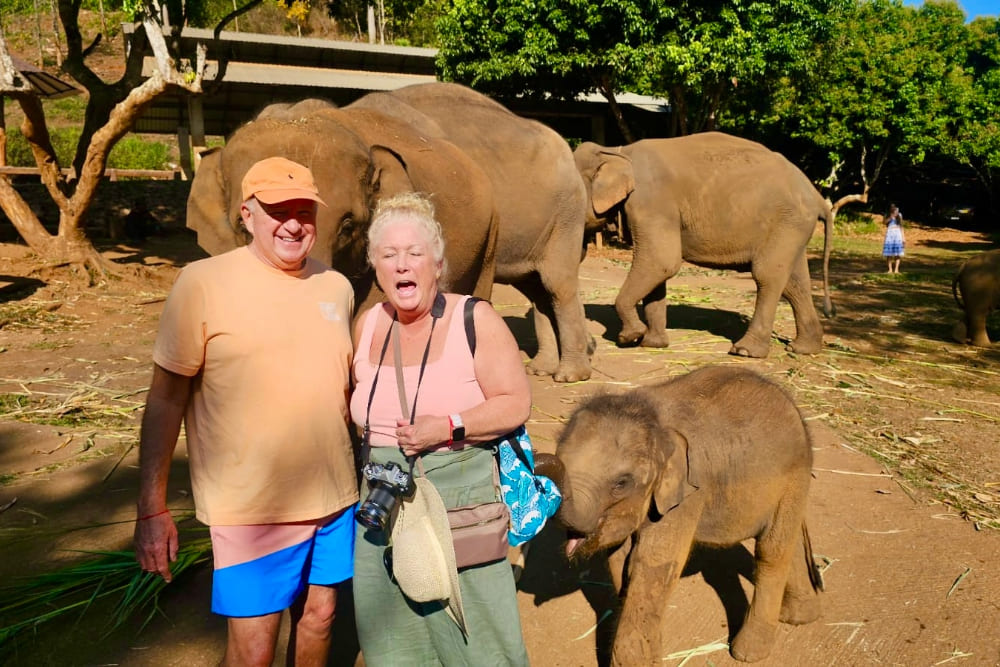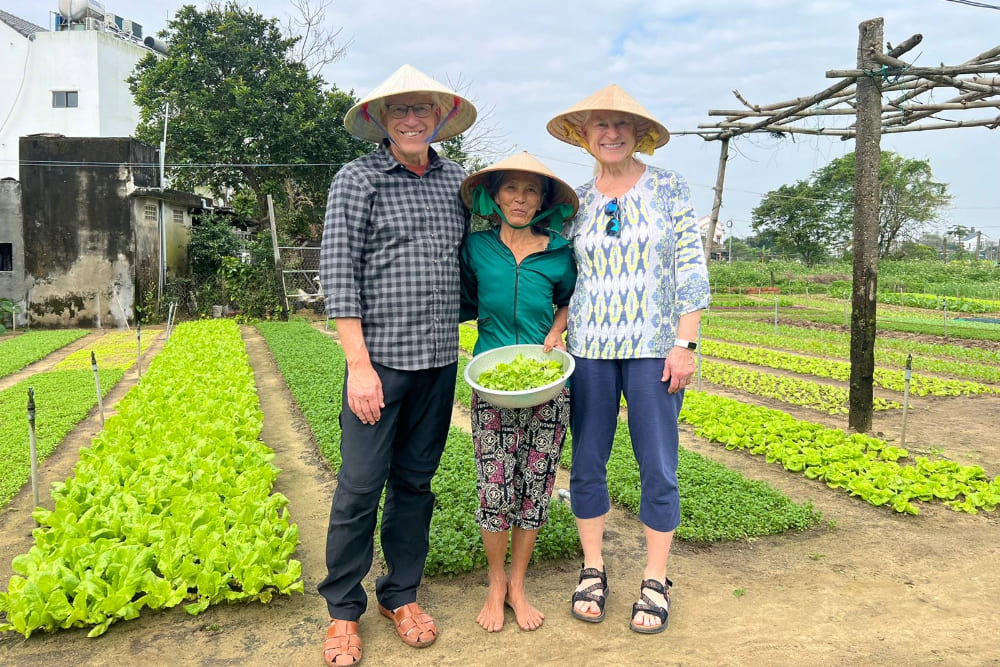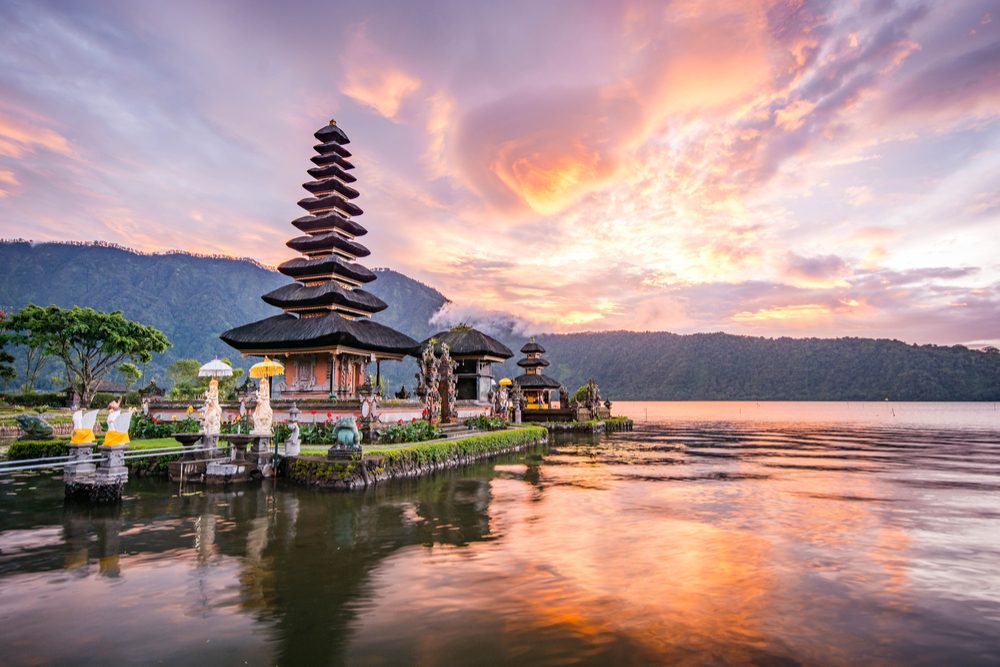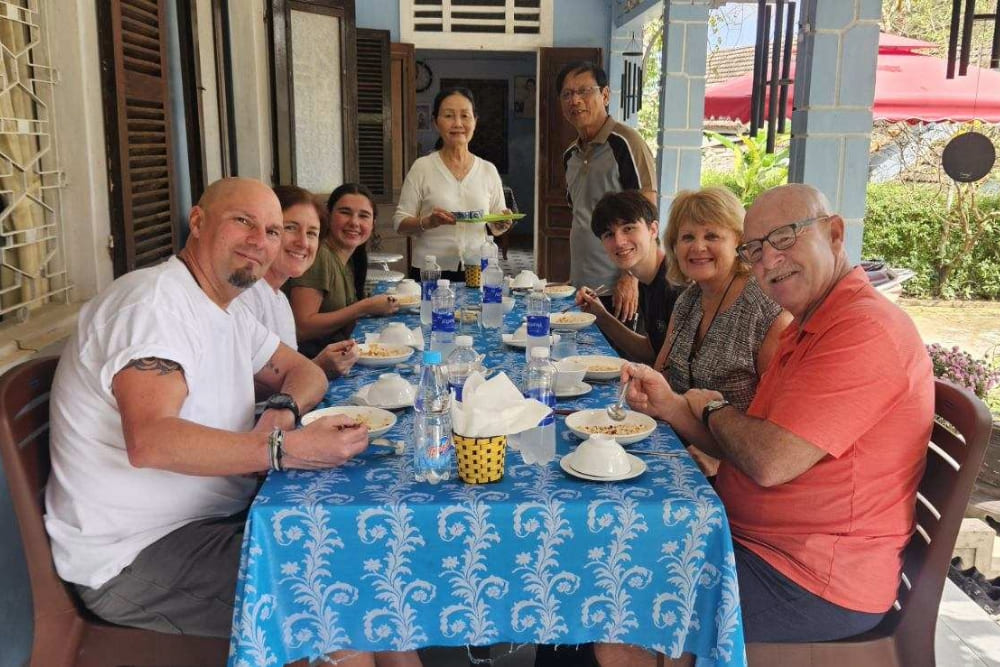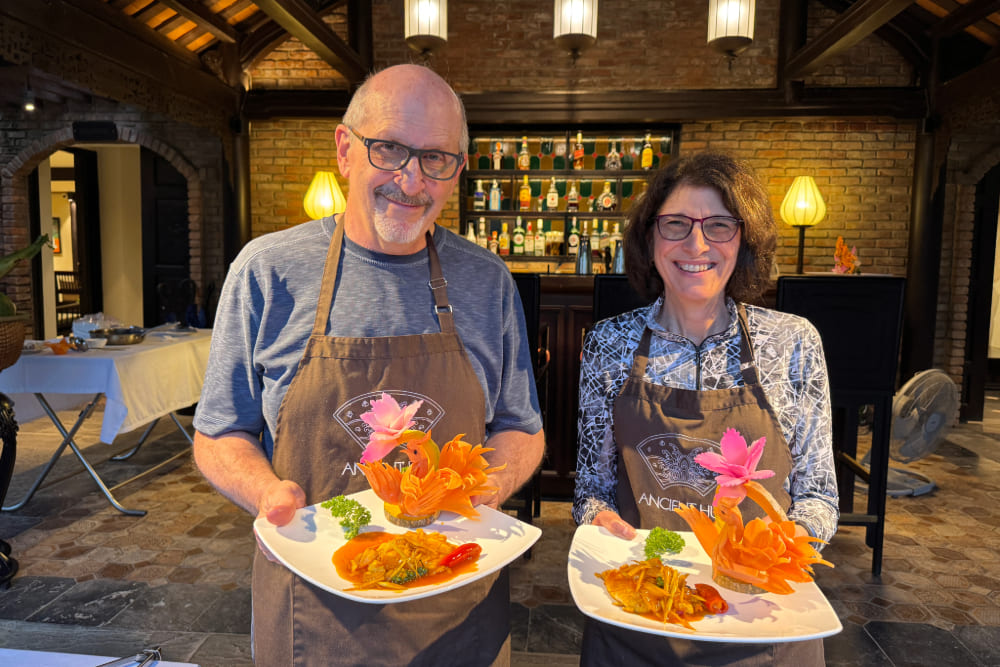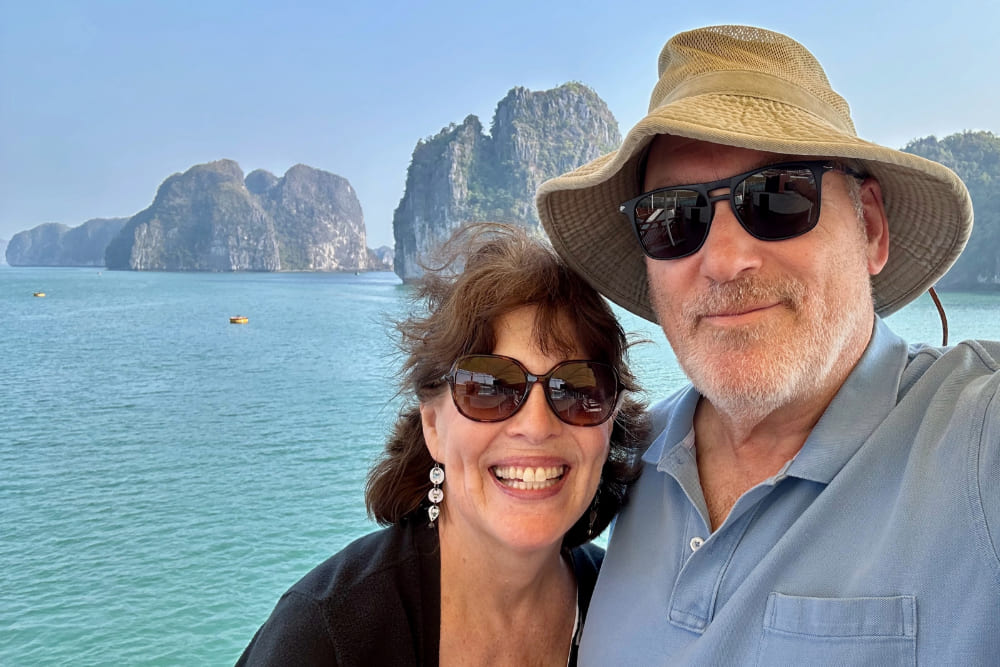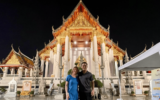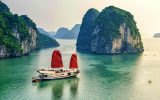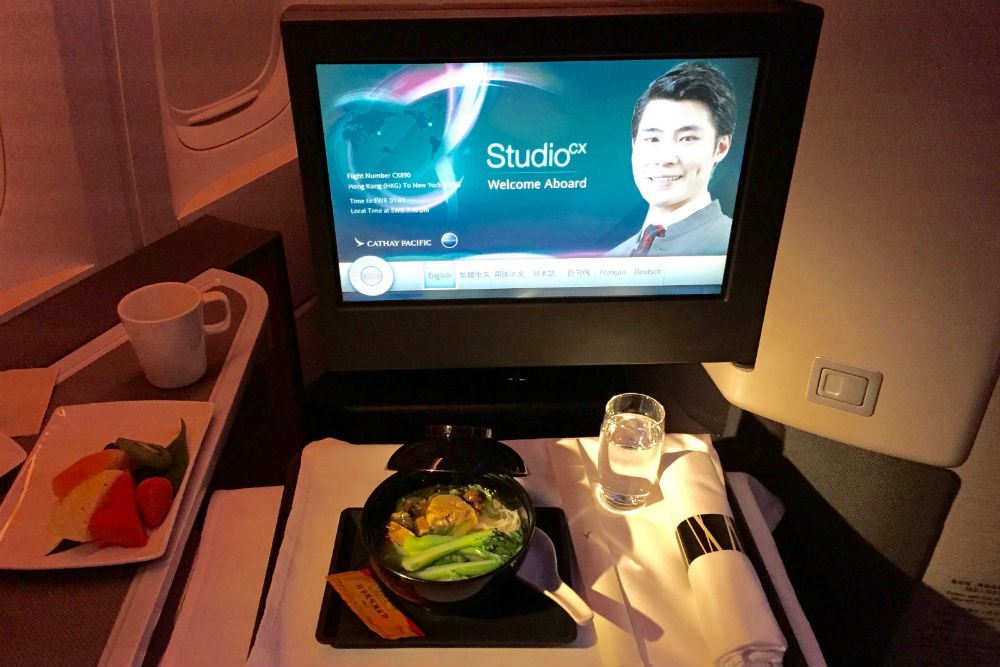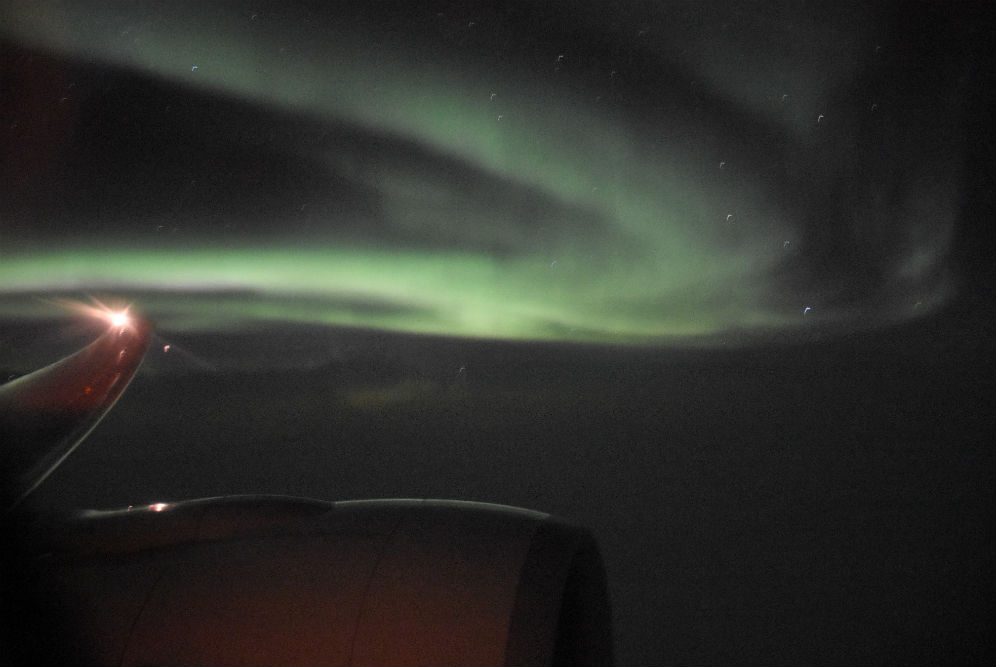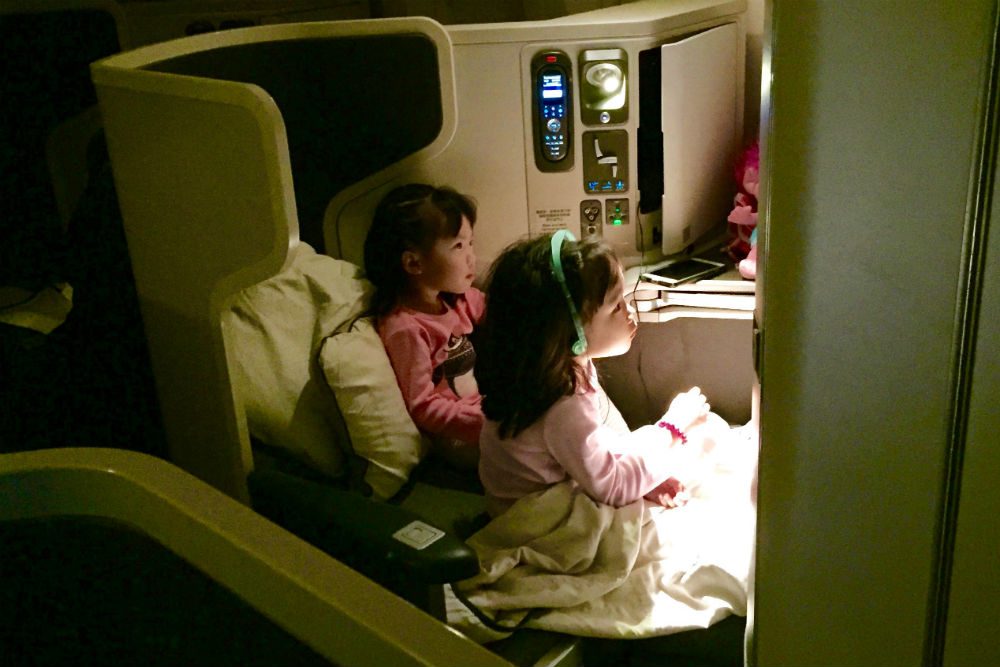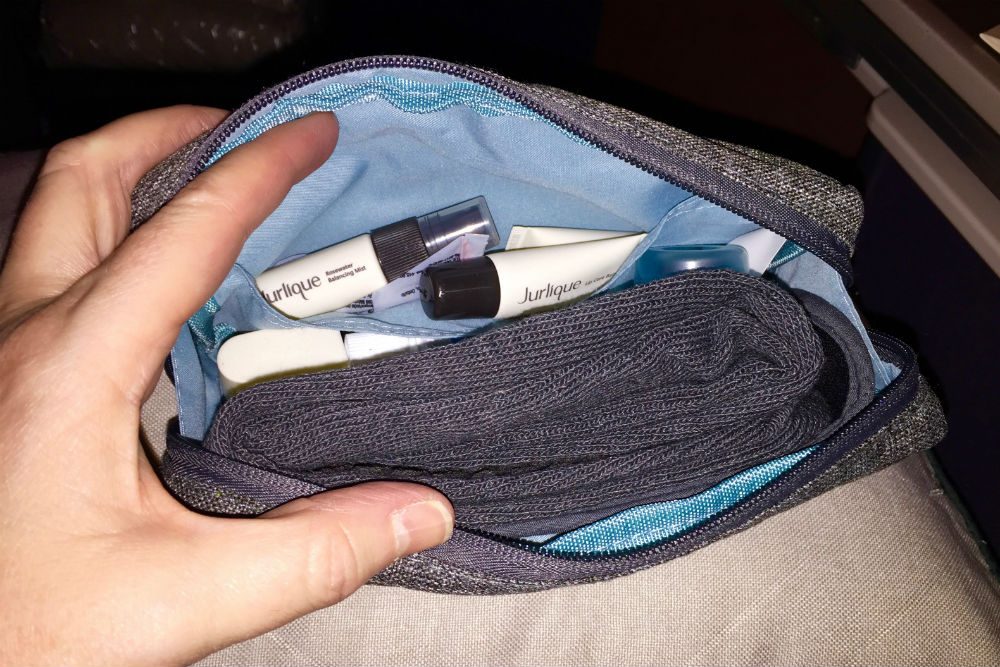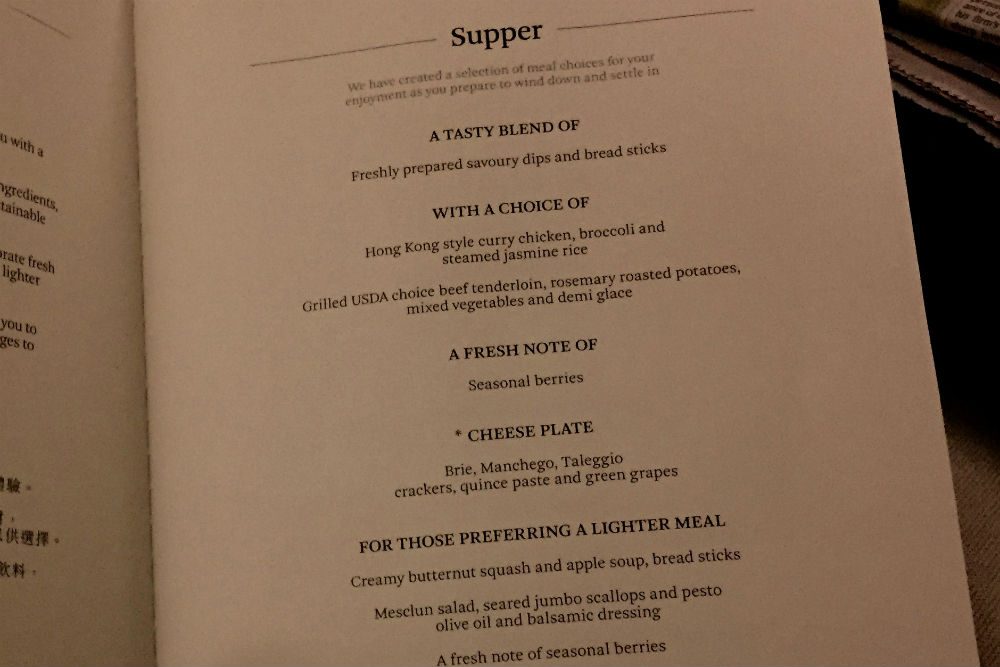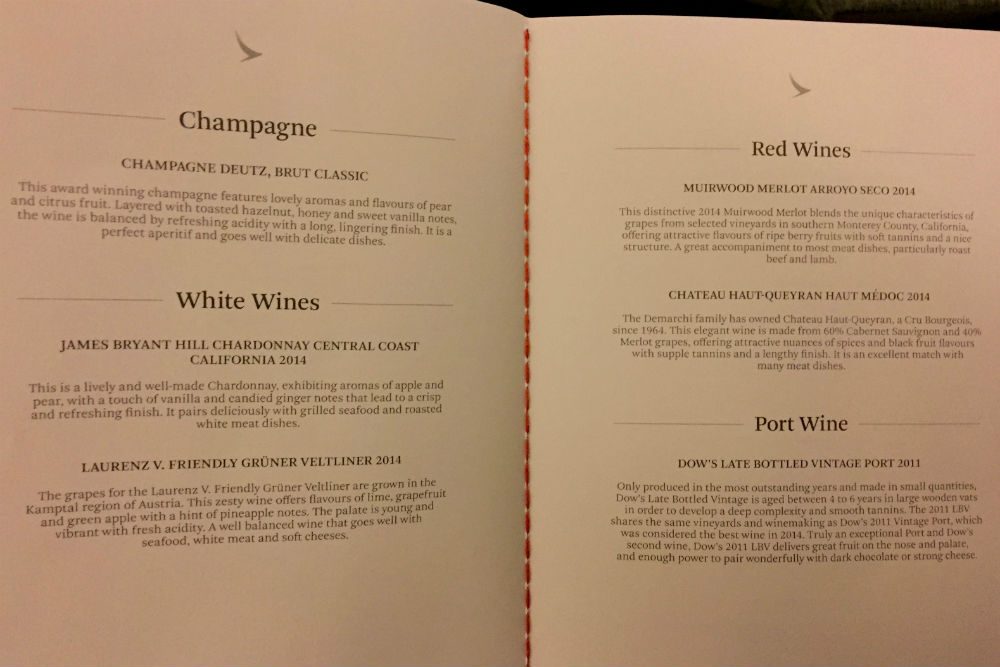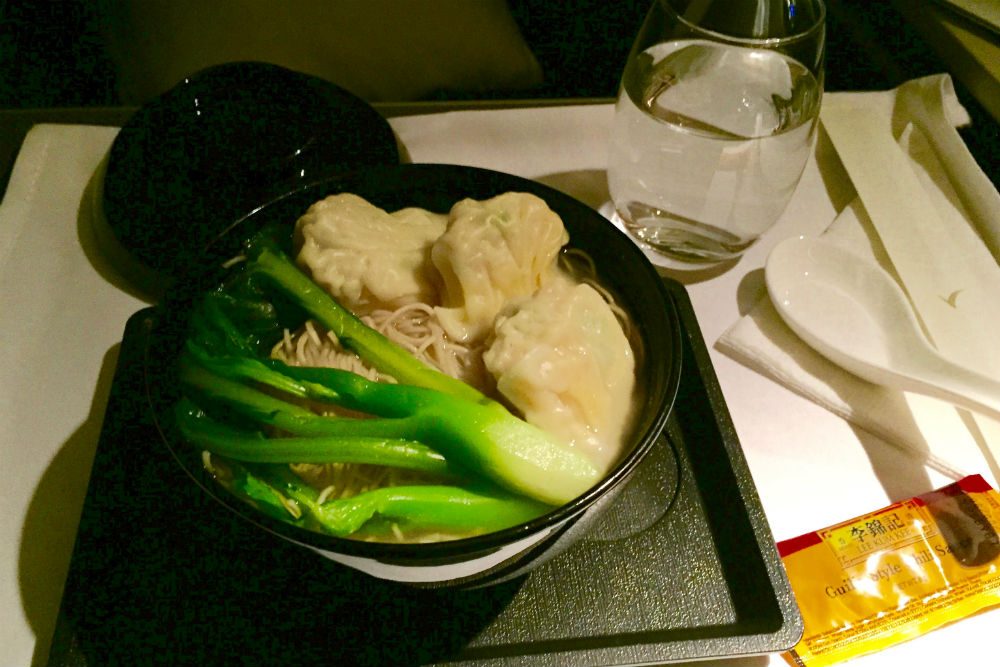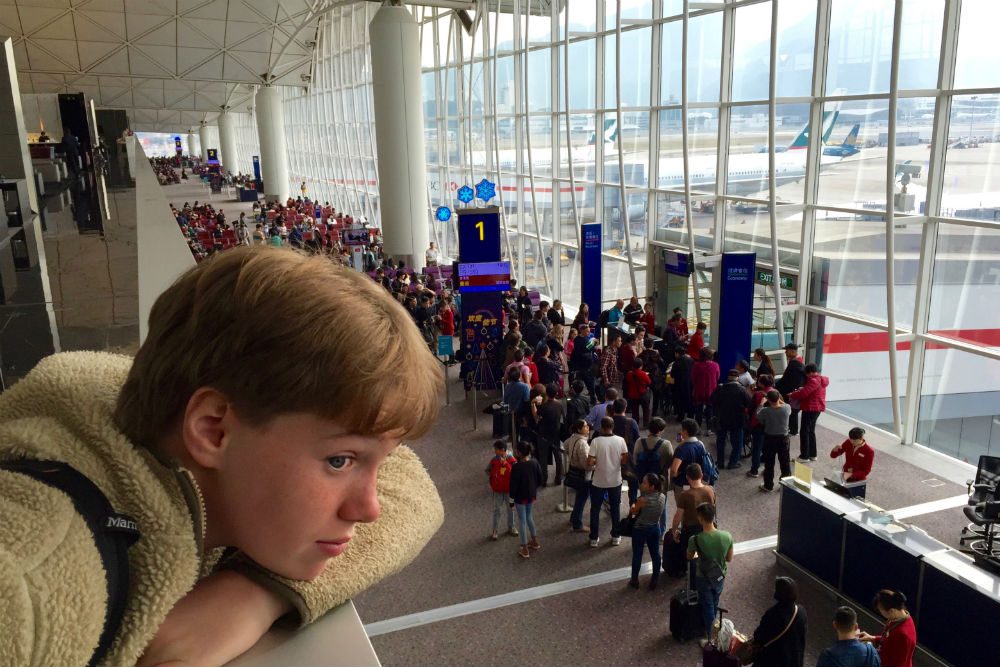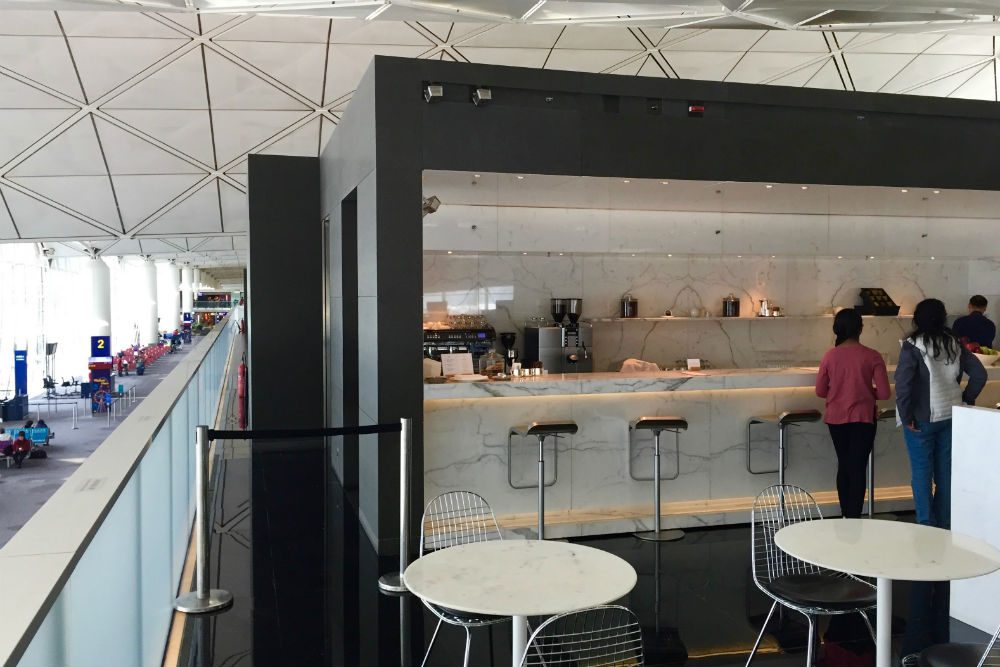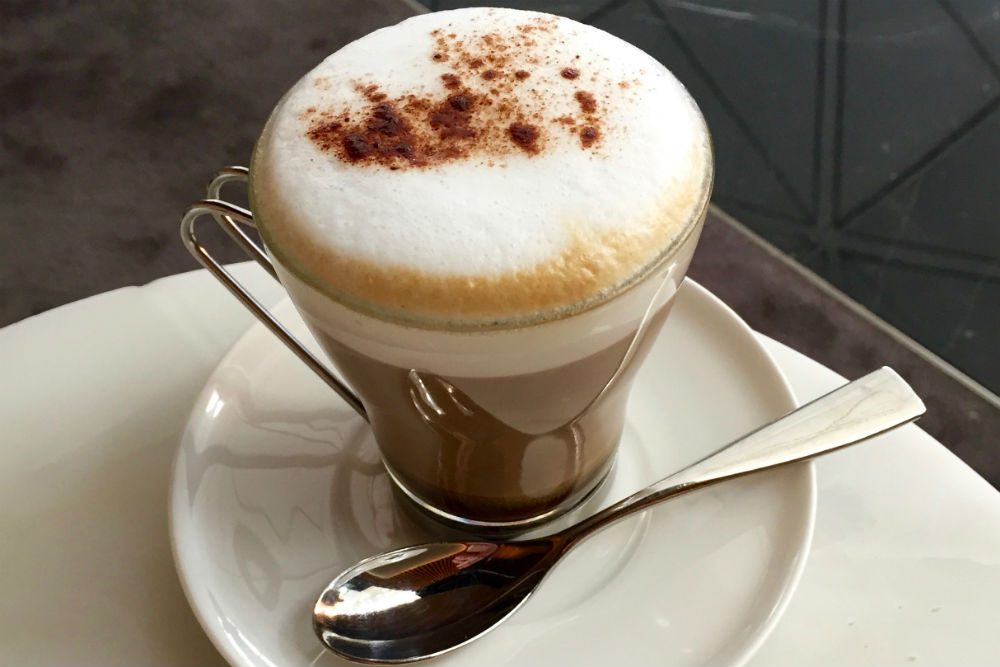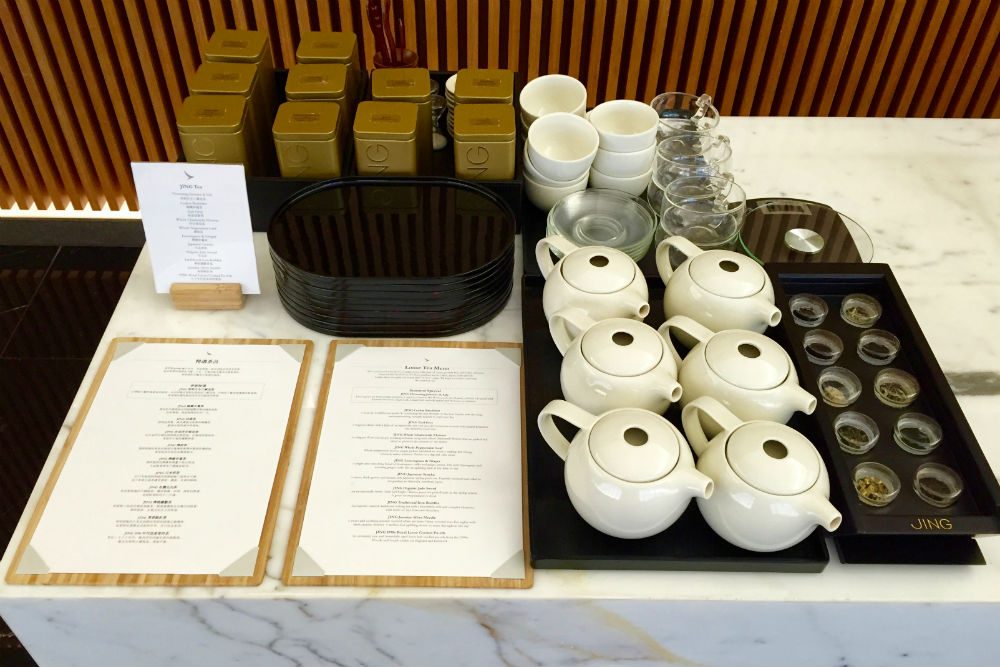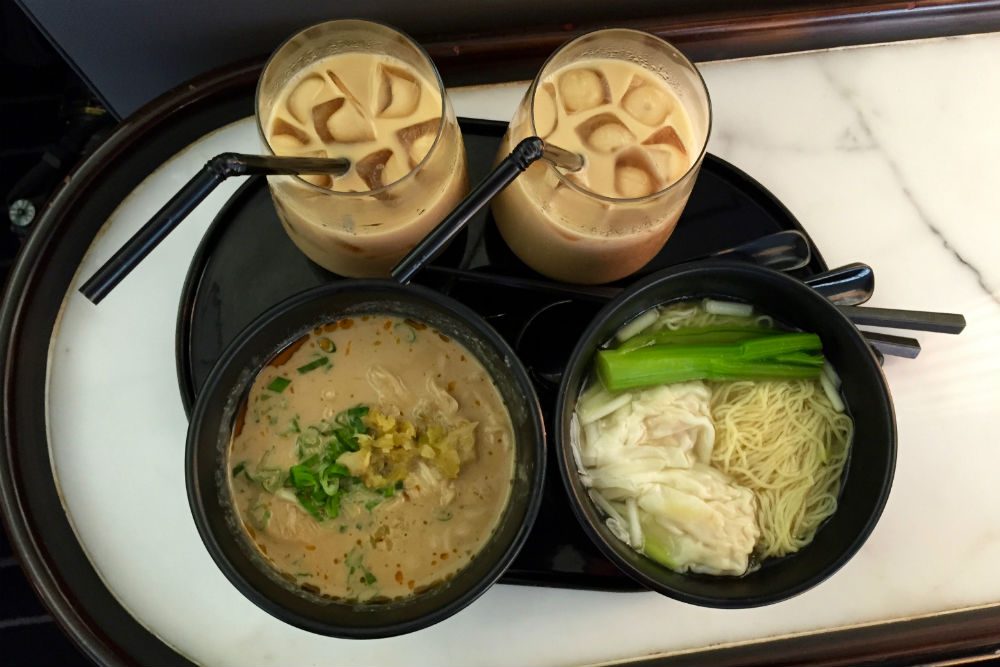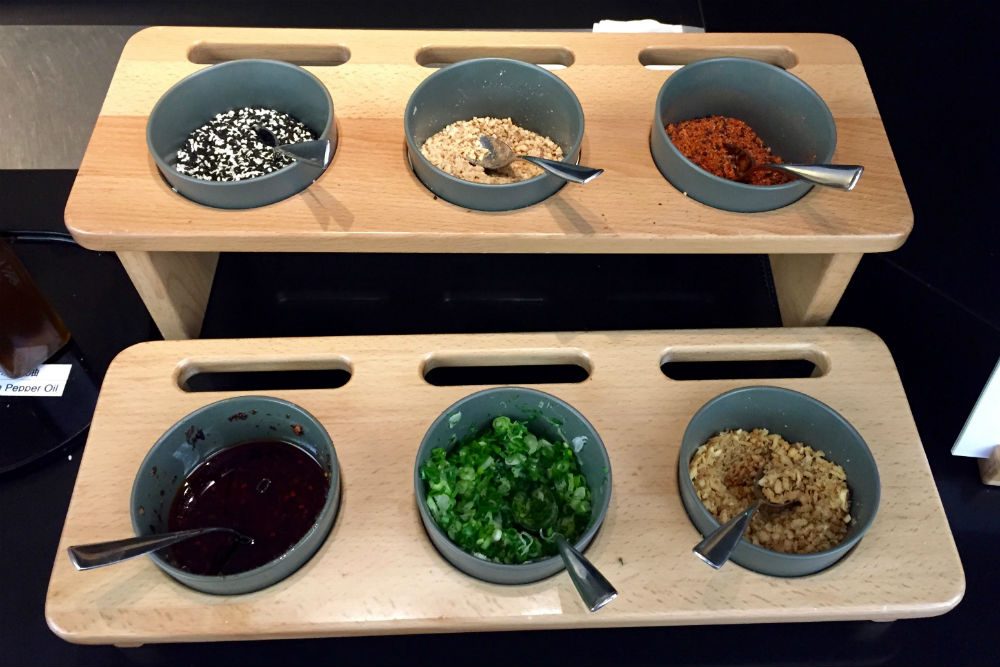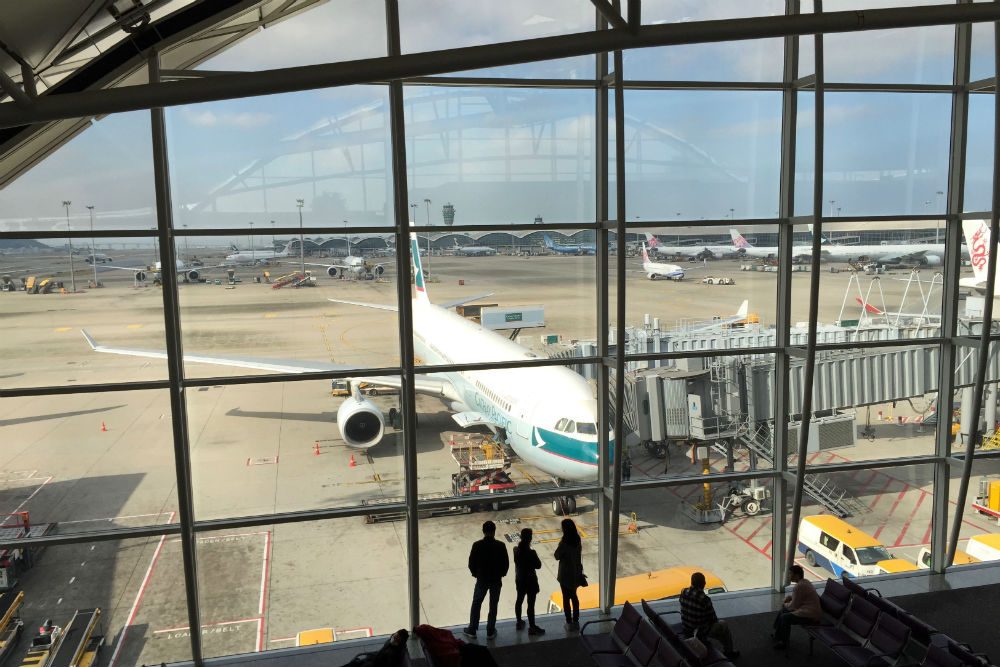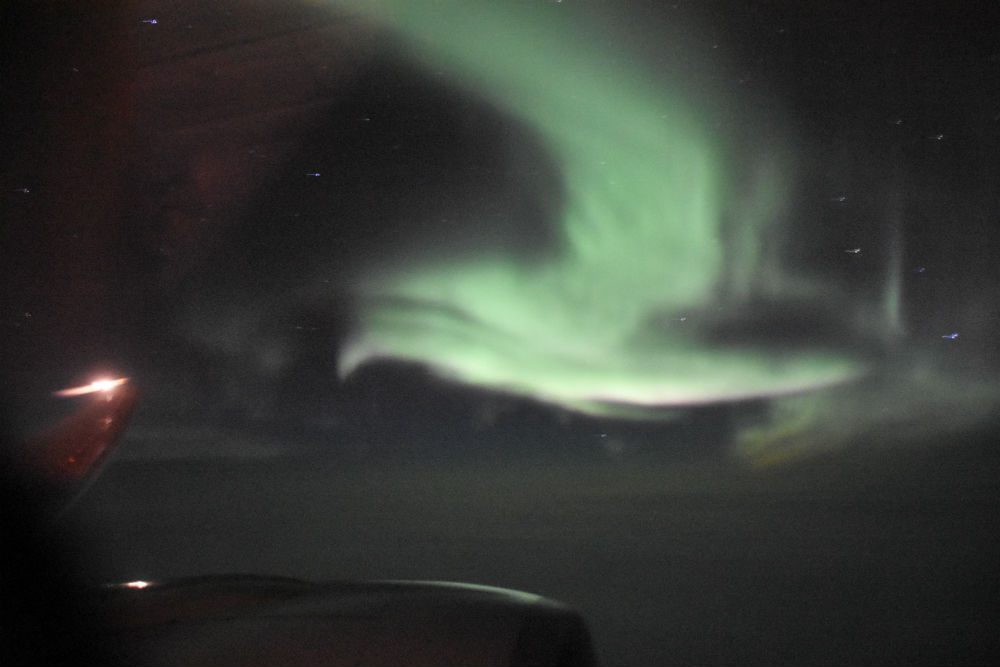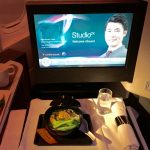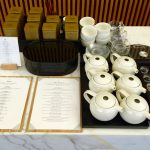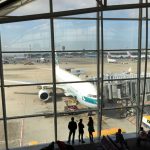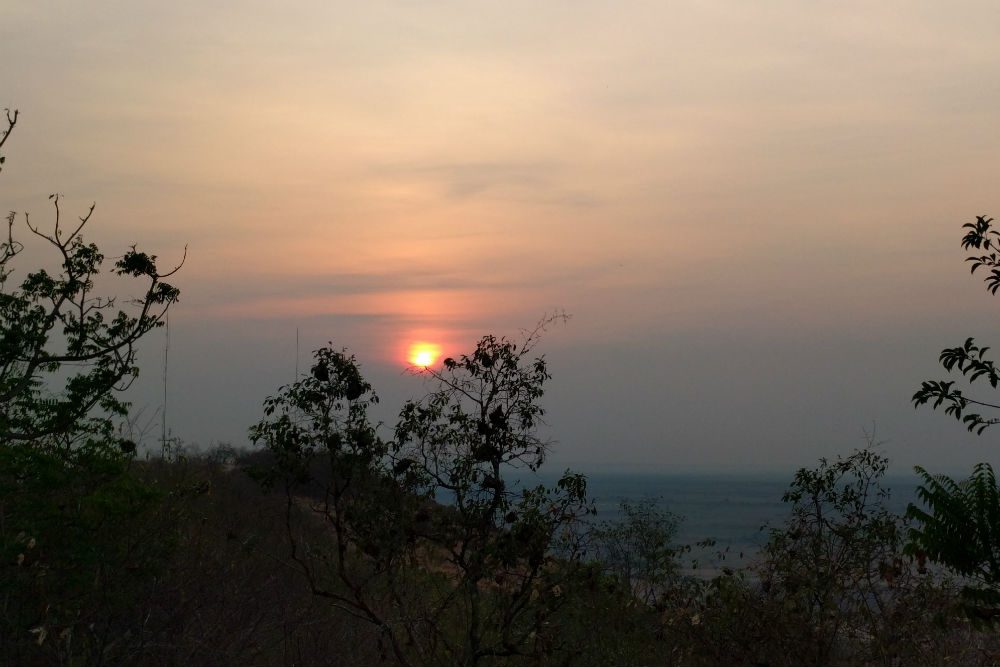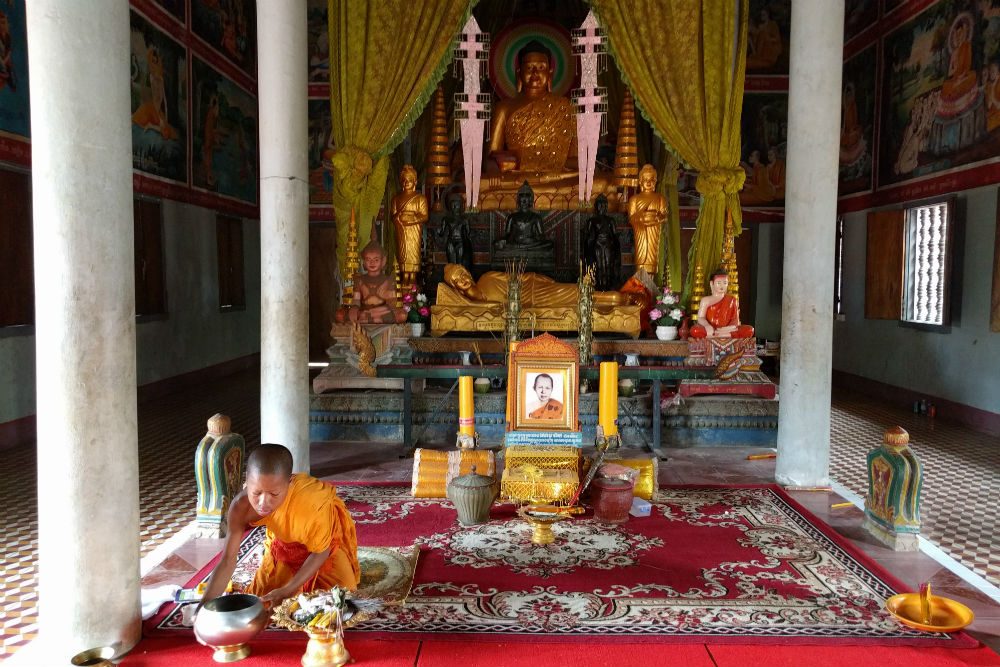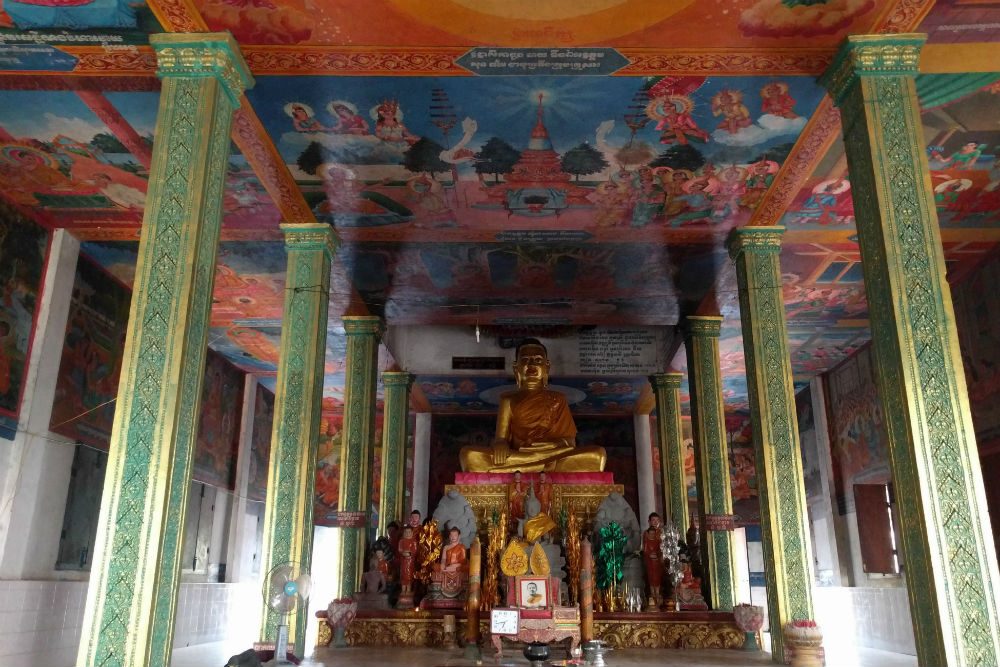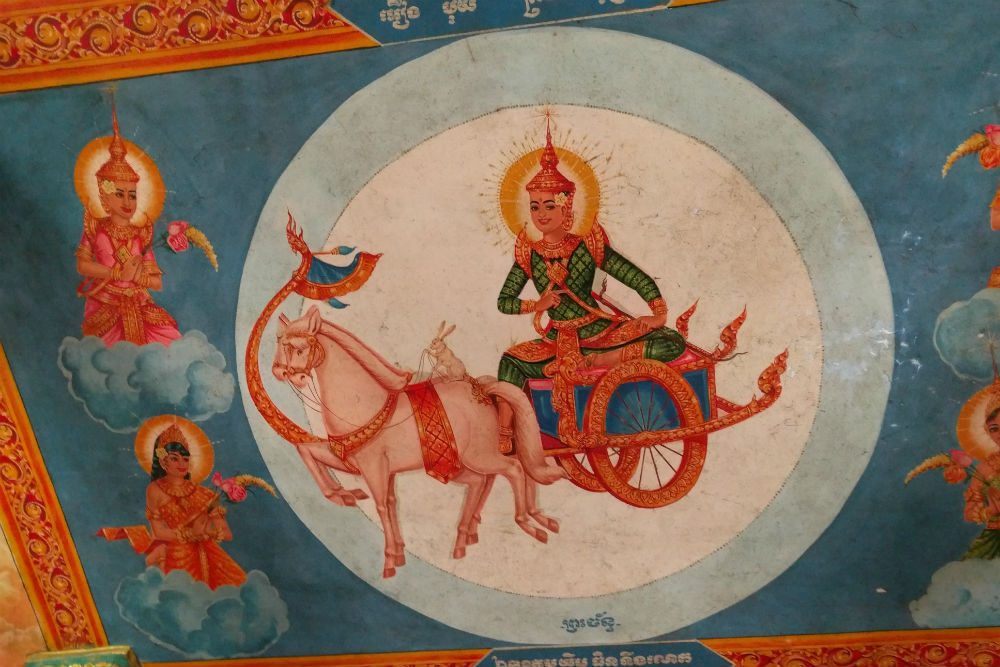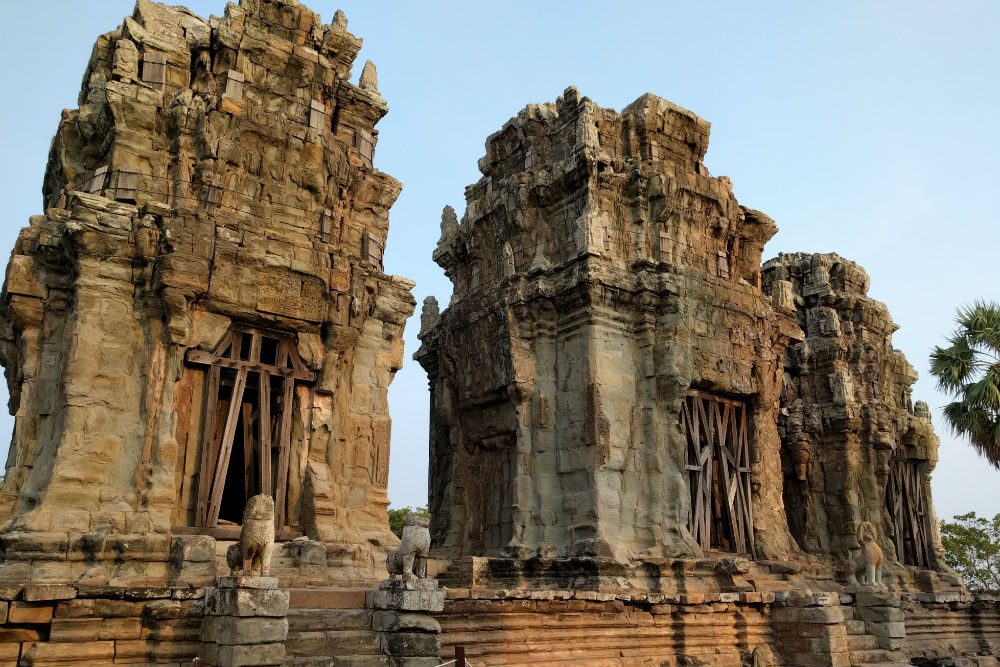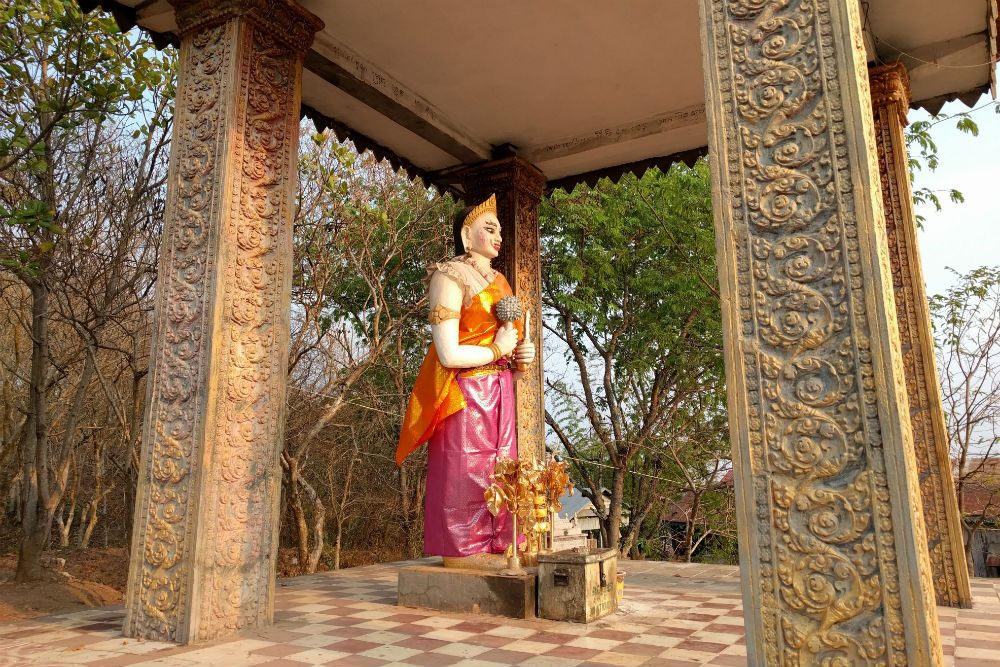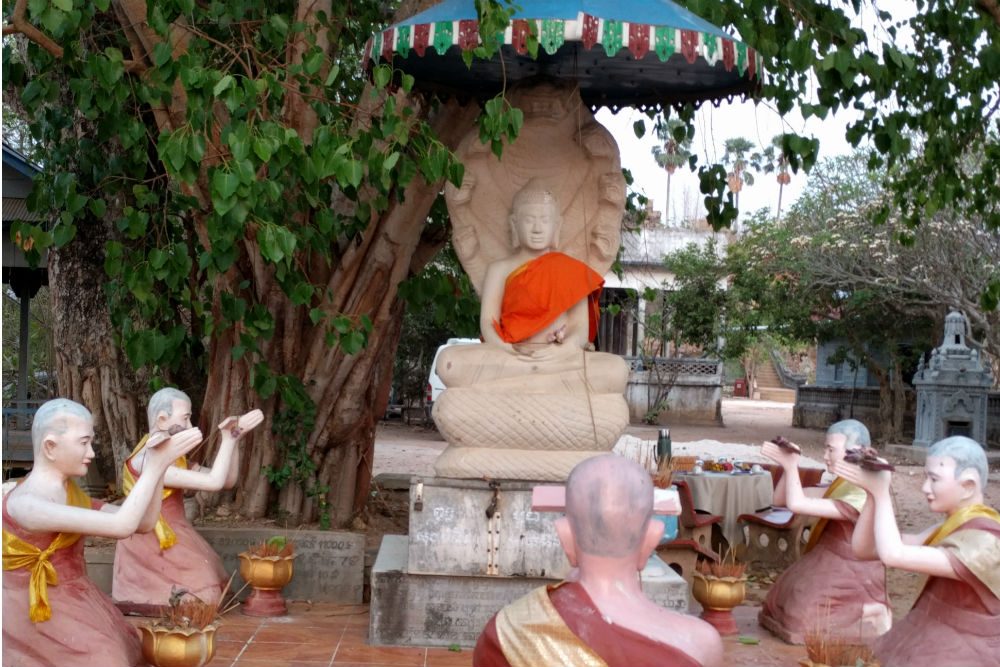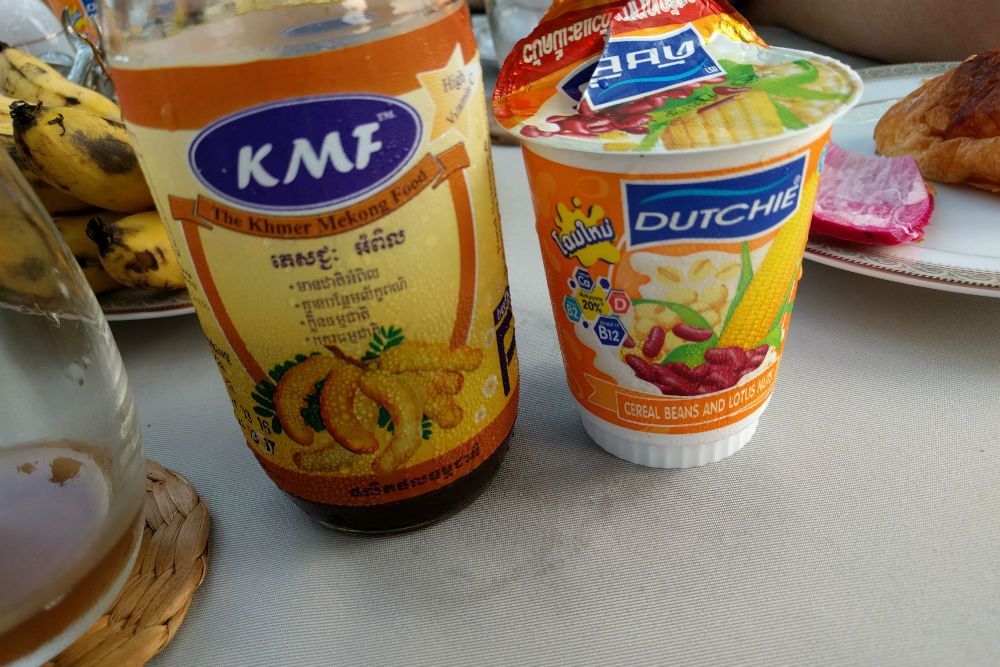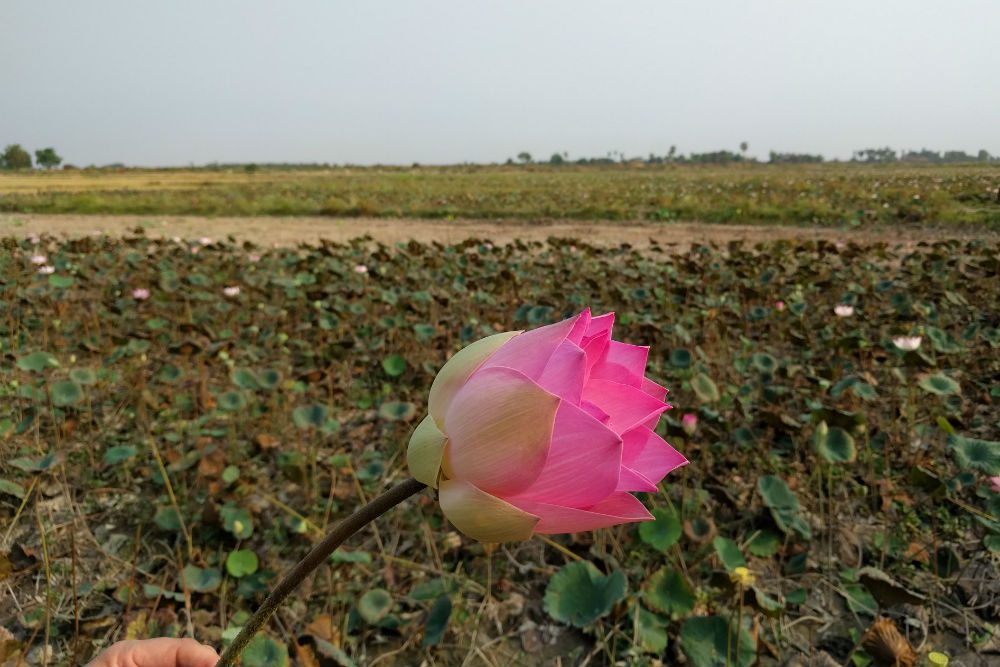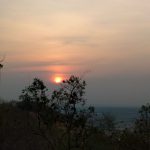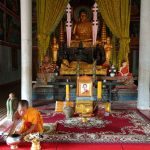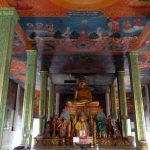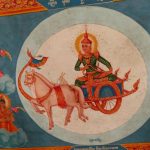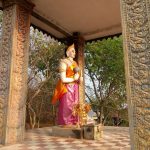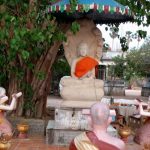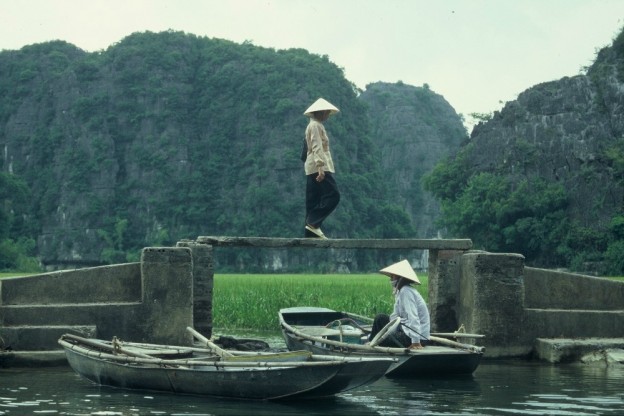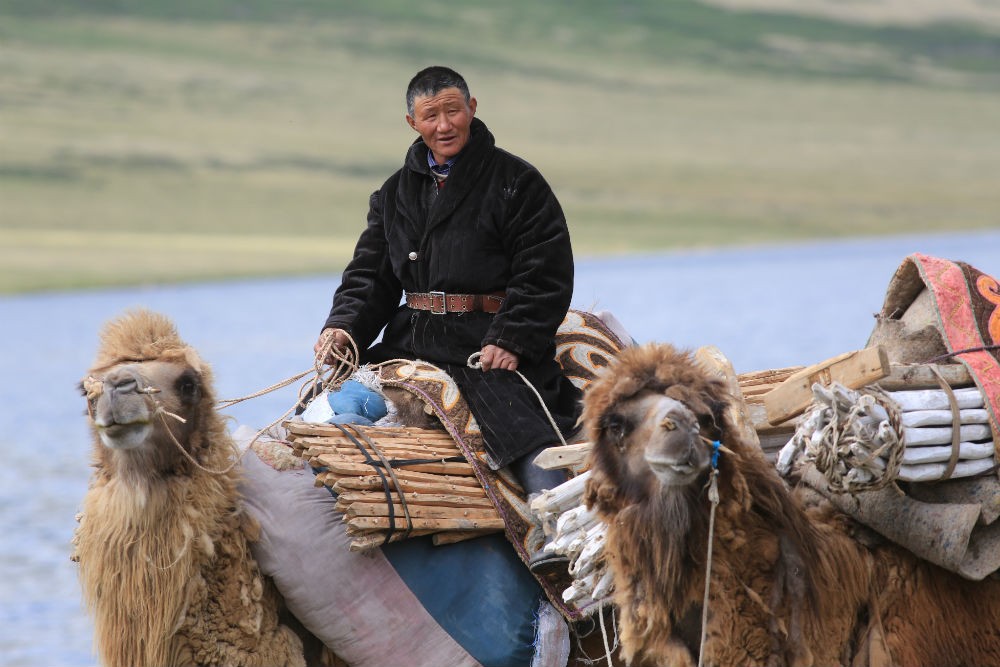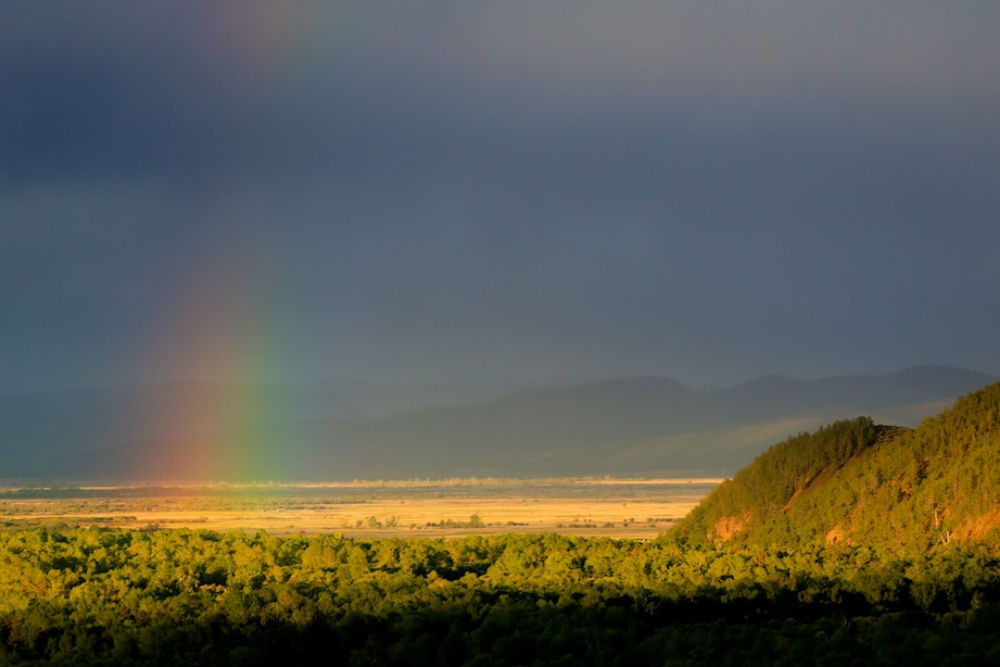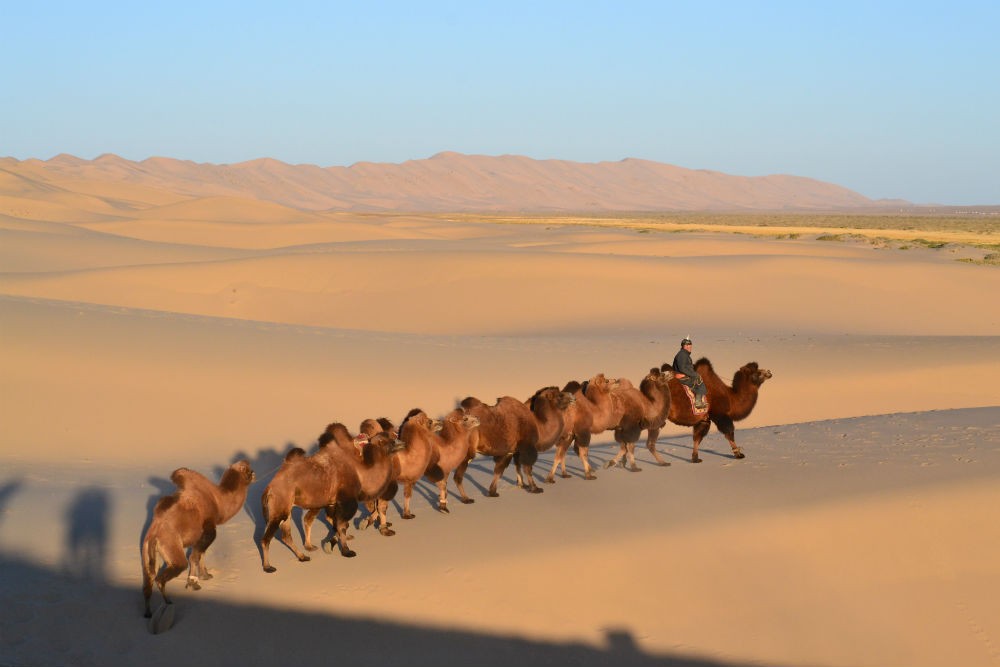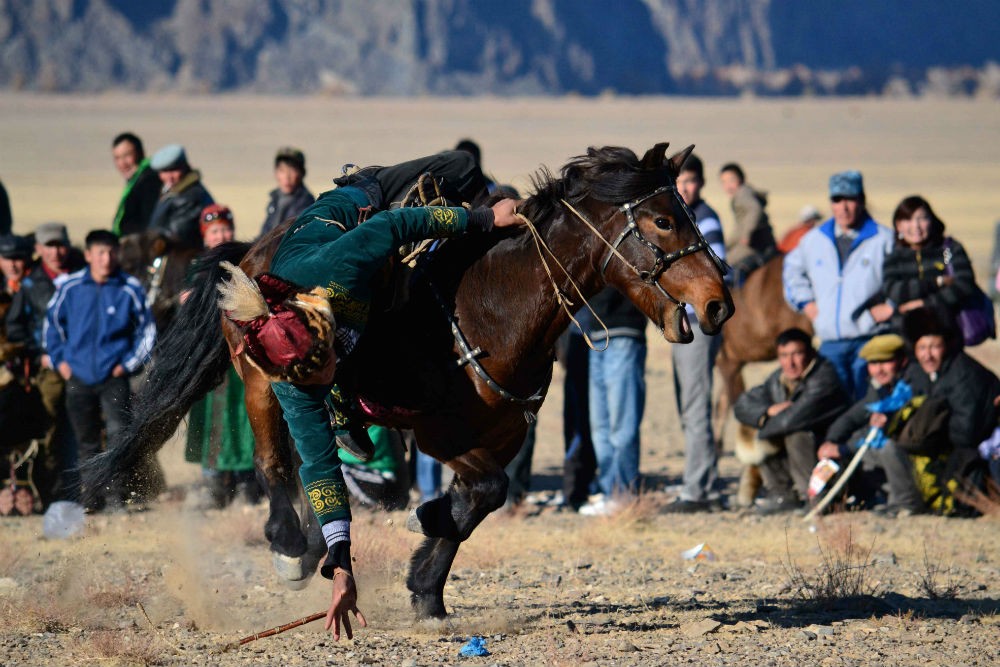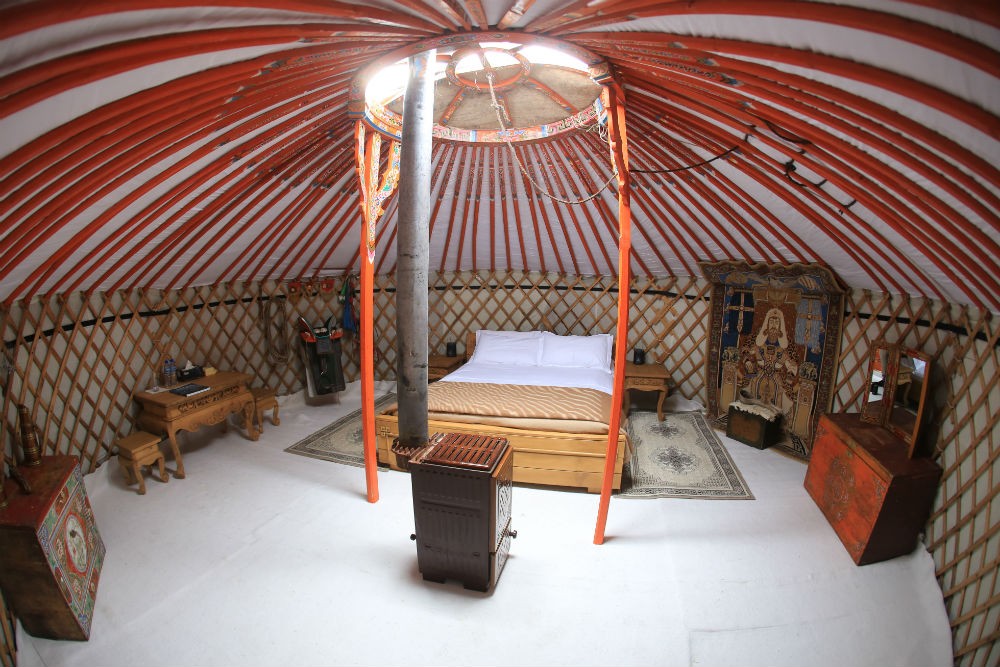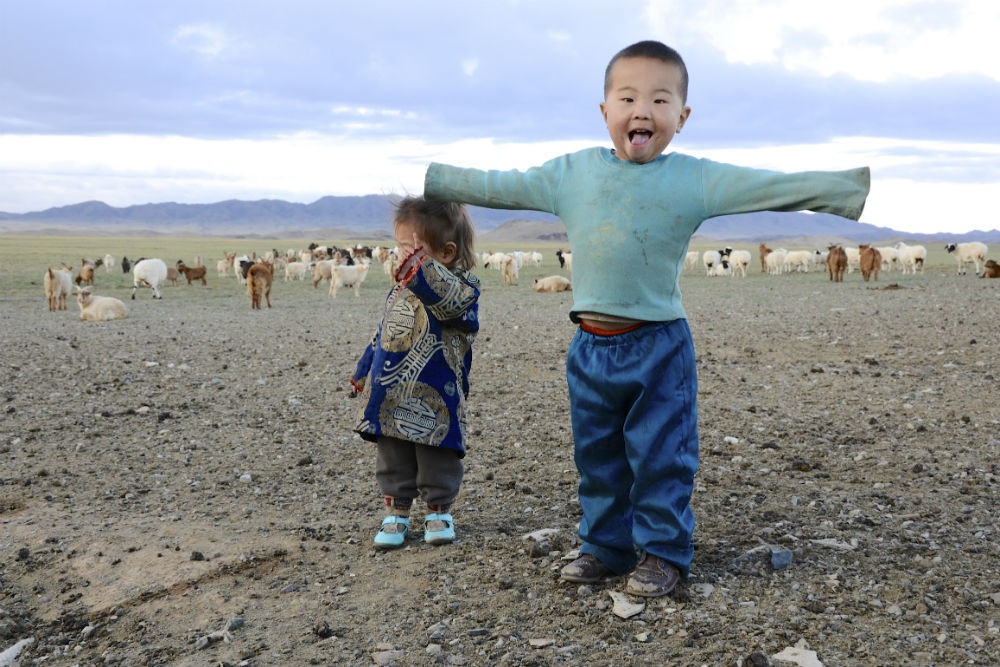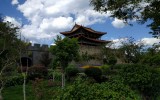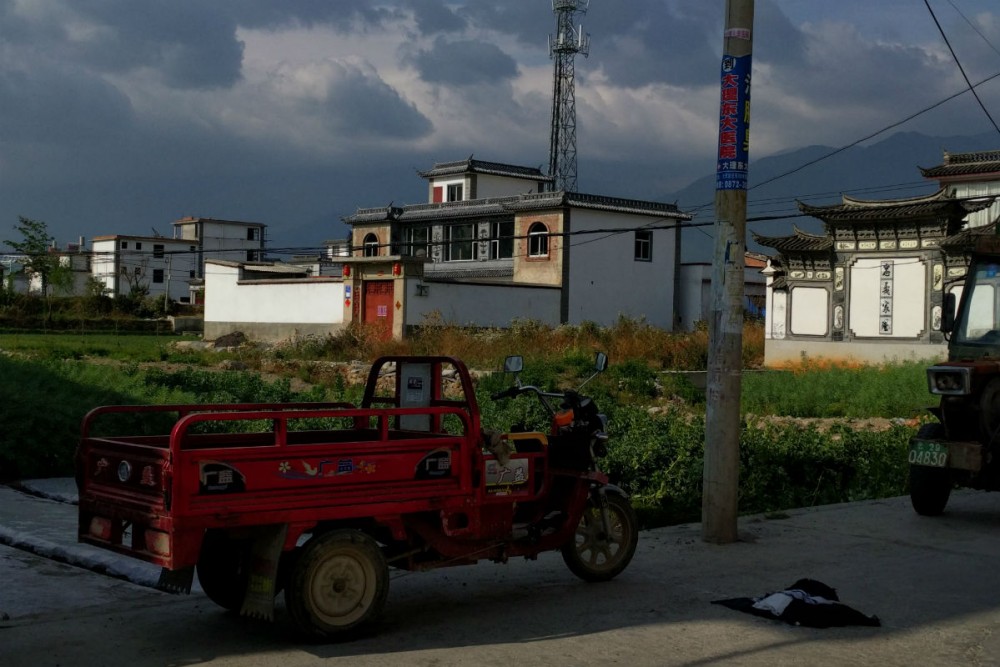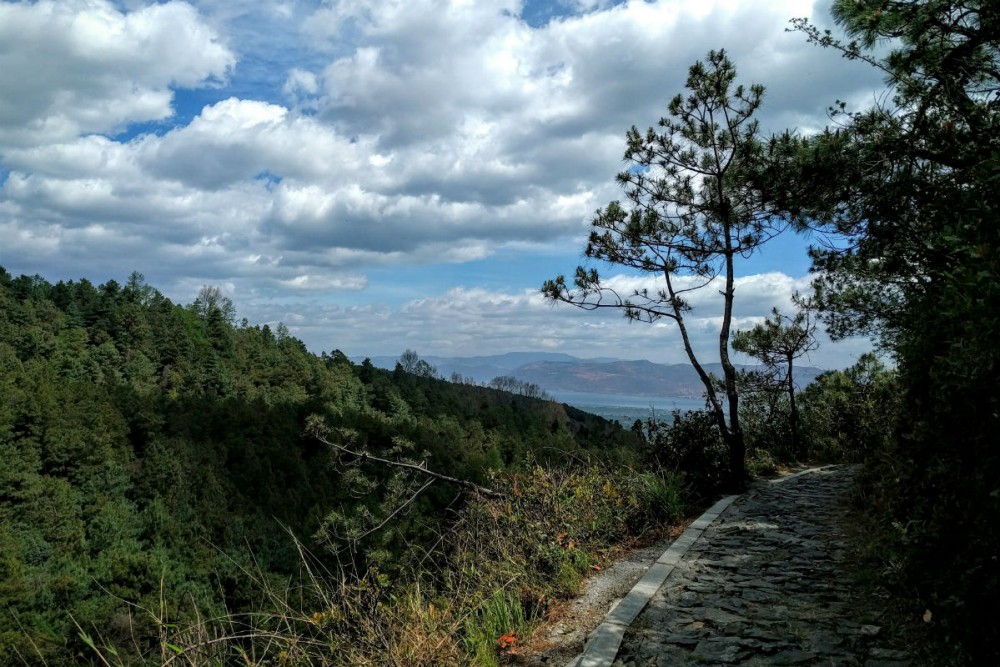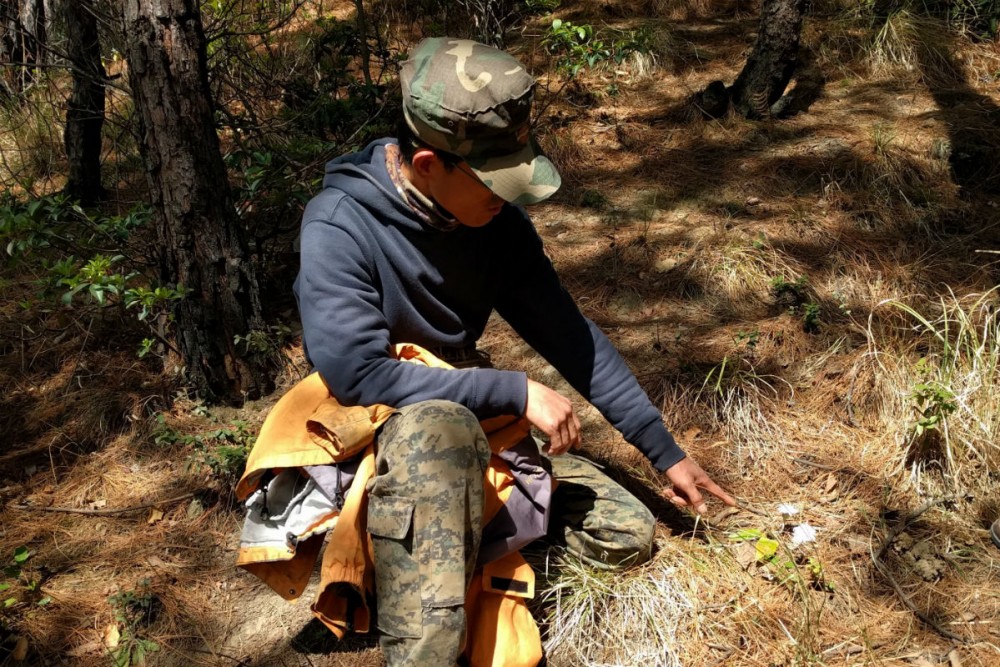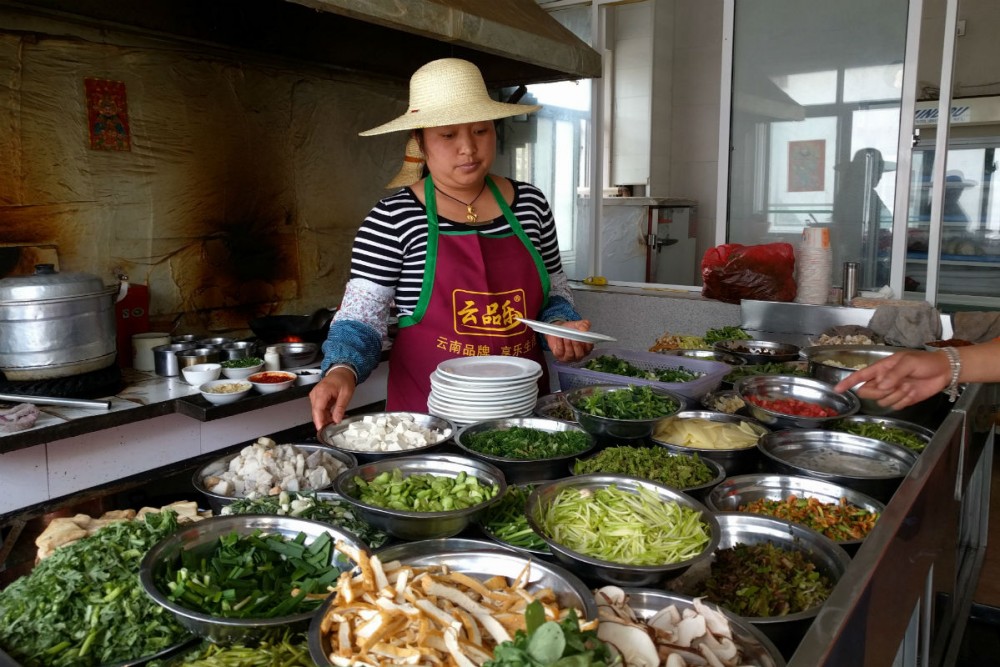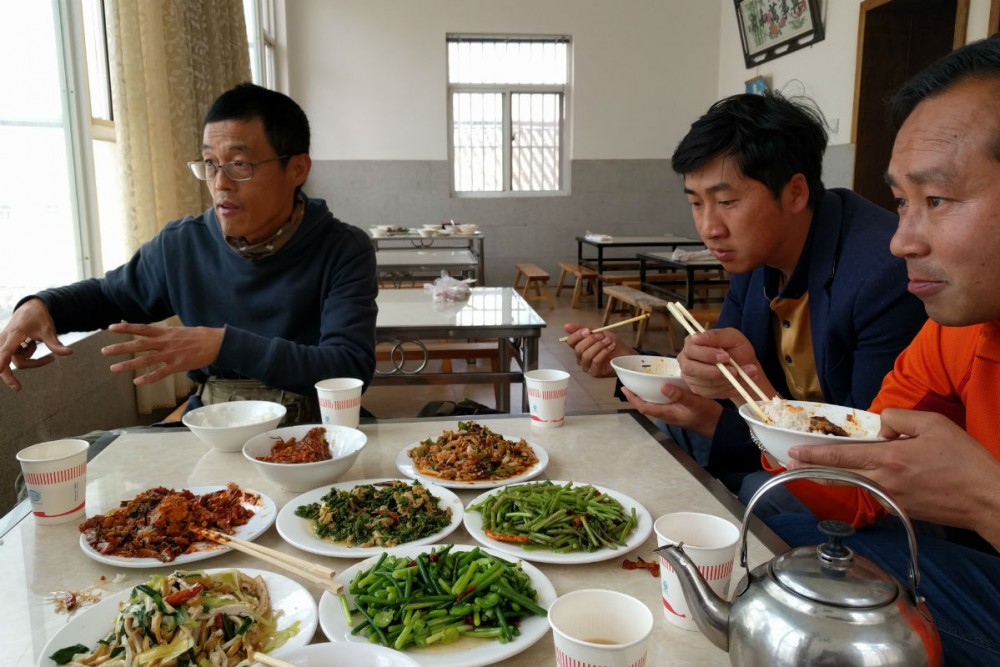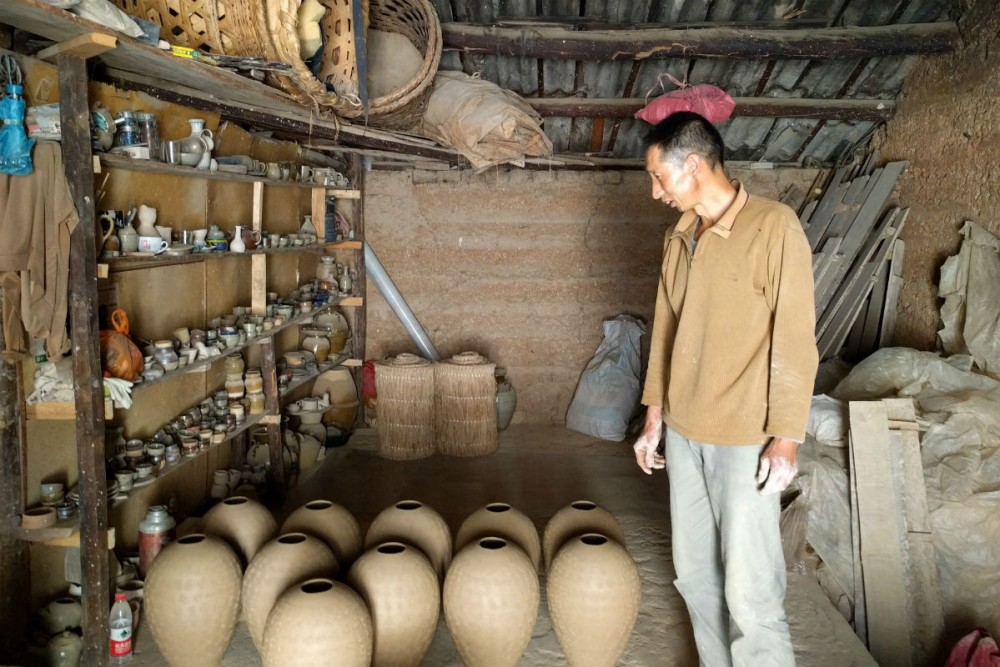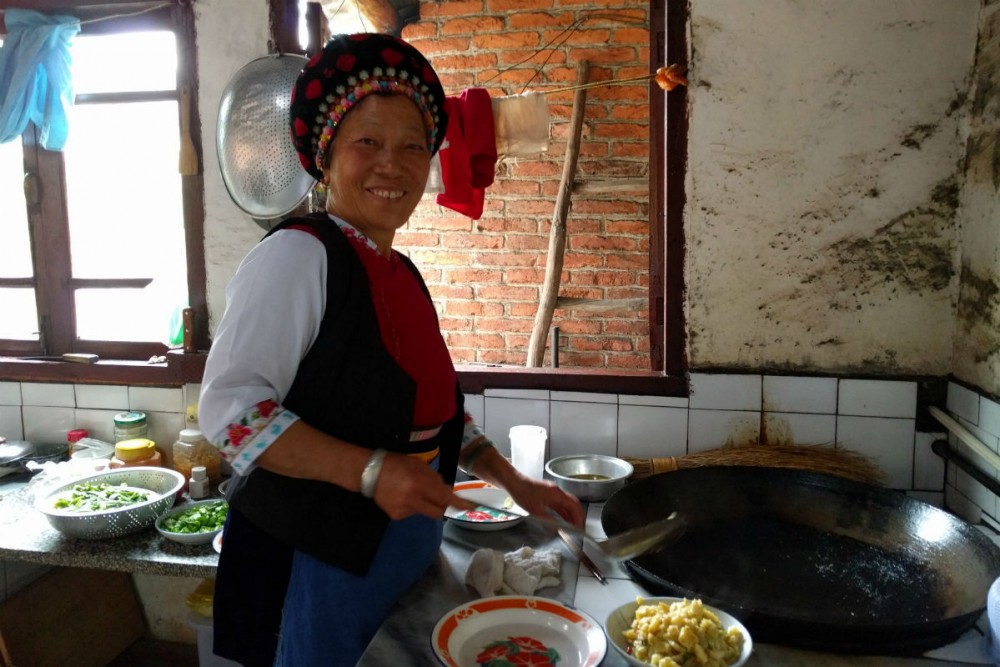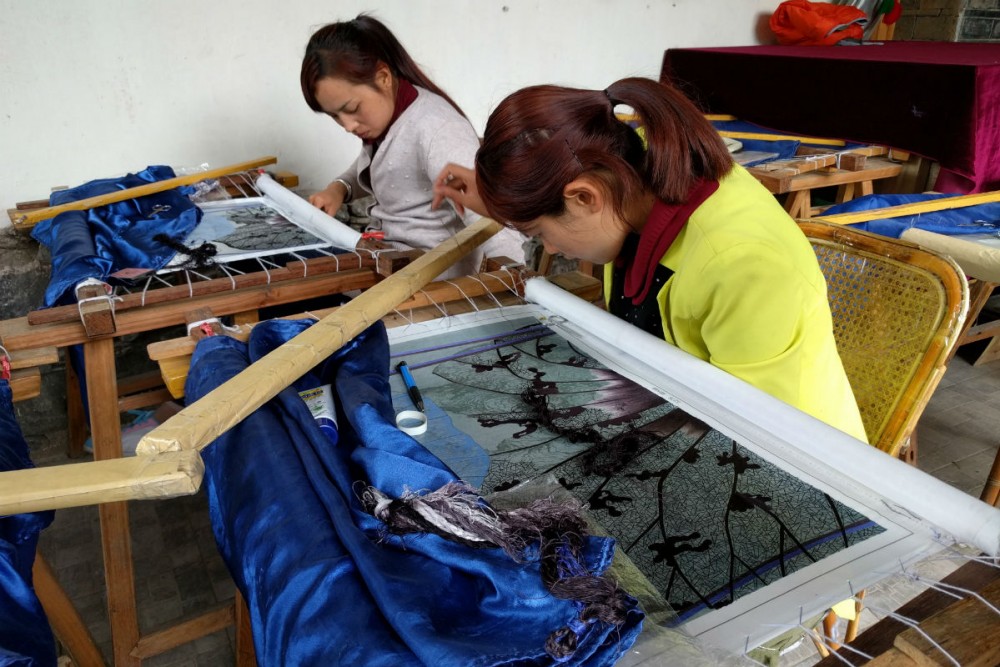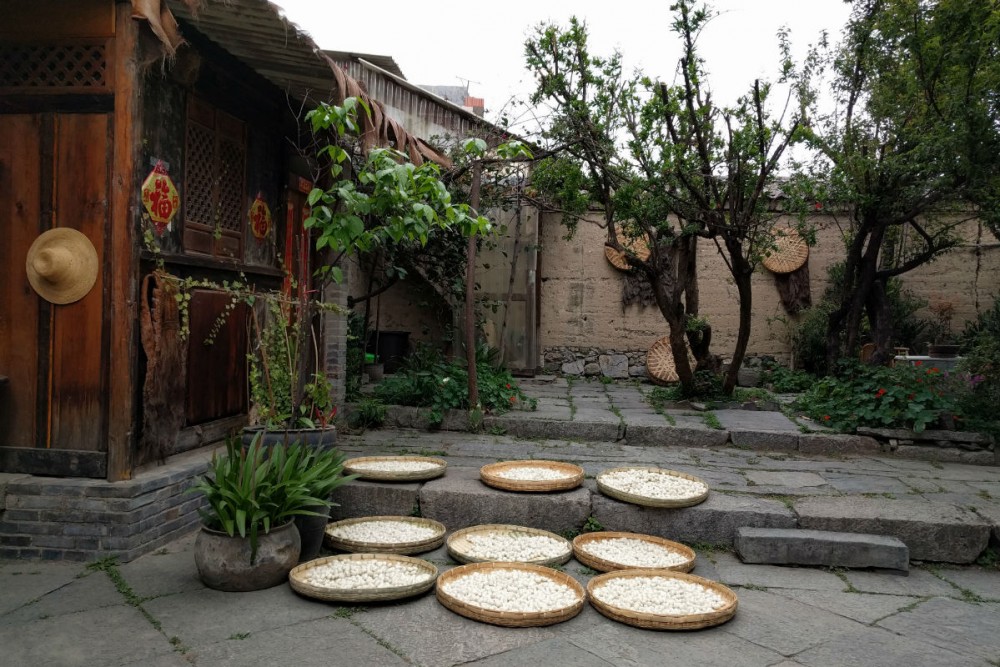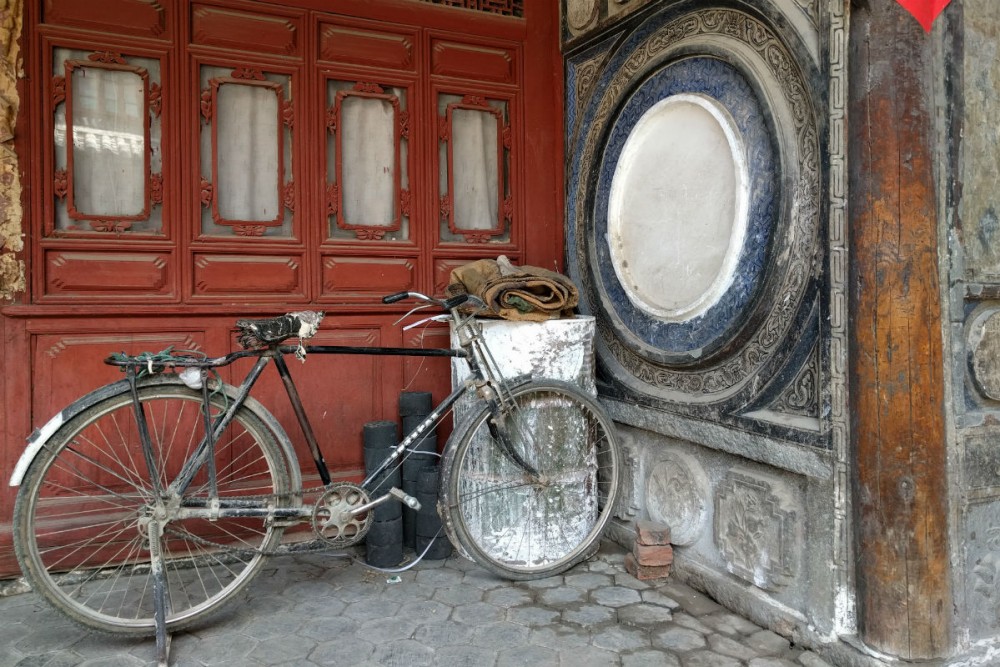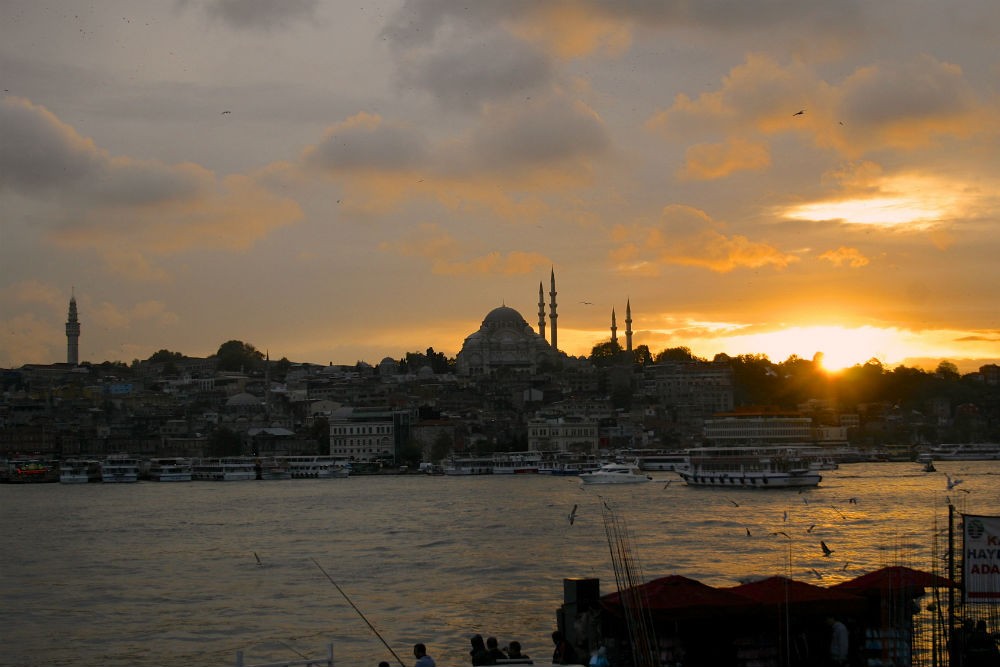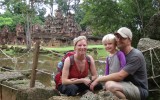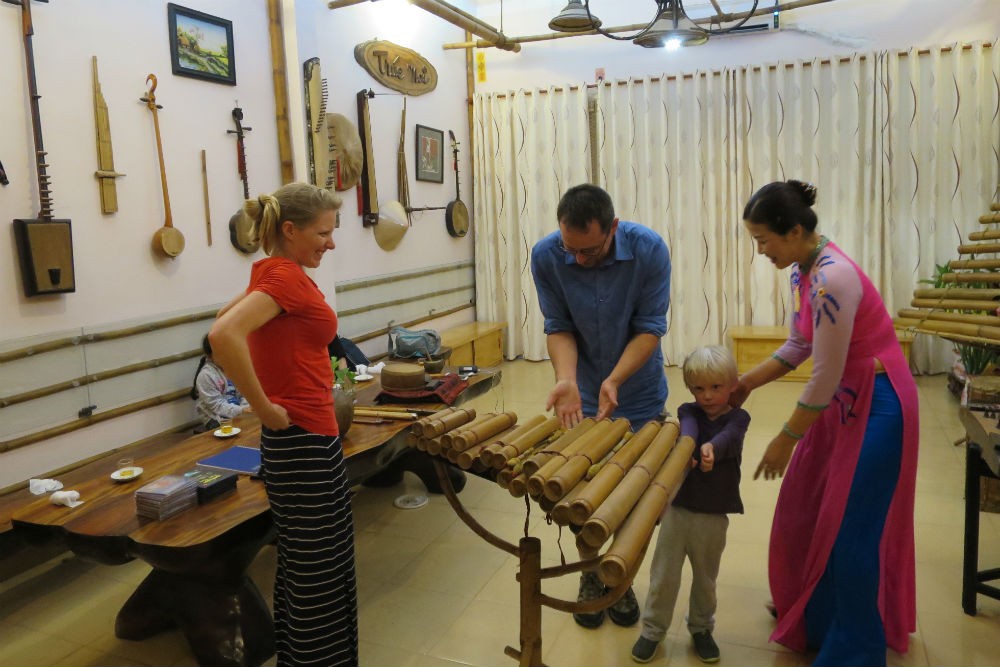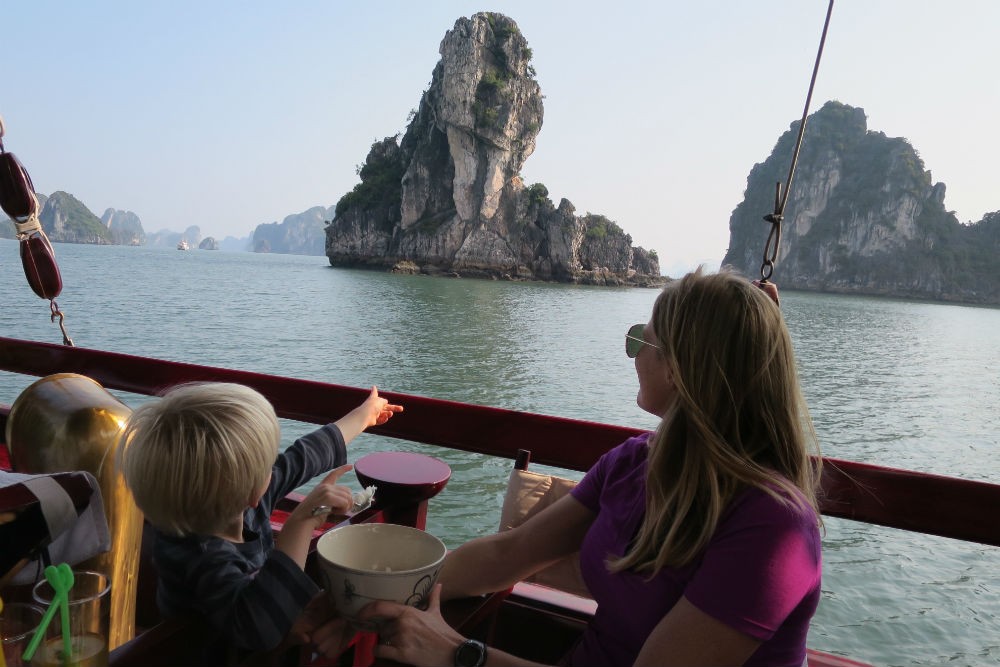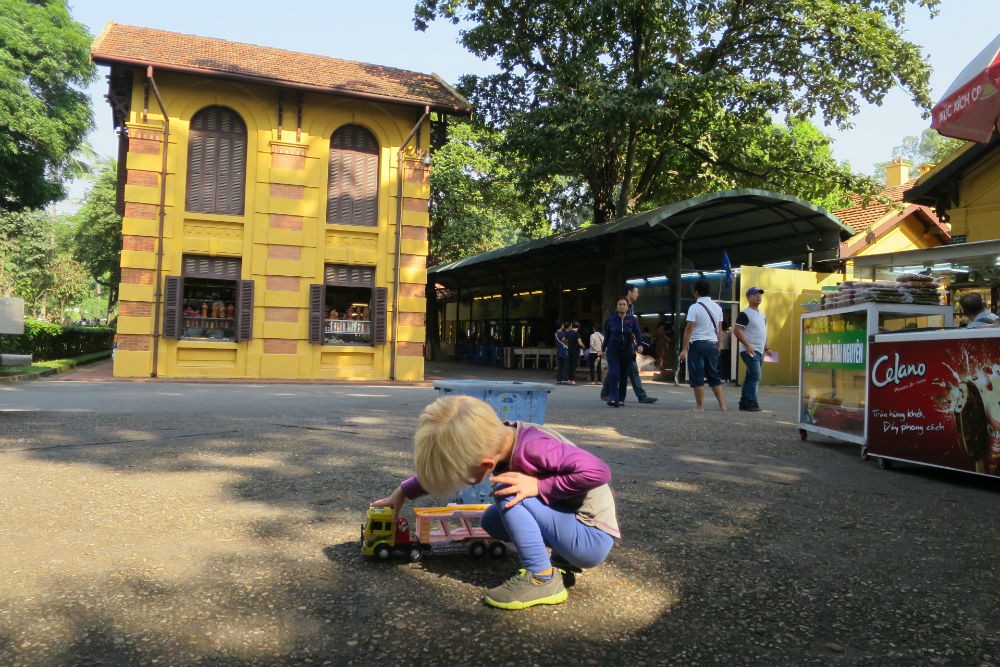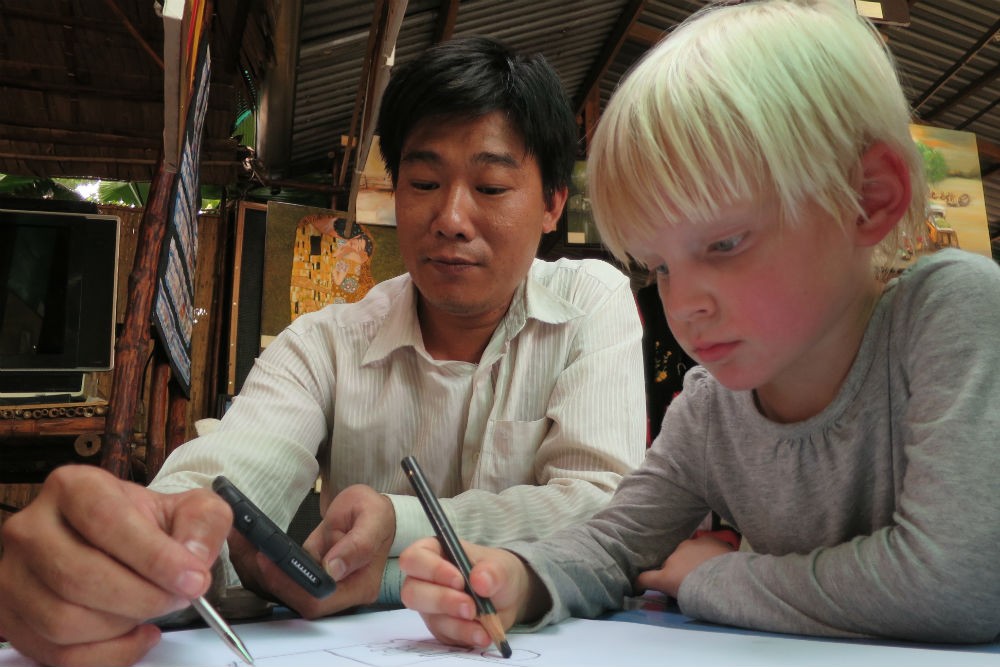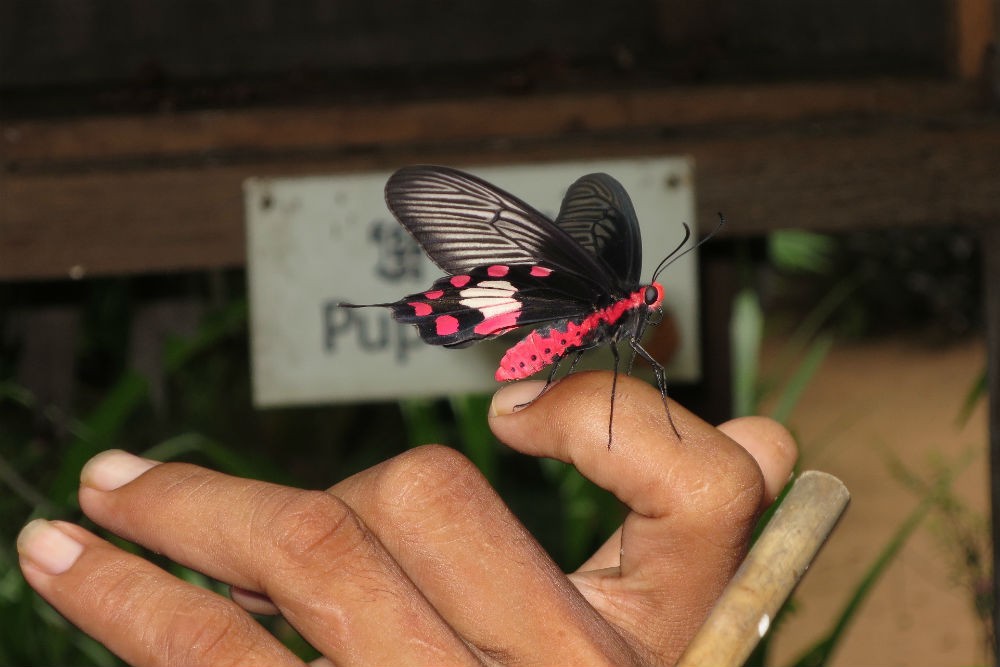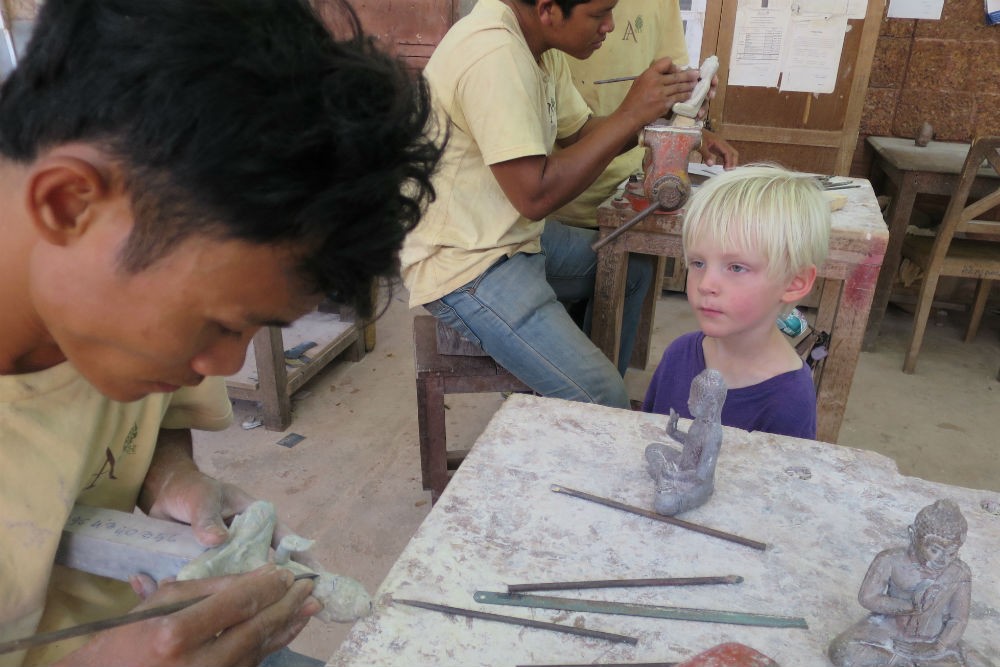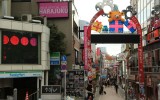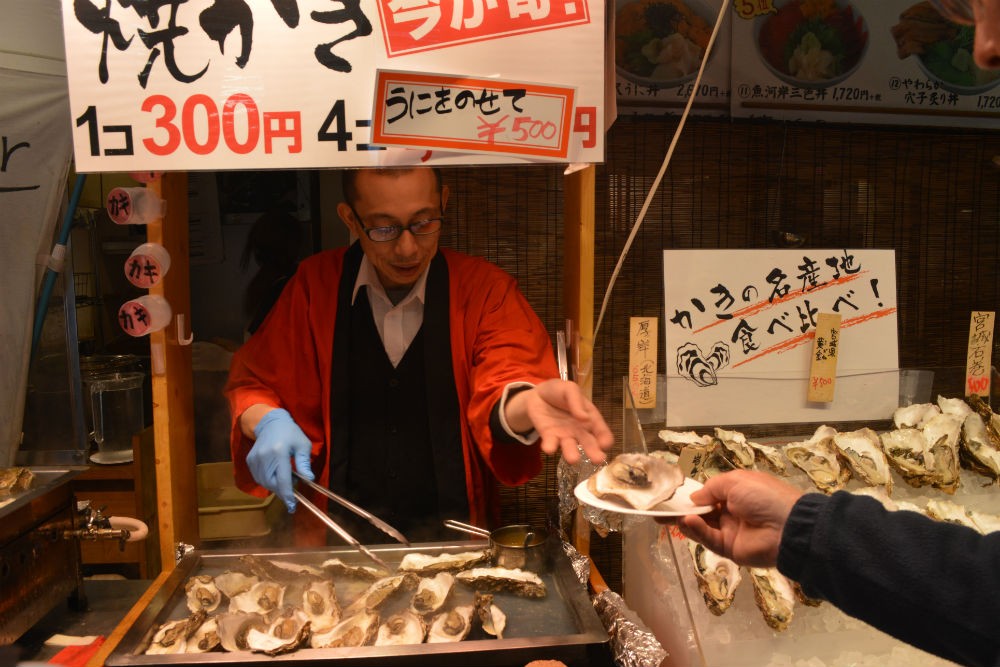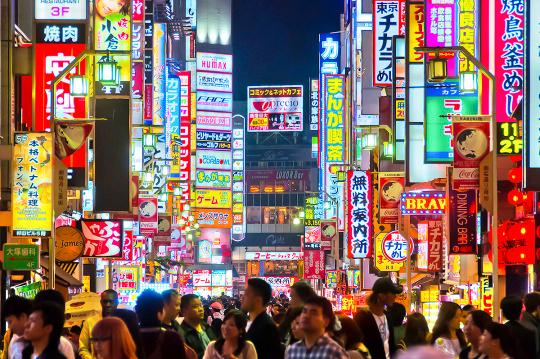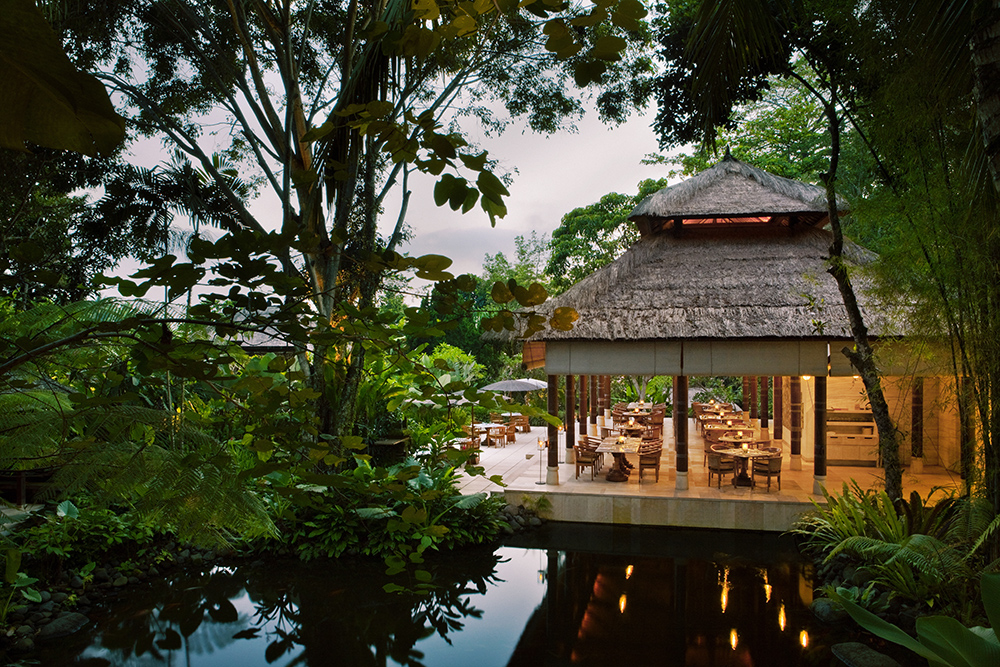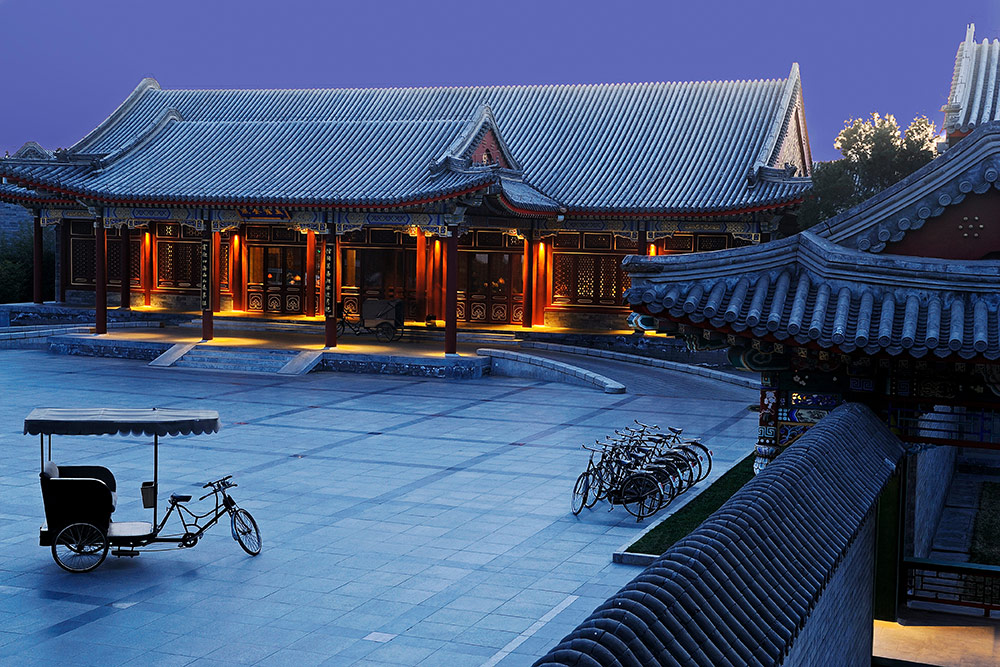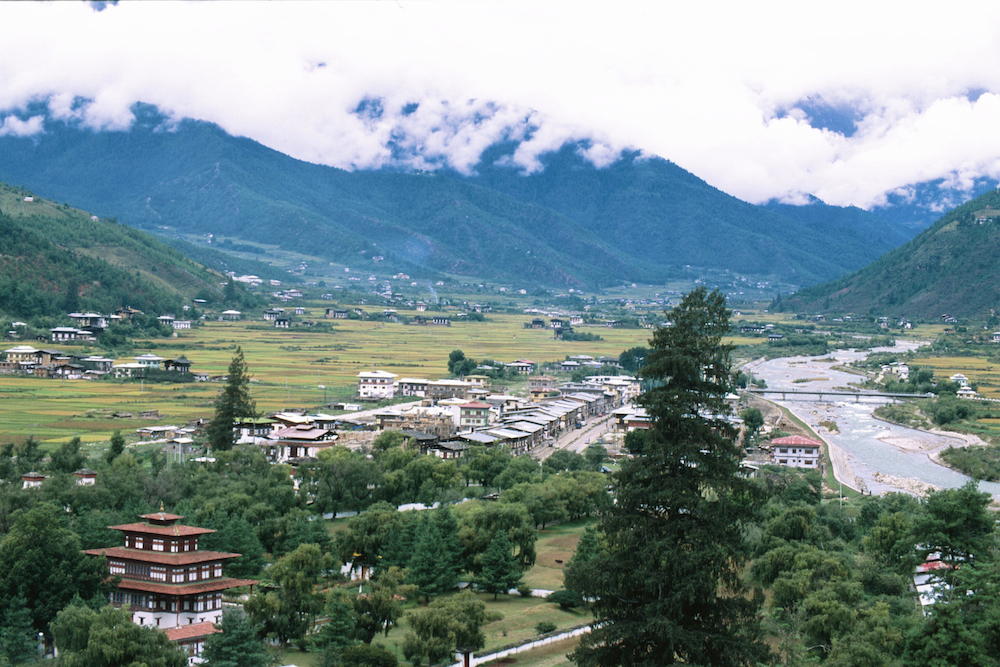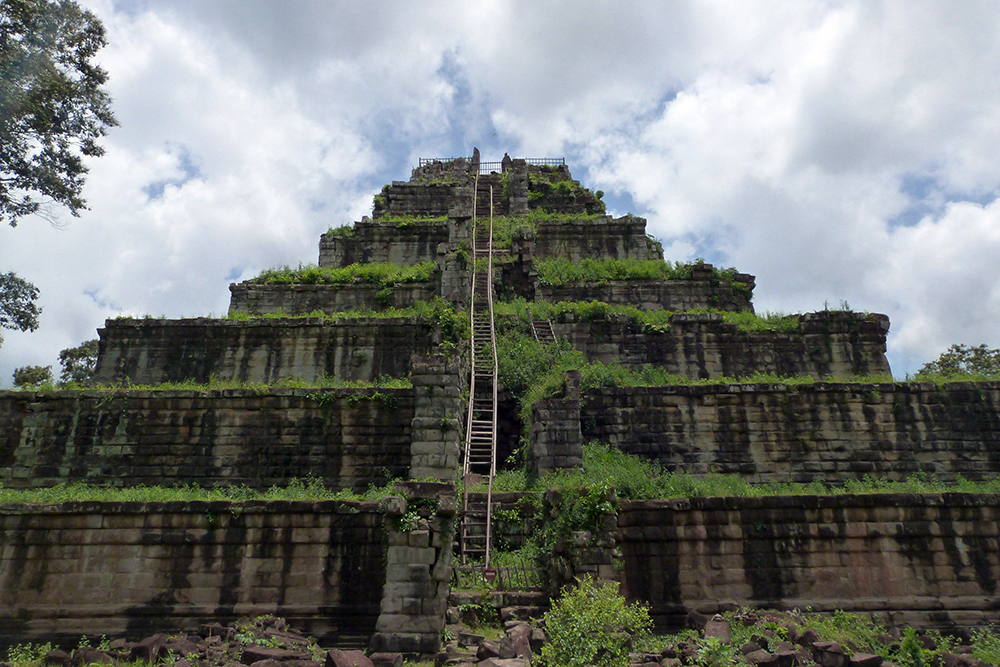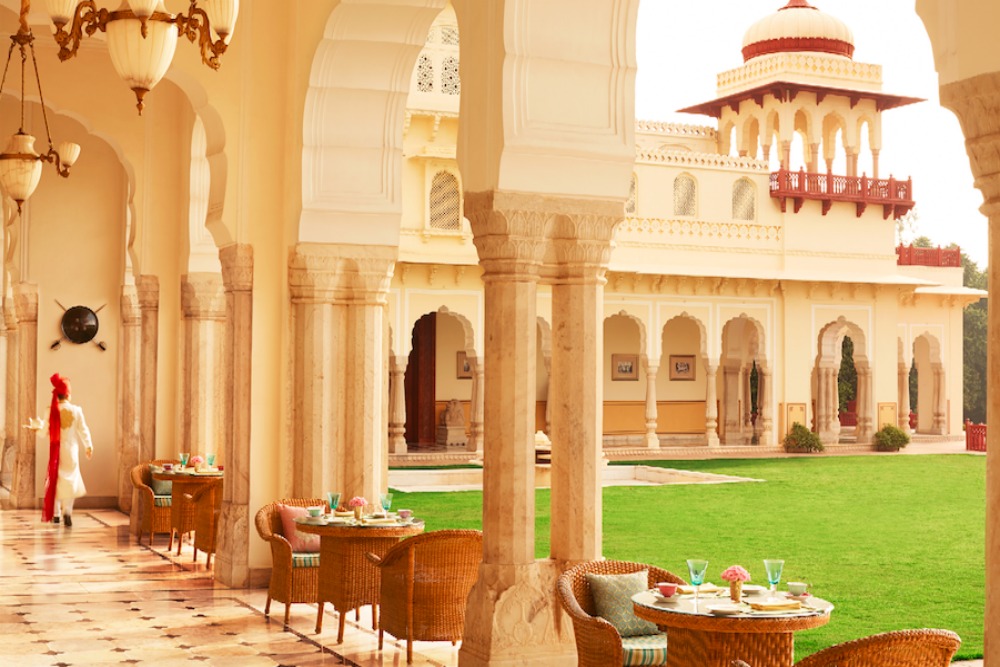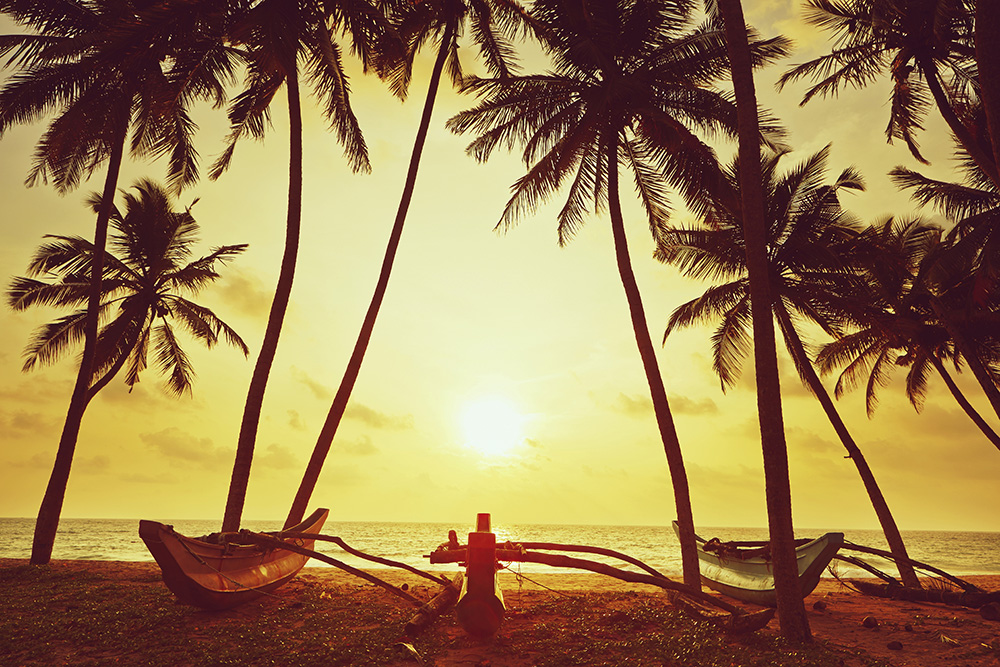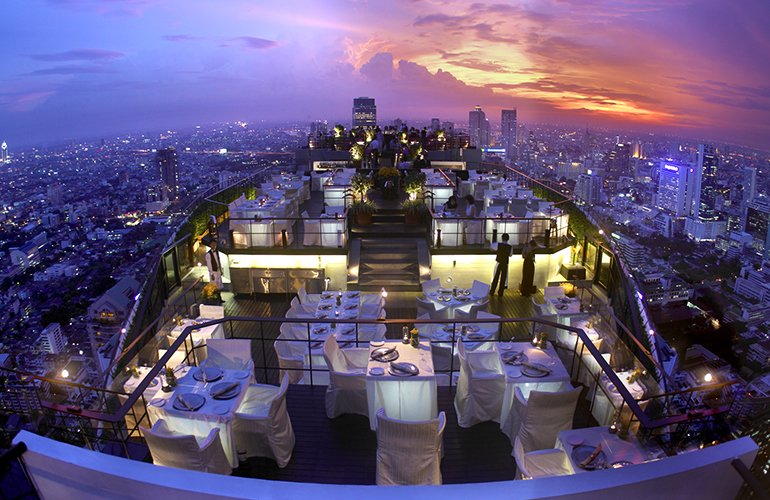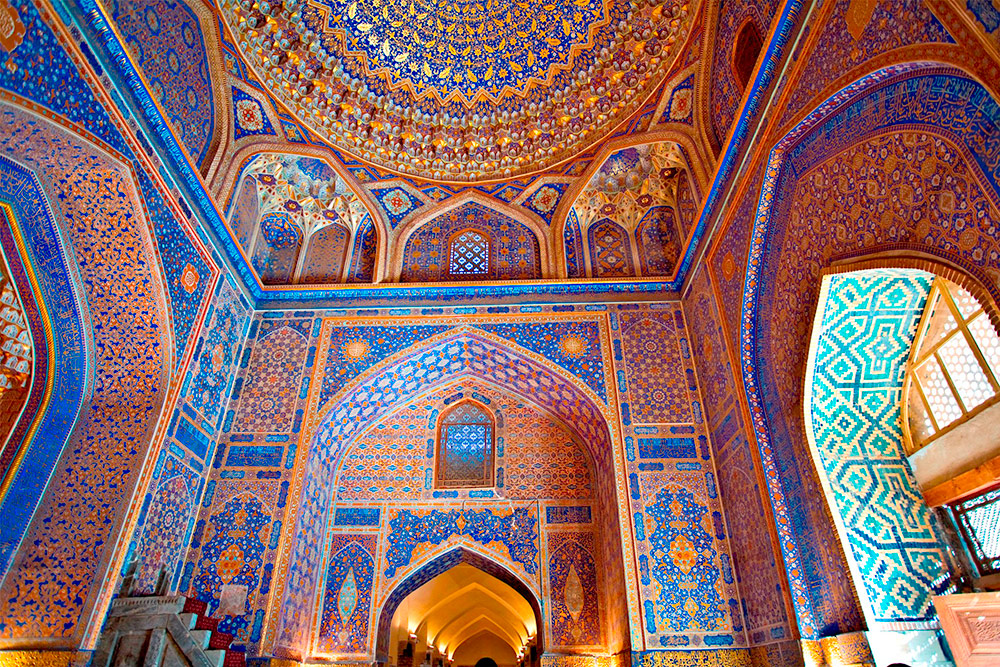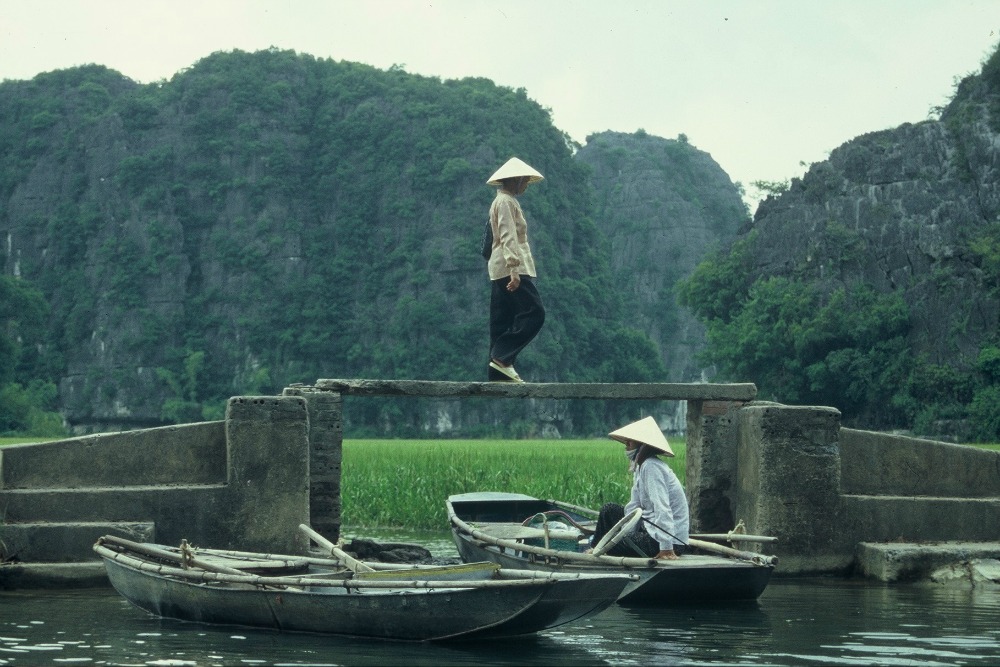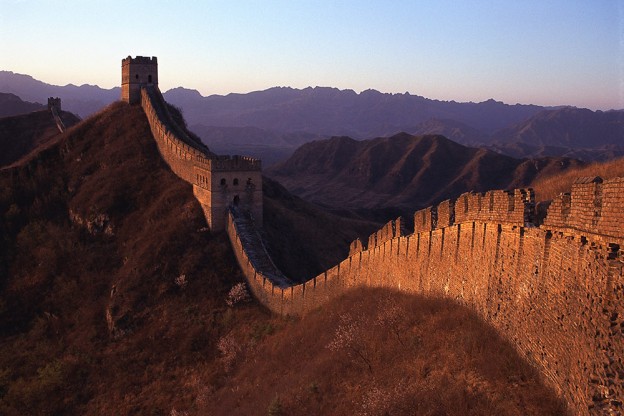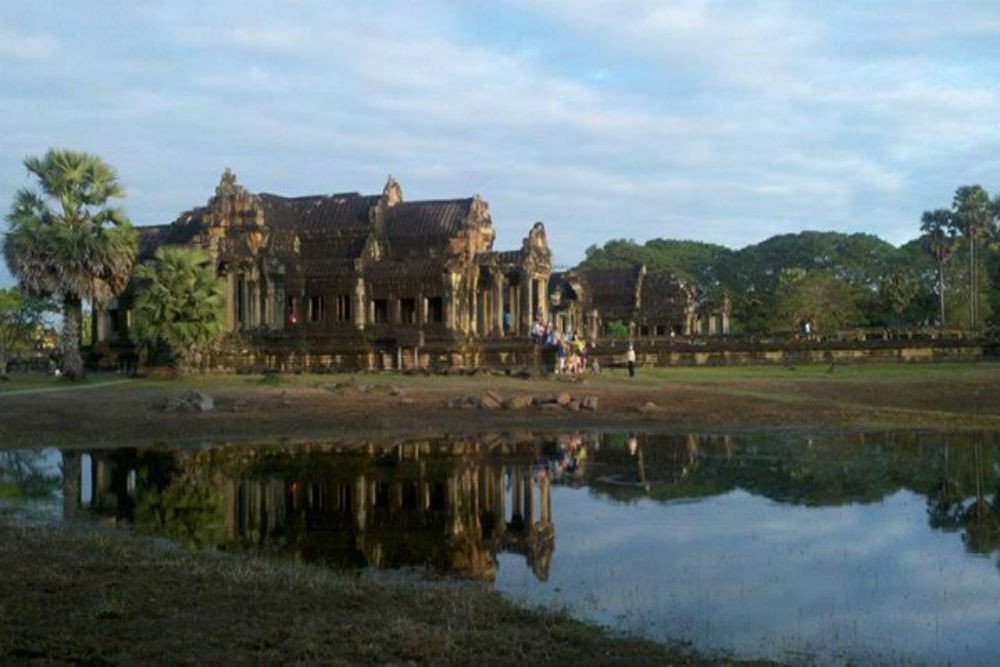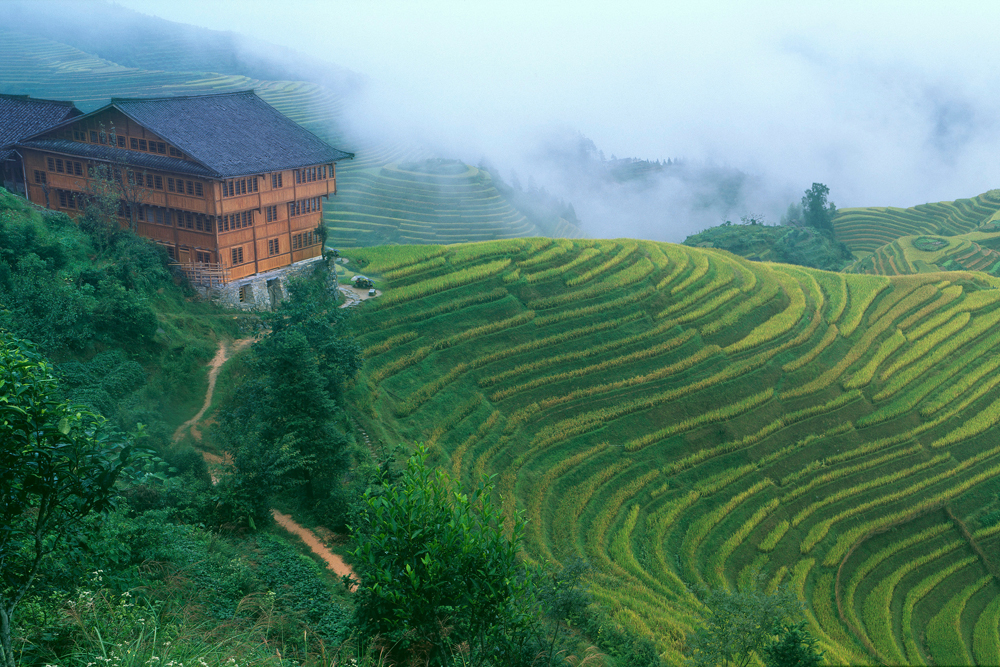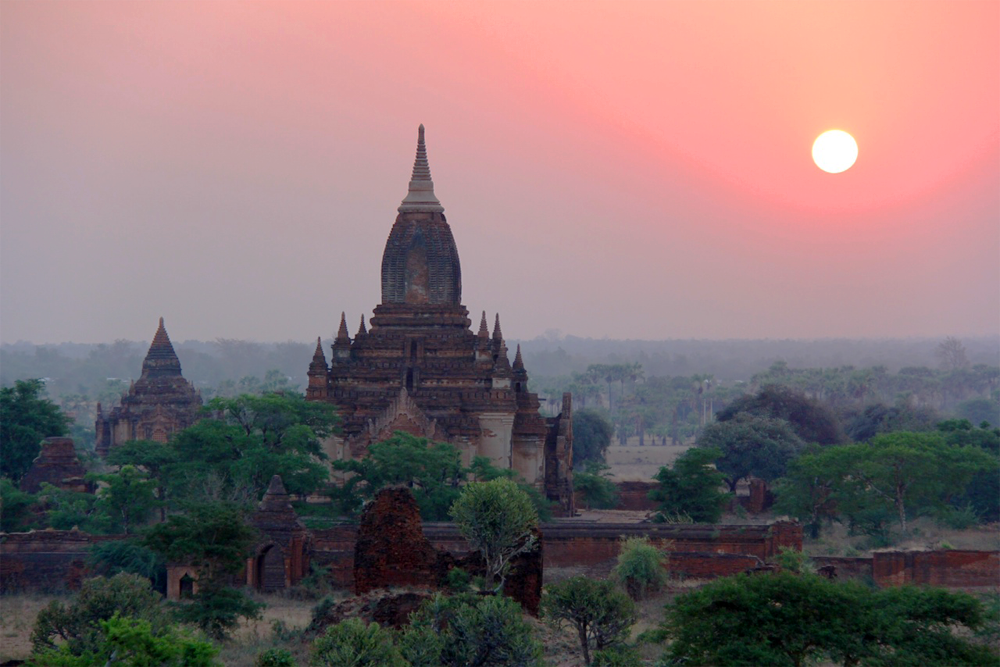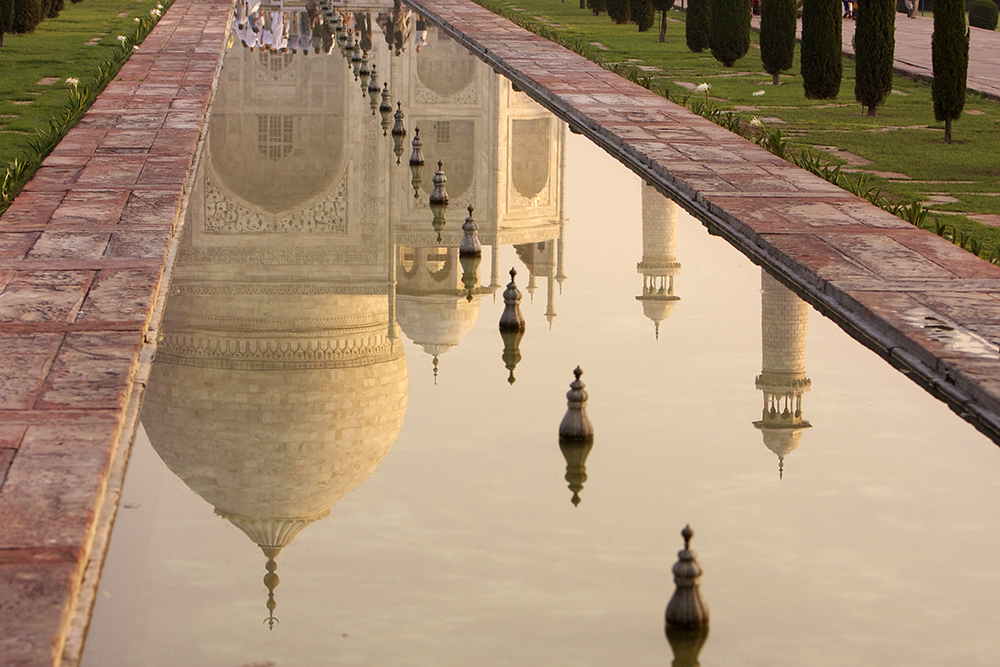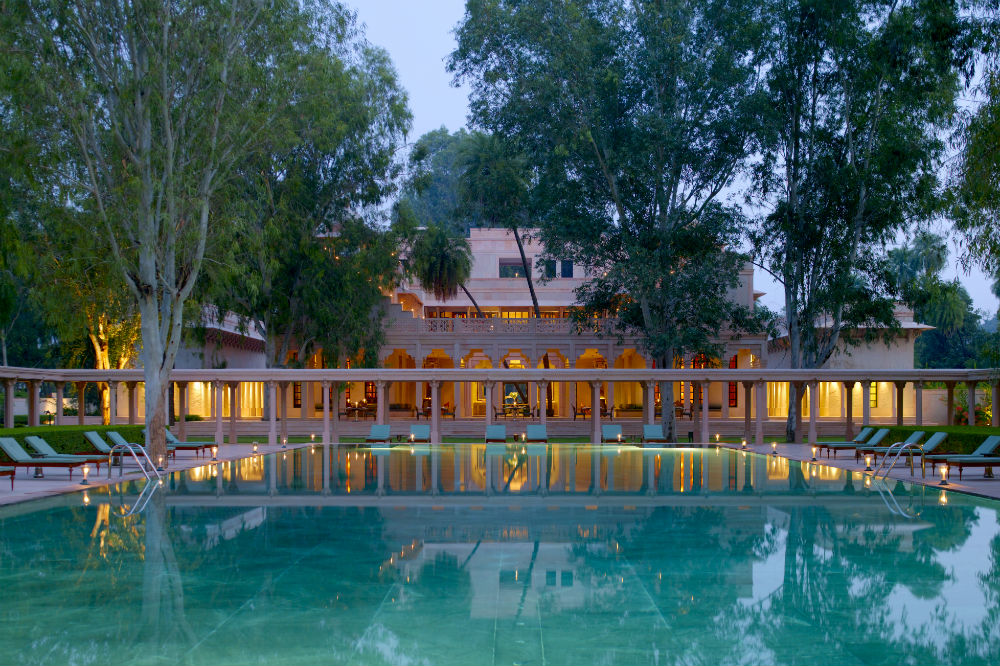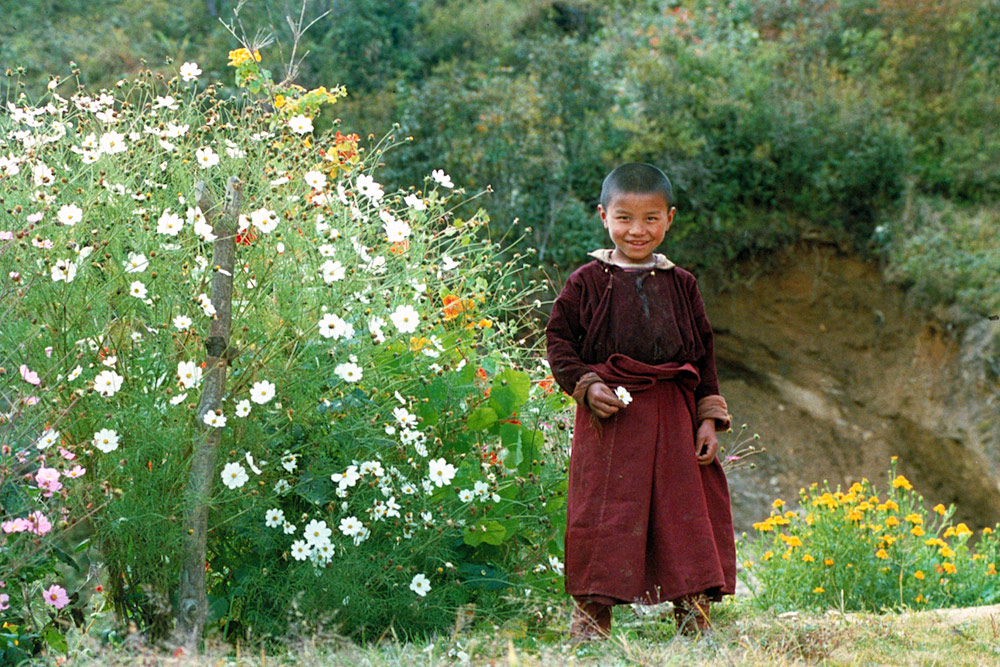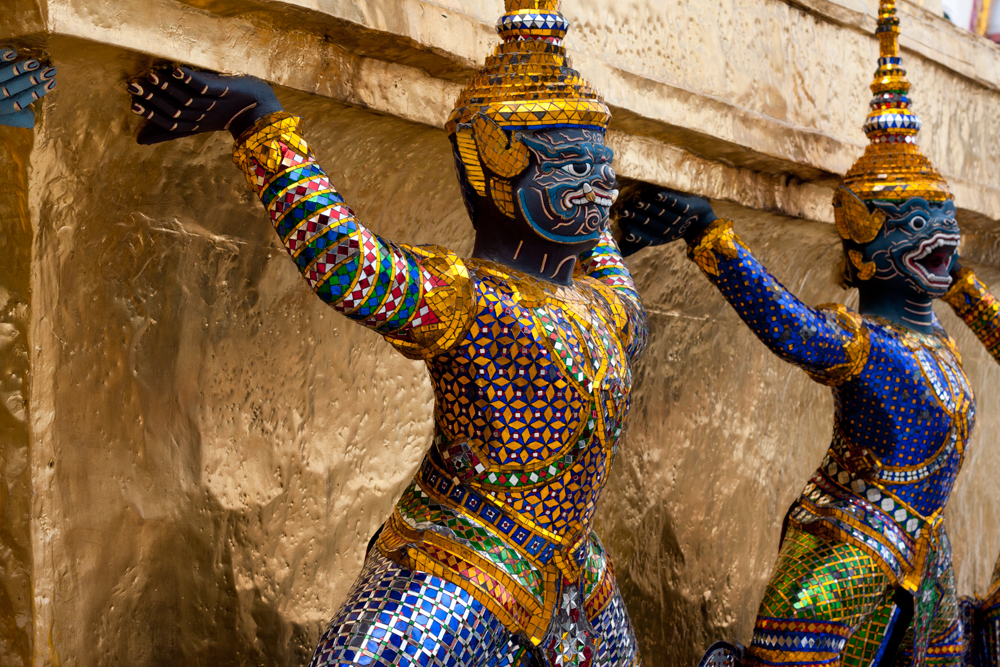Asia’s popularity has surged in the last few years, and we’ve seen our travelers explore the continent with more and more imaginative itineraries. From Japan to Thailand and beyond, they are using our Trusted Travel Experts to enjoy the unique flavors of the East, from making sushi to meditating with monks. Read about their experiences in the reviews below, and what it means to experience Asia the WOW way.
START A WOW TRIP TO ASIA
UAE: “It was a treat to climb a few dunes, ride camels and put our toes in the sand…”
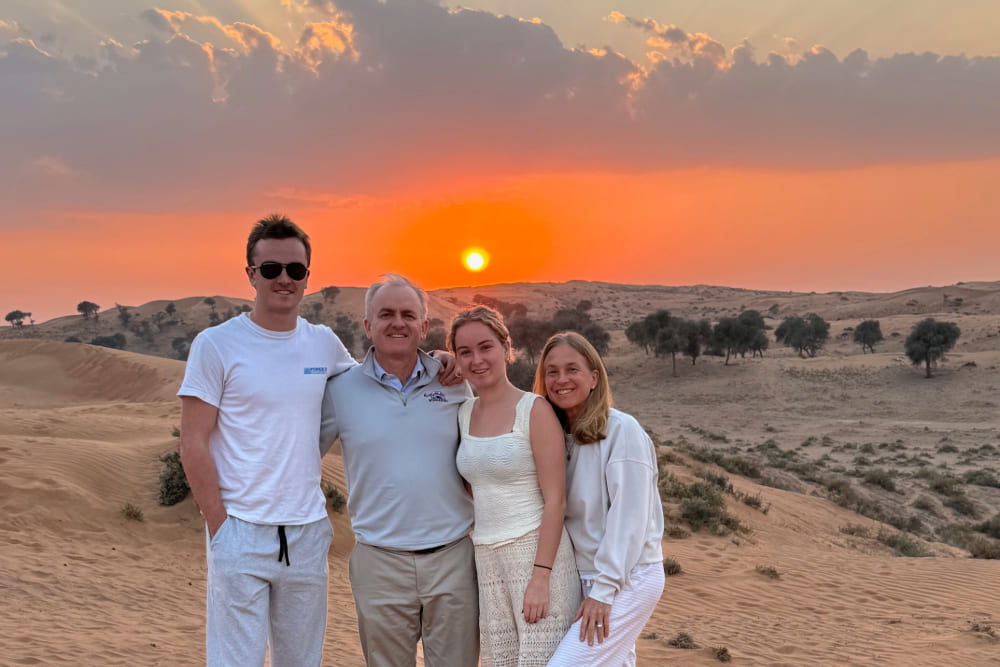
“On our way to Dubai we rented dune buggies and sandboarded in the dunes of Sharjah for a few hours.”
“My family and I were very happy with our destination choices, which were all suggested by Nick. We spent three days on the beach in Oman, two days in the desert area of Ras Al Khaimah, and four days exploring Dubai—a great introduction to this part of the Middle East which also appealed to our teens, who can get tired of museums, etc., pretty quickly.
Six Senses’ property at Zighy Bay stood out in terms of its uniqueness, luxury and physical plant/location. The resort only offers pool villas, which are incredibly well-designed/thought-out, and once you step out the door of each and every one of them, your toes are in the sand. The services and activities, including a world-class spa with hammam and microlights/paragliders which the whole family flew on, shine as well. There may not be a more ‘Instagram-able’ resort in the world.
Next we traveled into the desert and stayed at the Ritz-Carlton Ras Al Khaimah in a nature conservancy complete with animals walking around the grounds. It was a treat to climb a few dunes, ride camels and put our toes in the sand. On our way to Dubai we rented dune buggies and sandboarded in the dunes of Sharjah for a few hours, which was also a blast.
Dubai was fantastic and interesting. At Nick’s suggestion, we did a full-day tour of the city including visiting the spice and gold souks, riding a ferry across the ‘creek,’ touring through old Dubai, and a trip to the top of the Burj Khalifa. Nick suggested staying at the Ritz-Carlton JBR, which I would also strongly recommend if you have teens, as it is located right along the JBR walk with shops and restaurants they can explore on their own in this very safe city. The trip was amazing; I am so sad it is over because I thought about it for nine months before going!” —John Beveridge
Read more reviews of U.A.E. trips. To get your own WOW trip, start with our trip questionnaire, reached via the black button below.
START A TRIP TO U.A.E.
India: “I was born in India and have travelled there many times, but this was the most spectacular two weeks I have spent there…”
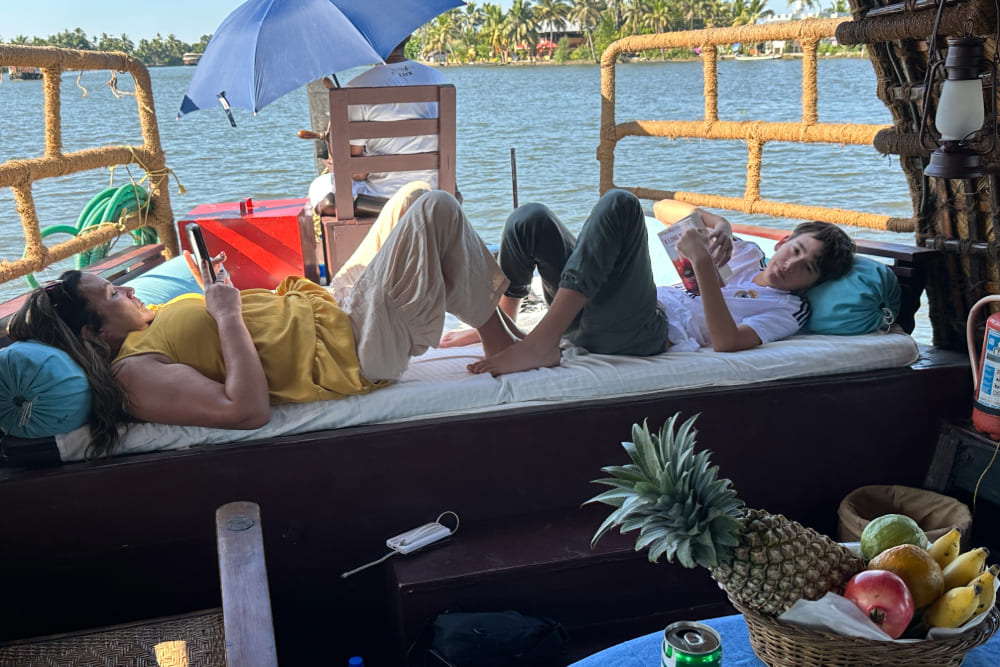
Gurminder Bedi’s daughter and grandson relaxing on a houseboat in Kerala.
“Sanjay planned an incredible trip to India for me, my daughter, and 12-year-old grandson. I was born in India and have travelled there many times, but this was the most spectacular two weeks I have spent there. India is a big country, and we covered a lot—houseboat in Kerala, temple in Tamil Nadu, religious services in the Ganges in Varanasi, lots of sites in Delhi, Golden Temple in Amritsar, never-disappointing Taj Mahal, and finally a relaxing stay in a village in Rajasthan.” —Gurminder Bedi
Read more reviews of India trips. To get your own WOW trip, start with our trip questionnaire, reached via the black button below.
START A TRIP TO INDIA
China: “We made cheese, rolled out local flat bread, and prepared flower cakes with roses at a rose farm.”
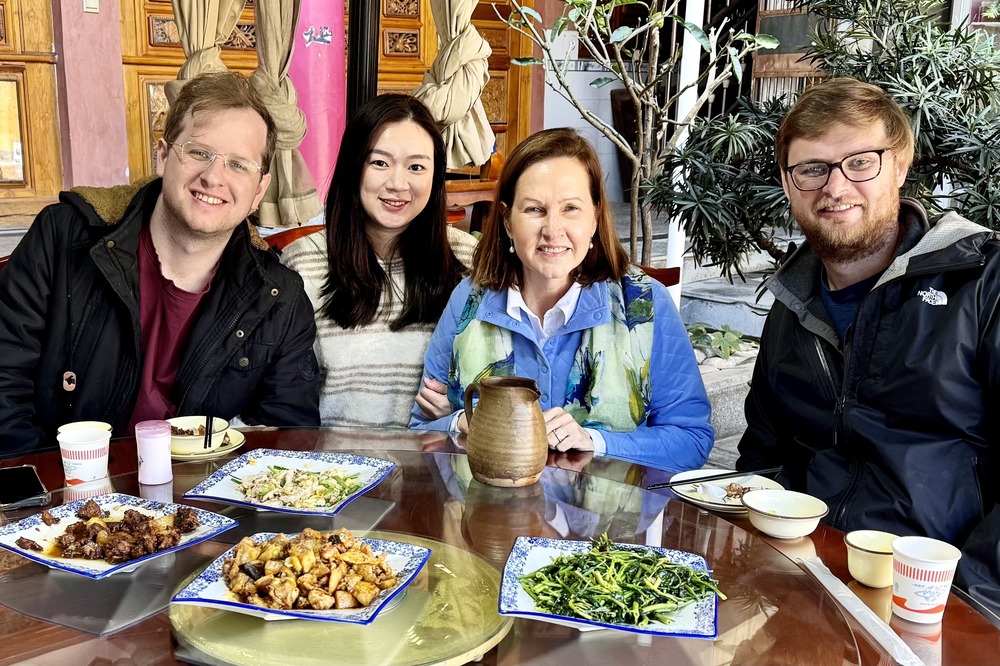
Delectable family travel to Yunnan: “We enjoyed all that we ate.”
“Our trip to Yunnan province, China, was expertly planned by Alice on Mei’s team. Our drivers were excellent navigating city traffic and mountain roads alike. We saw historic, cultural and natural sights in days that were full, but not overly crowded.
The small, hands-on experiences we had were most memorable. We saw indigo plants, stirred indigo dye, and then made our own tie-dyed samples. We made cheese, rolled out local flat bread, and prepared flower cakes with roses at a rose farm. We had a visit with a village shaman. We traveled to a small village where we had a fabulous dinner of food grown on-site and then were treated to music, folklore and dance, at the end of which we were invited to join in the dancing!
A highlight was seeing the sun hit the snow on the peaks of mountains around Dali, with the lake shining at the bottom. An incredible trip!” —Kathryn Wilson
Read more reviews of China trips. To get your own WOW trip, start with our trip questionnaire, reached via the black button below.
START A TRIP TO CHINA
Japan: “At the small inn we learned to lounge in jinbei and yukata, dined on delectable daily breakfast and divine dinners…”
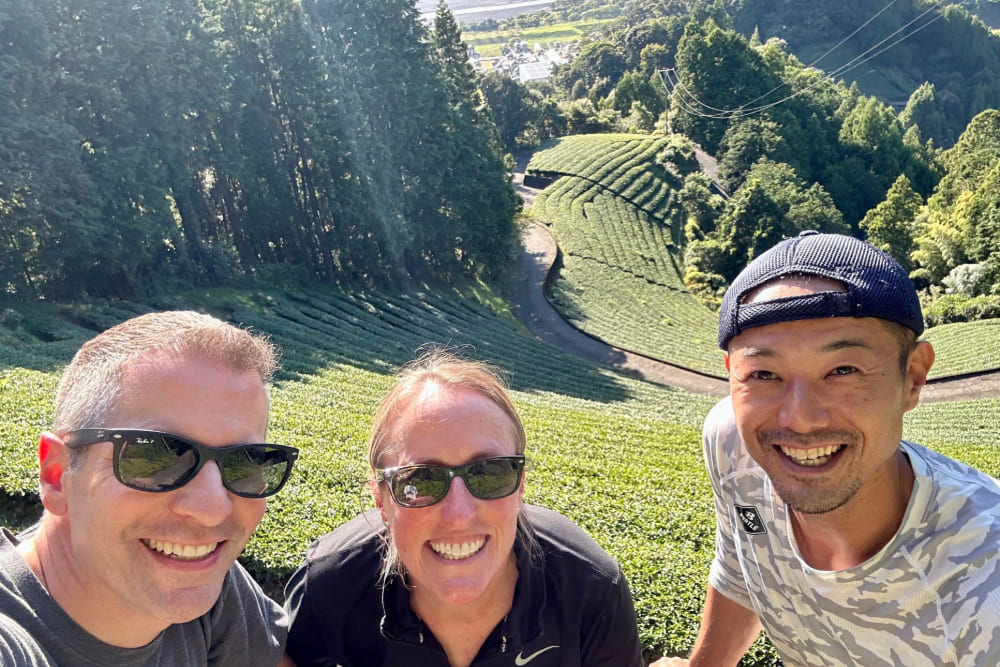
Taking in the Shizuoka tea fields with 15th-generation tea farmer, Takuya Shigeta.
“Andrea and Floriana created a journey embarking from Tokyo, traveling by high-speed train to the Kiso Valley, then continuing south to the Izu Peninsula. From temples to towers, sushi to sake, and crowds to calm, Tokyo did not disappoint during our brief three-night stay. We enjoyed our first bullet train experience heading west to Kiso Fukushima. Appreciating the big city, but always attracted to the close connections made spending time in rural locales, we grew excited to settle into a traditional Japanese ryokan for the next few days. At the small inn, we learned to lounge in jinbei and yukata, dined on the delectable daily breakfast and divine dinners, and ventured throughout the countryside with our guide, Sachi.
The highlight of our time in the Kiso Valley is difficult to choose, as we hiked to many ethereal shrines and wandered the path of the samurai through post towns, however we will never forget our opportunity to take part in the centuries-old tradition of takigyo, meditating under a freezing cold waterfall, and then sharing the same moment with a local family at Shintaki Falls.
For the last few days of our trip, we asked to get off the beaten path and find a quiet, relaxing place. Andrea and Floriana did not disappoint…coordinating a mountain green tea tasting in Shizuoka, a ferry ride with awe-inspiring views of Mt. Fuji, and a sanctuary stay in a historic mansion in Nishi-Izu. We spent the remaining days strolling quiet seaside towns, visiting a secluded organic wasabi farm, and soaking in our private onsen.” —Michael Ruma
Read more reviews of Japan trips. To get your own WOW trip, start with our trip questionnaire, reached via the black button below.
START A TRIP TO JAPAN
Nepal: “I got a better understanding of the sherpa community and their special connection to the mountain.”
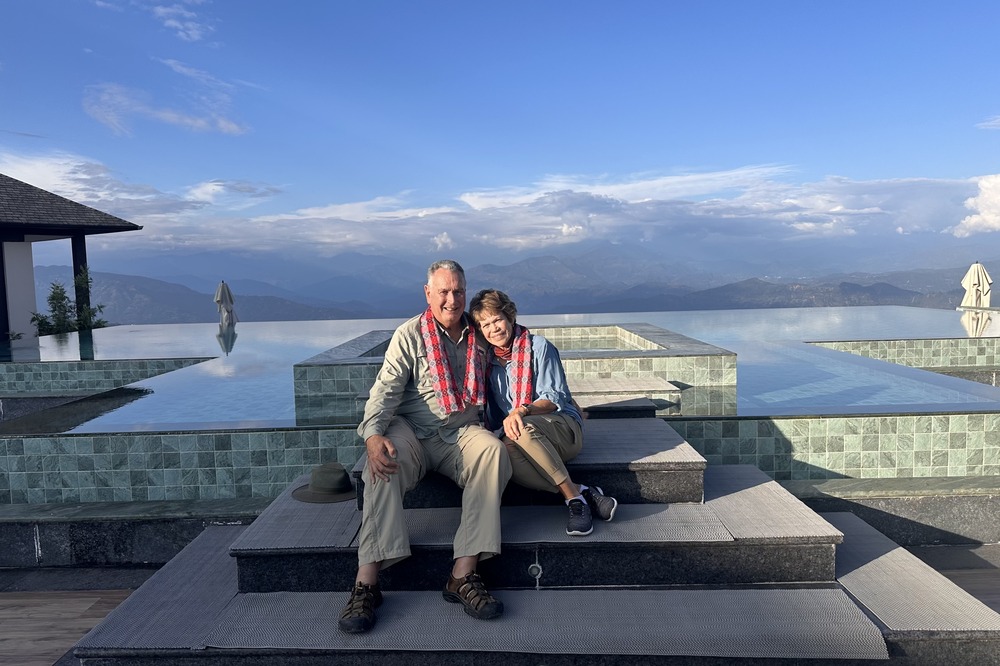
Travelers Christine Stoll and her husband in front of the Himalayas at Dusit Thani in Dhulikhel, Nepal.
“In 1996 I went to a presentation by the late David Breashears where he spoke about and showed raw footage of his experience on Mount Everest during the climbing disaster earlier that year. The filming of his eventual summiting became the IMAX movie Everest. I was captivated. Although I was never a candidate to climb the mountain, it was my goal to see it in person. So I contacted Sanjay and explained how important this experience was to me. Sanjay was a personal friend of David Breashears.
Sanjay offered three options for seeing the mountain. We chose the flightseeing option: a 20-passenger plane where everyone has a window seat. He scheduled us on the flight but arranged the trip so that if the weather was bad, we could reschedule for any of the other days. As soon as we arrived, we were told that we would be going the next morning, as that was the best weather opportunity.
At 5:00 A.M we were seated on the plane, with the flight still up-in-the-air. It sure looked cloudy. After sitting on the runway for some time, we finally got the okay to take off. We kept going up through clouds until we finally burst out to a sight I can’t put into words. It was stunning, awe-inspiring, jaw-dropping and whatever other superlative you can think of.
Sanjay had arranged for us to have a sherpa with us who had summited Everest. Phula pointed out peaks, routes, and other features to make our time richer. When we finished, he went to breakfast with us. He answered our many, many questions. Phula’s experience was fascinating, and I got a better understanding of the sherpa community and their special connection to the mountain. It took me the rest of the day to ‘come down off the mountain’ and finally catch my breath.” —Christine Stoll
Read more reviews of Nepal trips. To get your own WOW trip, start with our trip questionnaire, reached via the black button below.
START A TRIP TO NEPAL
Vietnam and Cambodia: “Reminded of how simple life can be, and that people everywhere strive to do the best they can…”
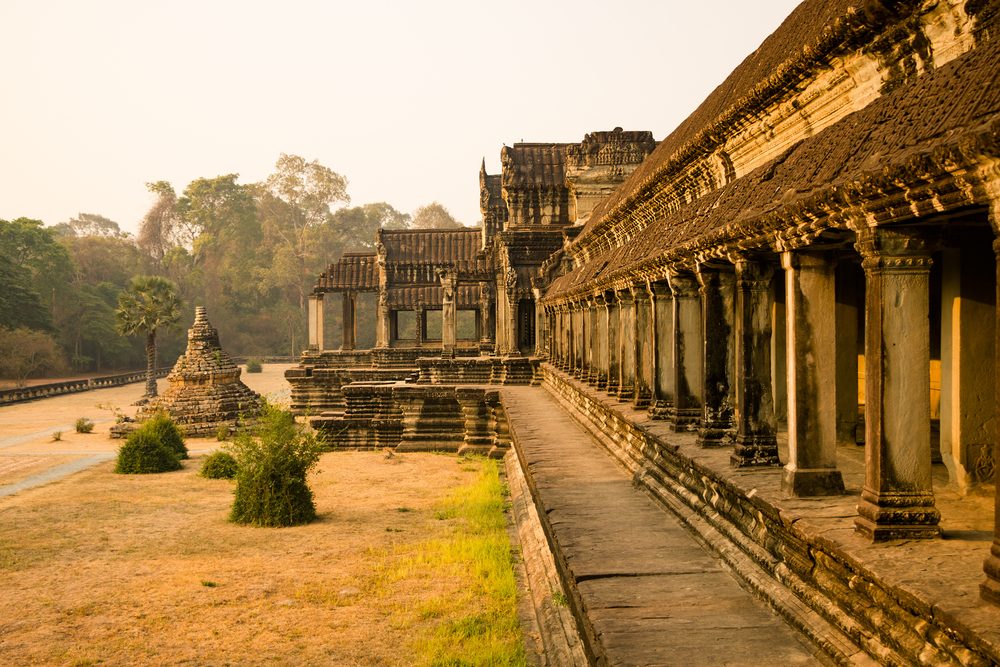
Sunrise at Angkor Wat. Photo: Shutterstock
“As neither Vietnam nor Cambodia has recovered to pre-Covid tourism levels, we experienced far fewer crowds, even at Angkor Wat. The locals were gracious and welcoming, even thanking us for making the long journey.
From the onset of planning through execution, Sandy and Ethan delivered every step of the way. Our itinerary combined five-star creature comforts with authentic local experiences. Some of the more noteworthy experiences included:
• Meeting the North Vietnamese fighter pilot who was the first to shoot down an American fighter jet
• Cooking Vietnamese crispy pancakes with a grandmother in her family’s home “restaurant” and then enjoying a multi-course, homemade lunch
• Riding on the back of Vespas through the side streets and back alleys of Saigon, and on the back of motorbikes through villages in the Mekong Delta
• Riding in an ox-cart along a rural road in Cambodia, being greeted with countless smiles and waves from children going about their everyday lives along the route
• Holding a Hero Rat as we gained invaluable insight into the efforts to detect and remove land mines and explosive devices throughout the Cambodian countryside
• Meditating with monks at Phnom Krom Pagoda
Our hosts provided us with invaluable insights into Vietnam’s and Cambodia’s people and culture, both past and present. In so doing, we were reminded of how simple life can be, and that people everywhere strive to do the best they can with what they’ve been given.” —Molly O’Neill-Emmi
Read more reviews of Cambodia trips. To get your own WOW trip, start with our trip questionnaire, reached via the black button below.
START A TRIP TO CAMBODIA
India: “She suggested three very different cities which were the perfect combination for a first-time visitor…”
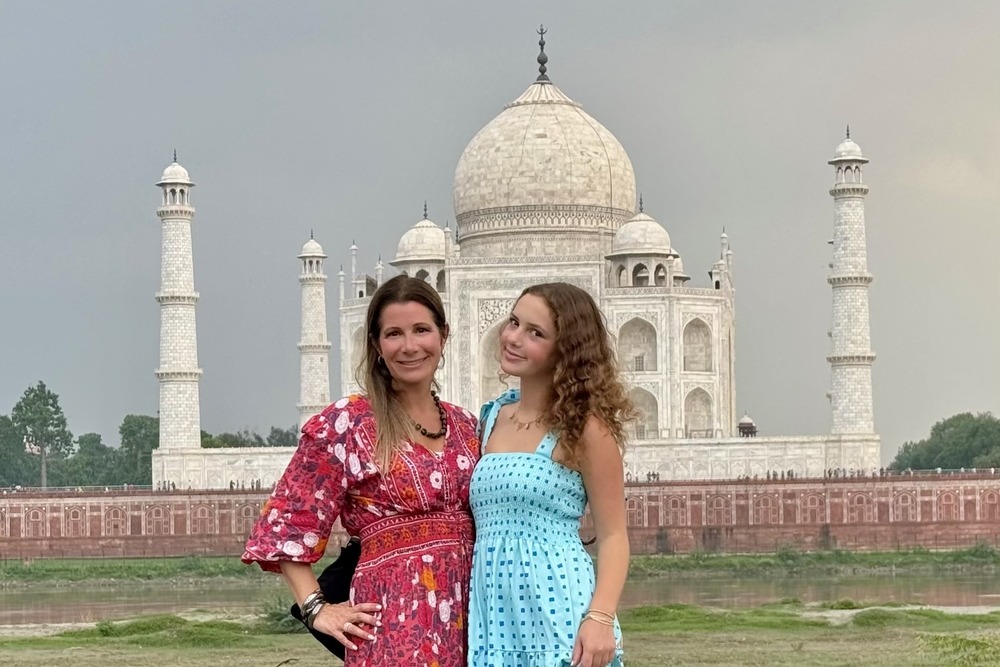
Happy mom and teen “tagged along on a business trip” and enjoyed the Taj Mahal at both sunrise and sunset.
“My teen daughter and I tagged along on a pretty last-minute business trip my husband was taking to India. Victoria put together an amazing itinerary one month before we left and she really nailed it! After our first phone conversation she put together the perfect plan and I made very few changes. It was very clear she understood what I was looking for and how we wanted to spend our time.
We were traveling off-season during monsoons, and while the weather was very hot and very humid, the actual rain barely interfered with our activities. We flew into Delhi and spent two days exploring the city which was a feast for the senses. It was a great intro to India, both overwhelming and mesmerizing. Victoria set up a tour of the old city by rickshaw which I’d highly recommend as a memorable and eye-opening experience. We also took a food tour through the winding streets of Delhi which I was very hesitant about for fear of “Delhi belly,” but Victoria assured me they are very careful about the places we would visit and she was right, we were all fine!
My daughter and I then went off on our own to Agra to visit the Taj Mahal at both sunset and sunrise, which were two totally different experiences and both “pinch me” moments! Friends and family at home were very concerned about the two of us traveling in India alone, but we felt completely safe the entire time because we always had someone with us, just one of the reasons a WOW planner is so important.
Our final stop in India was Jaipur. Each city was a 3-4 hour drive from one another, which was an experience in itself passing through villages and seeing the way people live outside of the cities. We spent four days in Jaipur which was the perfect combination of sight seeing, shopping, spa time and cultural experiences. Highlights were a block printing workshop in a village outside of the city, an early morning visit to the old city, getting custom made pajamas, visiting the city palace, and meeting with an astrologer, which was a very unique experience. Our incredible guide Vikram knew all the best spots to take us to and had access to places we would have never known about. We have had a lot of private guides all over the world and Vikram is up there with the best!
We were very happy with all of the hotels Victoria had suggested—Leela Palace in Delhi, The Oberoi Amarvilas in Agra and Rambagh Palace in Jaipur. Victoria really made the most of the one week we had in India. She suggested three very different cities which were the perfect combination for a first-time visitor to India and I can’t wait to go back to visit other parts of the country!” —Lauren Schor
Read more reviews of India trips. To get your own WOW trip, start with our trip questionnaire, reached via the black button below.
START A TRIP TO INDIA
Thailand: “We set foot in Myanmar, Laos and Thailand all on the same day…”
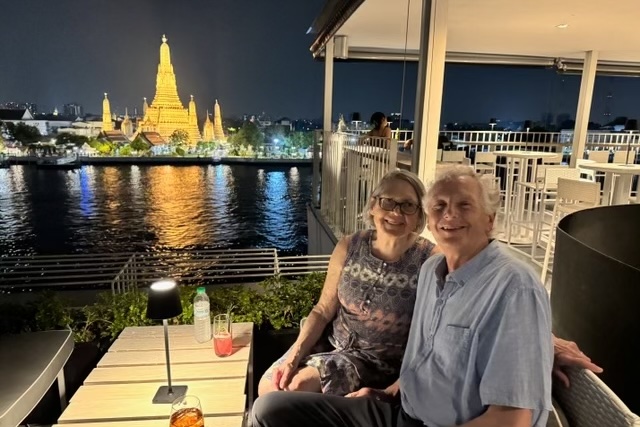
Tony Ford-Hutchinson and wife Jane in Bangkok, with Wat Arun aglow in the background.
“A two-day board meeting in Bangkok gave us the opportunity to combine this with a two-week trip to Thailand. We worked with Dan to figure out where to go and decided to start with Bangkok and then spend time in Northern Thailand.
We explored the waterways of Bangkok in a private longboat and drove out to Ayutthaya, the ancient Siamese capital. Other highlights of Bangkok were a foodie’s tour around Chinatown, a cooking experience for Jane while I was in meetings, and dining at two of the top 50 restaurants in the world, Gaggan and Le Du.
We then flew up to Chiang Mai and stayed at the wonderful 137 Pillars House. We drove around in an electric tuk-tuk, ate local specialties in the night market, and went bamboo rafting. We had specifically requested to learn about some of the textile weavings for which Northern Thailand is famous, so Dan arranged for us to go to Studio Naenna to meet Patricia Cheeseman, a renowned textile expert and author, where we had a hands-on experience with tie-dying with natural indigo dye.
Our road trip to Chiang Rai was no ordinary road trip, as we skirted the Myanmar border, stopping at various points including cooking lunch in bamboo containers with the Lahu hill tribe. In Chiang Rai we stayed at Pa Sak Tong (at very off-season rates!) where we had a whole three-bedroom villa to ourselves, complete with exercise room, steam room, and private pool. To look after our every need, we had two excellent cooks, Nid and Kwanjai, and three outstanding butlers, Tai, Benny, and Pleaw. All this on 28 acres looked after by 13 gardeners and overseen by the estate manager, John Dunbar!
Needless to say, we tried to maximize our stay in the villa, although we did make a day trip to the Golden Triangle, where we set foot in Myanmar, Laos and Thailand all on the same day. Another bonus for this location is that the dining experience at Locus Native Food Lab is a short walk from the villa. All in all, an amazing trip, and thank you to Dan and his staff for organizing everything.” —Tony Ford-Hutchinson
Read more reviews of Thailand trips. To get your own WOW trip, start with our trip questionnaire, reached via the black button below.
START A TRIP TO THAILAND
Uzbekistan: “The idea of the Silk Road always intrigued me, with camel caravans bringing goods from China to Europe and back…”
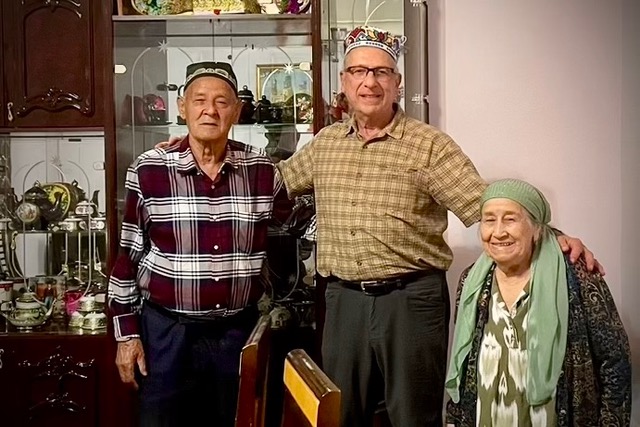
Leon Malkin visiting with Zulya’s parents
“This was my seventh trip using Wendy Perrin’s WOW List of travel experts, and they have all been superb experiences. This trip was not different, thanks to the kindness and caring of Zulya. One of the nicest people I’ve had the pleasure to work with, she is from Uzbekistan and has firsthand knowledge of this area. One of the highlights of the trip was having lunch with Zulya’s parents and family in Bukhara.
The idea of The Silk Road always intrigued me, with camel caravans bringing goods from China to Europe and back, and the power struggle between Russia and Great Britain for control of this area in the 19th and 20th century. I really didn’t know what to expect of this vast region. I thought I would see camel caravans and a lot of Soviet apartment buildings! What I found were modern cities and all very clean, safe, with warm welcoming people. There were, of course, remnants of Soviet influence, as they were under Soviet control until independence in 1991. I did not have one untoward event.
Outside the cities, the roads were often in need of repair, and one could see the more impoverished towns and homes, but all the people I encountered were very welcoming and friendly. Would highly recommend a visit to this vast, interesting, safe area.” —Leon Malkin
Read more reviews of Uzbekistan trips. To get your own WOW trip, start with our trip questionnaire, reached via the black button below.
START A TRIP TO UZBEKISTAN
Japan: “We enjoyed learning from the youngest of many generations who have practiced pottery-, candy-, and soba-noodle-making…”
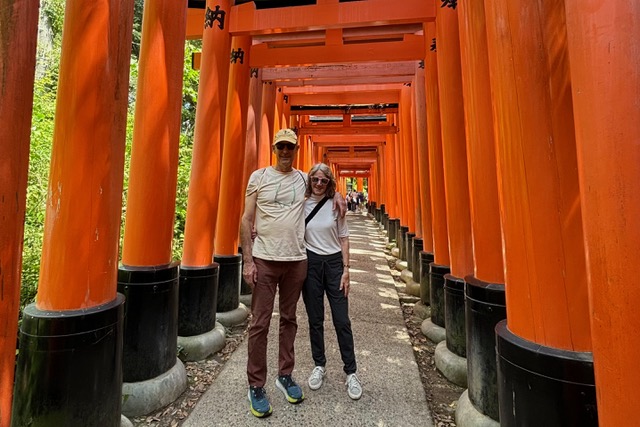
Barbara and Robert Fierman at Senbon Torii in Kyoto.
“Andrea planned the trip of a lifetime for my husband Bob and me and our friends as a joint anniversary celebration. The trip was well-paced and balanced, but also so exciting. Each of our special activities was a blast! My favorites included taiko drumming, where our drumming expert got us to perform a brief but lively routine and then performed for us; having a private tea ceremony with a geisha; and attending a sumo wrestling tournament. We also enjoyed learning from the youngest of many generations who have practiced pottery-, candy-, and soba-noodle-making.
We visited an organic tea farm in Uji where we learned about the industry, picked tea leaves, and were treated to a delicious lunch which included tea leaves prepared tempura-style. We spent a day in Nikko, where we hiked along a massive waterfall to a lake and then visited the magnificent Toshogu Shrine, set in a beautiful forest.
Our overnight on the island of Naoshima provided a glimpse of restored homes turned museums, as well as state-of-the-art museums designed by famed architect Tadao Ando and outdoor installations, including the pumpkin, created by Yauyoi Kusama. Andrea and his team did an amazing job of coordinating the multitude of details this experience involved. We can’t thank him enough.” —Barbara and Robert Fierman
Read more reviews of Japan trips. To get your own WOW trip, start with our trip questionnaire, reached via the black button below.
START A TRIP TO JAPAN
China: “We had an amazing dinner prepared and cooked in a private space by a chef and his team…”
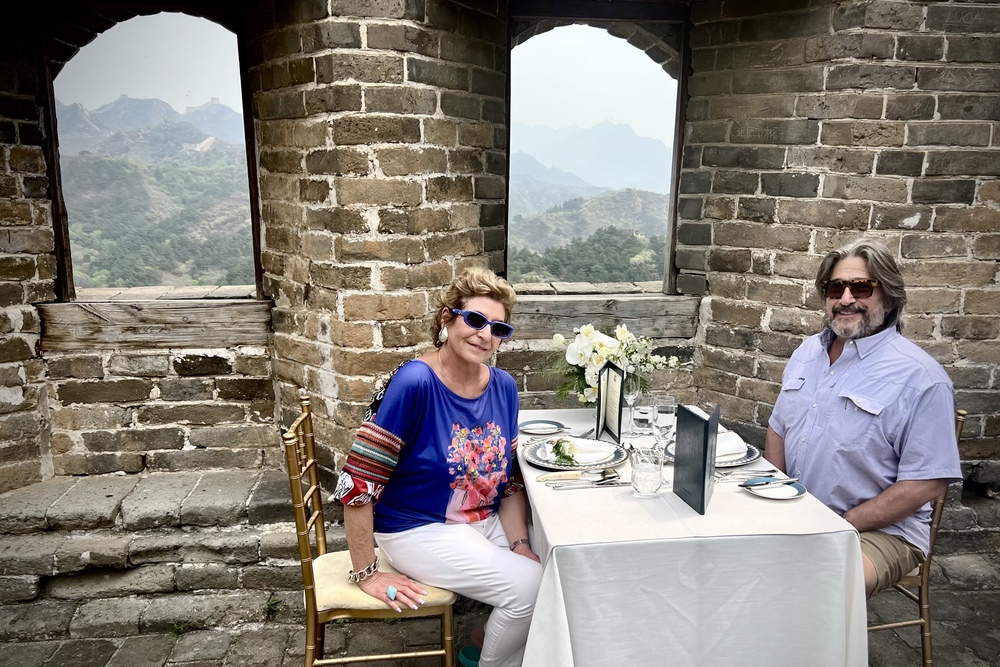
Emma Jacobs and her husband dining on the Great Wall of China.
“Our trip to China was excellent. We had an amazing dinner prepared and cooked in a private space by a chef and his team, curated by Mei’s office, as our WOW Moment in Beijing. Having a gourmet lunch prepared on the Great Wall was a very special moment. One of a kind!! Shanghai took us by surprise, what a great city with exceptional food. We had a wonderful foodie tour there too.” —Emma Jacobs
Read more reviews of China trips. To get your own WOW trip, start with our trip questionnaire, reached via the black button below.
START A TRIP TO CHINA
Vietnam & Cambodia: “The lunch they had prepared for us, hosted by a lovely Cambodian family on their floating dock, was amazingly delicious…”
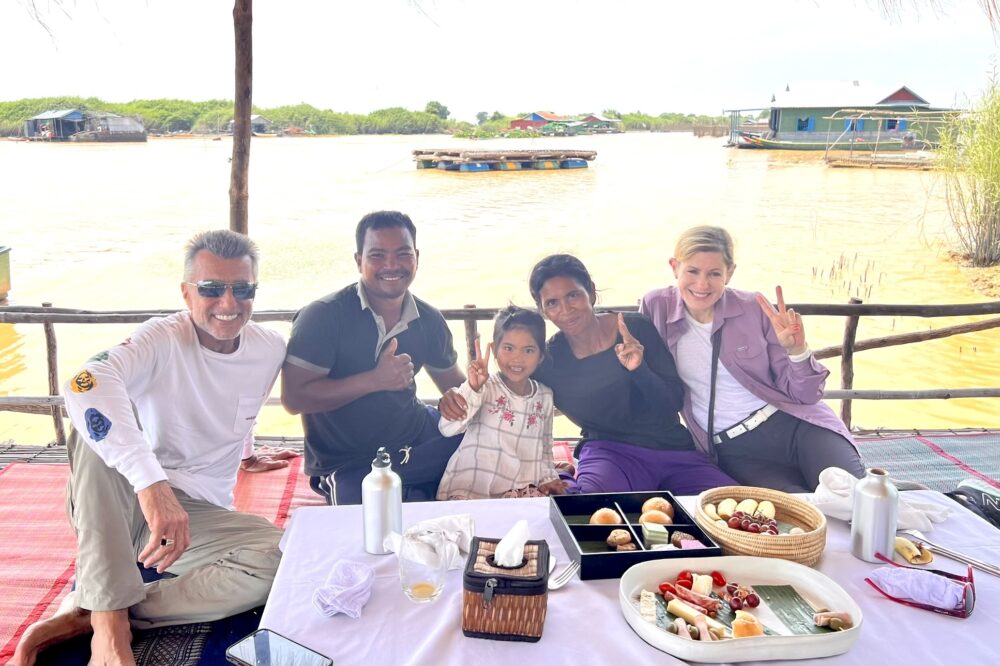
Sharon Theroux and her husband were hosted for lunch by a local family near Siem Reap.
“My husband and I just returned from our second trip to Southeast Asia, both of them through Sandy and Ethan’s office. Someone once said, ‘We travel not to escape life, but for life not to escape us.’ That couldn’t be more true about our experience. This year, we spent one week in Saigon, followed by one week in Siem Reap.
In Saigon, we stayed at the Majestic Hotel, which was a perfect location on the Saigon river and at the heart of the city. Sandy and Ethan were able to get us the same room on the same floor we had last year, #317, which had an outdoor garden where we had coffee in the morning. So beautiful. The ride up the Saigon river to Can Gio nature reserve provided a well-needed ‘Nature Bath’ while boating through mangroves, hiking through jungles, and feeding crocodiles and monkeys. What a major de-stressor and complete departure from our day-to-day life back home!
Our next leg of the trip was the Jaya House at Siem Reap, which is where we stayed last year. The Jaya House is one of my favorite places on earth. Upon arrival, we met with Christian, the property manager, who made sure we were scheduled for our daily massage. After recently experiencing a running injury, I was very happy to take him up on that offer! Those daily massages really helped me to heal from injury, as well as reduce a year full of stressors from back home.
We took an excursion to the margins of Tonle Sap Lake, the largest lake in Cambodia. On this boat tour, we traveled back in time to see a floating fishing village, where people survive with very little, some without electricity. And yet, the people there smiled and waved at us as they went about their life, and we saw the children happily playing with each other and swimming in the water. I learned that if they could be happy with so little, I don’t need to sweat the small stuff at home. And the lunch they had prepared for us, hosted by a lovely Cambodian family on their floating dock, was amazingly delicious, with a charcuterie that rivaled that from NYC! I would highly recommend traveling to Southeast Asia in general, and with Sandy and Ethan more specifically, if you are looking for a truly authentic, immersive, and life-enhancing experience.” —Sharon Theroux
Read more reviews of Southeast Asia trips. To get your own WOW trip, start with our trip questionnaire, reached via the black button below.
START A TRIP TO SOUTHEAST ASIA
The Philippines: “Our Bohol countryside tour was incredible, from swimming with a group of large whale sharks to cruising on a private Lomboc River boat with live music…”
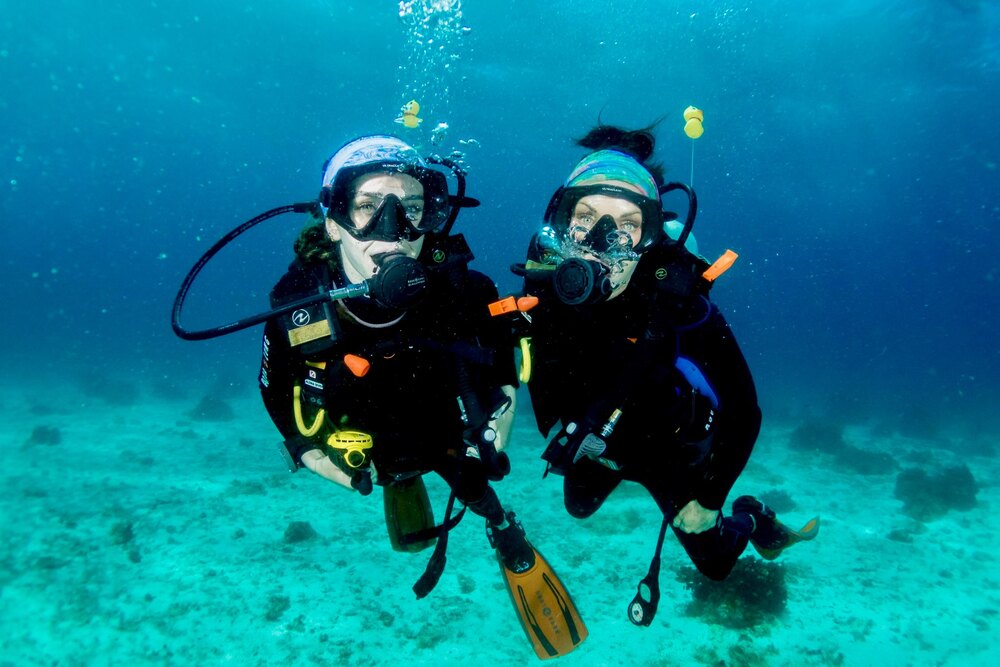
Andrea Phillips and daughter Rachel diving off Balicasag Island. Photo: Sander
“Taking advantage of the time left before my 18-year-old daughter leaves to start college, the two of us jetted off on a 10-day scuba diving trip to the Philippines from late March to April. After in-depth planning with Andrea, an expert on unique travel in Asia, we chose the Dauin coast and Panglao Island, off Bohol, for our trip, as this was an excellent time to visit for great weather and diving conditions. Our goals were simple: level up our scuba certifications, immerse ourselves in welcoming cultures, and, finally, cross off swimming with whale sharks from our bucket list! Andrea and his team planned it perfectly, starting with a special airport welcome that whisked us from the arrival gate and quickly through a chaotic Manila airport.
Our first stop was Atmosphere Resort, where my daughter earned her Advanced Open Water Diver certification under the guidance of their skilled dive masters. We explored local dive spots and Apo Island, a beautiful marine reserve. The relaxing resort was wonderful after diving, with its refreshing pools, delicious food, a sanctuary spa, all while being cared for as Andrea’s VIP guest by the warm and friendly Filipino staff. It all brought back memories of doing my own AOW certification in Asia 25 years ago.
Moving on to Amorita Resort, we spent our days diving at Balicasag & Pamilacan Islands with another great dive team recommended by Andrea and earned our Enriched Air Diver certifications. Andrea also surprised us by sending an underwater photographer along on our first dive to capture a forever moment on our mother-daughter adventure under the sea. Saving one of the best days for last, our Bohol countryside tour was incredible, from swimming with a group of large whale sharks to cruising on a private Lomboc River boat with live music, hanging out with Tarsier and macaque monkeys, admiring the famous Chocolate Hills of Bohol and even enjoying coconut wine at a local’s home. It was a perfect conclusion to our unforgettable journey in the Philippines.
One of the best aspects of traveling with Andrea was his responsive support team, always just a WhatsApp message away. They swiftly resolved any questions or issues we encountered, such as when there was a mix-up with our room at Amorita, and they went the extra mile to secure a complimentary upgrade for us. Their extensive network within the local communities demonstrated their dedication to ensuring a memorable experience for us.
This trip was tailor-made for our needs, combining the best dive resort locations for our goals, avoiding crowded tourist spots for the whale shark encounter, and adding in authentic cultural stops and touches to make each day unforgettable, including celebrating my birthday. Even though initially I had some reservations about taking this trip, as sometimes it’s difficult to find the right time to travel, it ended up being a wonderful experience and one that will hold memories for us that we will always treasure. Pushing ourselves to try somewhere new and doing it together, made it even more thrilling and well worth the efforts, especially with Andrea, Pablo, Lauren, Michael and the rest of the team to support us along the way.” —Andrea Phillips
Read more reviews of the Philippines trips. To get your own WOW trip, start with our trip questionnaire, reached via the black button below.
START A TRIP TO THE PHILIPPINES
India: “One of our favorite stops was the Dera Amer camp, an animal sanctuary and home of elephant rescues…”
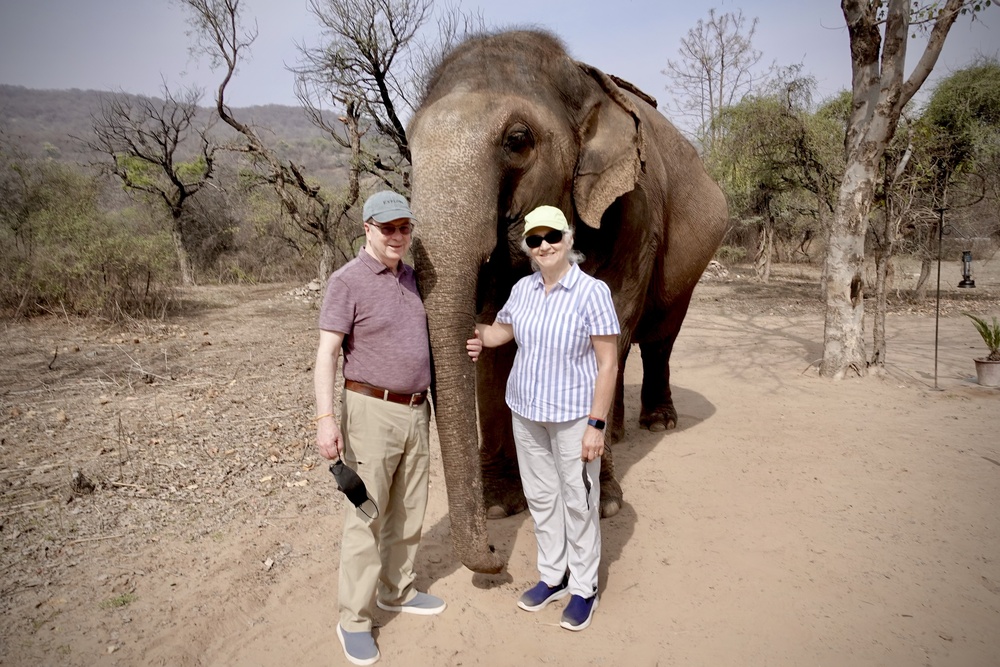
Michael and Lisa Riggs with new friend Rangmala at the Dera Amer sanctuary.
“As with every WOW List specialist we have worked with over the past five years, we found that Victoria had everything planned and arranged to perfection. Any glitches were handled and fixed immediately. Most notable, after I left a packing cube with my husband’s polo shirts in the Delhi hotel, Victoria’s team managed to retrieve them and get them to us, via a variety of drivers and tour guides, at a later destination. Meanwhile, our guide Vanch suggested we get some shirts made, which was fun, inexpensive, and quick. A great souvenir from India, whether or not you lose yours.
The hotels were 5-star, gorgeous, and even historic. At The Imperial in New Delhi, the site of many historic meetings, we enjoyed sitting at the same table Gandhi did!
In Agra, we were surprised by our WOW Moment: an authentic Hindu marriage ceremony for us! We participated in the rituals, learned a lot, and enjoyed the experience of ‘renewing our vows’ in a different culture. Now we will be together for 7 lifetimes, the priest told us. Luckily, we’re good with that.
Our WOW celebration continued with an excellent dinner of Mughal tandoor cuisine, with a traditional Santoor musician, at the highly rated Esphahan restaurant in our hotel, the Oberoi.
It was wedding season in Rajasthan, and it was fun to see things even more ornately decorated than usual, including horses, elephants, vehicles in the streets and our hotel, The Taj Rambagh Palace (a former Jaipur Maharaja’s palace). The elaborate Mughal gardens were the site of a large and lavish wedding reception, all day and into the night. It was fun and interesting to witness. Even the staff was impressed.
One of our favorite stops was the Dera Amer camp, an animal sanctuary and home of elephant rescues. We fed and took a walk with Rangmala and her mahout, and she allowed us to pet her and pose for photos.
We saw sunset and sunrise at the Taj Mahal and were thrilled to tour the inside of this monument and many other historic forts, temples, mosques and palaces. It was a beautiful trip to a most interesting country.” —Lisa Riggs
Read more reviews of India trips. To get your own WOW trip, start with our trip questionnaire, reached via the black button below.
START A TRIP TO INDIA
Southeast Asia: “We were the only ones there, drifting through the lily pads watching the birds and sunset. It was beautiful and peaceful.”
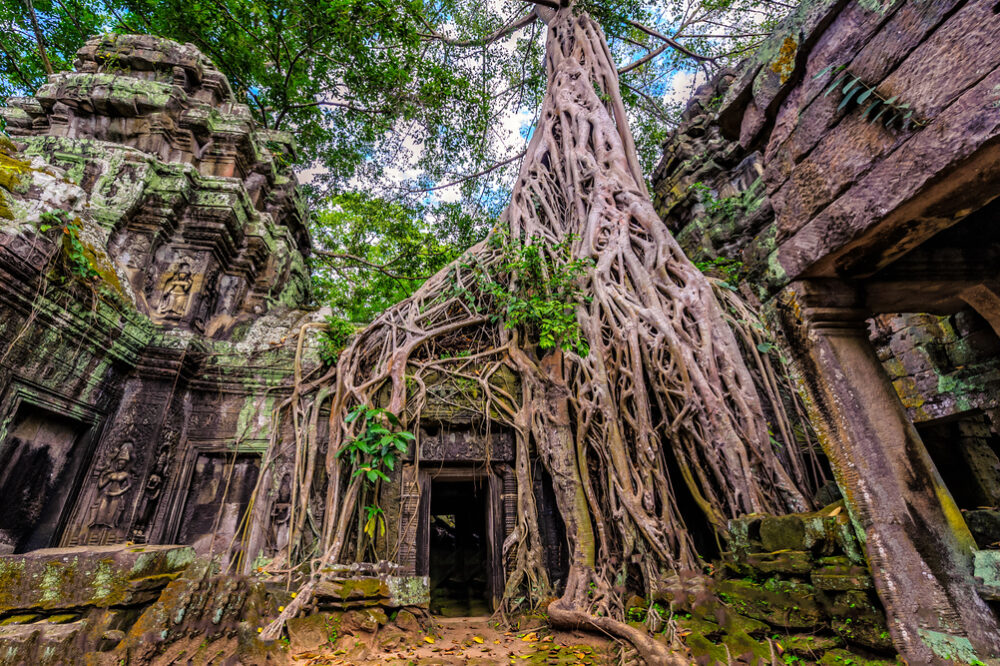
Ta Prohm temple ruins in Angkor, Cambodia. Photo: Shutterstock
“My wife, 22 year-old daughter, and I visited Thailand, Laos, and Cambodia. The local guides arranged by Sandy and Ethan were knowledgeable, eager to take family pictures for us, and easy to work with as we tweaked some of the details of our itinerary as our trip progressed.
In Chiang Mai we went on a beautiful two-hour hike on the Pha Dok Sieo Nature Trail in the Doi Inthanon National Park. There was a river with multiple waterfalls along the way. The hike ended at a pretty farm in the hills with water buffalo roaming around, where we had a cup of locally grown coffee and a nice lunch at a small restaurant. Speaking of food, the Khao Soi curry in Chiang Mai was one of our food highlights.
In Laos, our guide had excellent knowledge of Buddhism and relationships with local Buddhist monks, so we spent time with the monks learning about their religion, sitting with the monks as they chanted, and participated in the custom of giving alms (making merit) where we provided the monks with their morning breakfast before sunrise. It was unique and educational. Our guide also hosted us at his family house for a wonderful dinner and Buddhist ceremony attended by numerous members of our guide’s extended family. We visited some villages to see how local farmers and craftspeople live, including talking with women making papadam and men distilling local moonshine, both of which we tasted. We also had a lovely and relaxing and scenic private boat ride down the Mekong river, returning to Luang Prabang from the Pak Ou caves as the sun gradually set.
In Siem Reap, Cambodia, we attended the roughly hour-long Phare ‘circus,’ a high-energy, very entertaining, and unique experience, and it’s for a good cause. Of course, we visited the massive ancient Angkor temples, which are incredibly impressive, and each one was different. The Ta Prohm temple with the massive trees growing on it is a must-see. One of our more special moments in Cambodia was when our excellent guide arranged to take us out on two small boats (just a bit bigger than large canoes) on one of the ‘moats’ (really a manmade lake) just before sunset. A local paddler gently moved the boats across the calm waters as our guide mixed gin and tonics for us and provided snacks. We were the only ones there, drifting through the lily pads watching the birds and sunset. It was beautiful and peaceful.” —Joe Coco
Read more reviews of Southeast Asia trips. To get your own WOW trip, start with our trip questionnaire, reached via the black button below.
START A TRIP TO SOUTHEAST ASIA
Bhutan: “Peaceful, calm, clean, welcoming, safe and fascinating, with people full of warmth…”
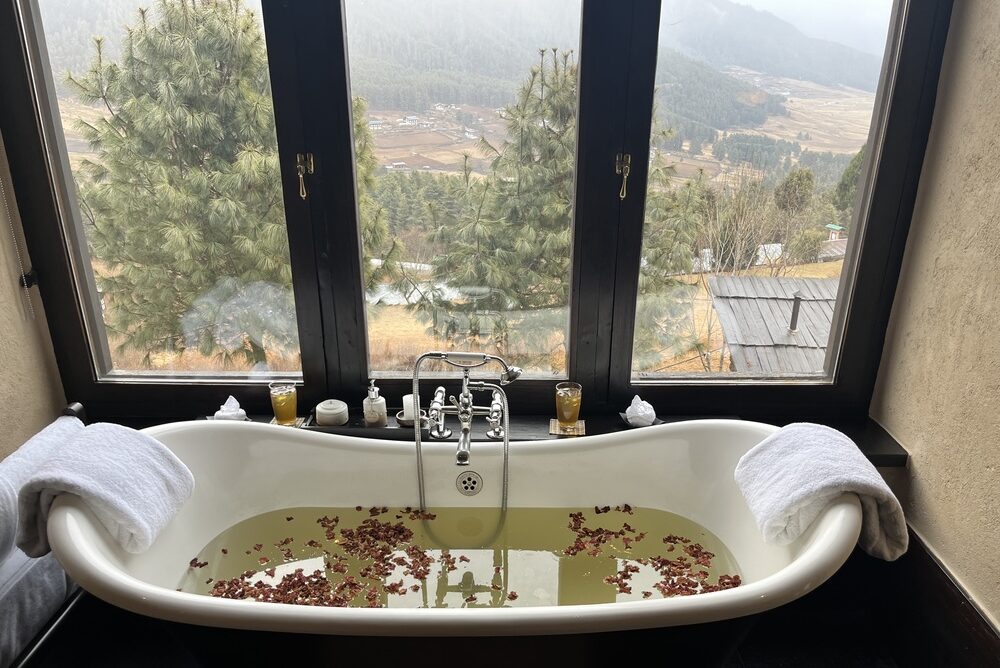
An herbal bath with a view at Bhutan’s Gangtey Lodge. Photo: Traveler Wendy Tucker
“My husband and I just returned from a fantastic two-week-plus trip to India and Bhutan. We have been lucky enough to travel to many places, but we both declared at our return that this was our favorite destination. Sanjay planned a perfect trip and we are so grateful to him and his local agencies for their knowledge, punctuality, kindness and seamless handling of everything. When I initially contacted Sanjay, our plan only included Bhutan. There are no flights to Bhutan from the US or Europe—you need to go through India or Thailand. We had never been to India, so Sanjay suggested that we fly into Delhi (one of the cities you can access Bhutan from) and spend a few days to see the Taj Mahal. We were so glad we took his advice.
Overall, we found Bhutan to be peaceful, calm, clean, welcoming, safe and fascinating, with people full of warmth, interest and kindness. We stayed at four incredible properties, each with their own flavor, beauty and charm. My favorite was Gangtey Lodge. Gangtey Lodge was the furthest east we traveled and is high above a beautiful valley. It snowed when we were there, so we enjoyed herbal baths gazing from the tub out over the valley.
We filled our days with visits to fortresses, nunneries, temples and monasteries—we loved them all, although our favorite was Gangtey Goenpa Monastery. We spent almost three hours there participating in a tea ceremony with the monks and discussing Buddhism and life in a monastery with a senior monk.” —Wendy Tucker
Read more reviews of Bhutan trips. To get your own WOW trip, start with our trip questionnaire, reached via the black button below.
START A TRIP TO BHUTAN
India: “The weather was perfect, the guides were flexible and kind, and India is truly a magical place.”
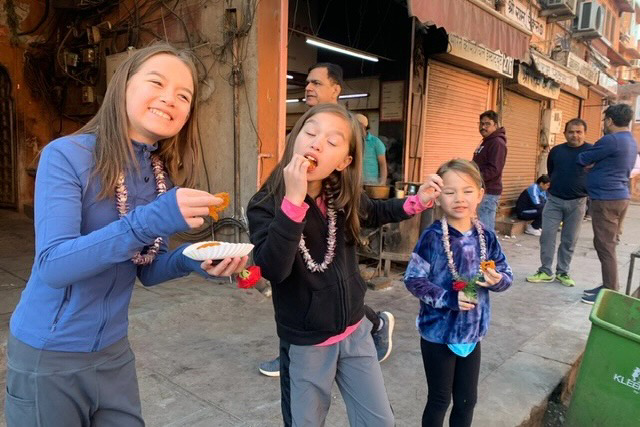
Tasting jalebi, an Indian sweet, during a tuk tuk tour. Photo: Traveler Mary Ko
“Our family has been on many trips. We usually use Wendy Perrin’s List because all the companies offer flexibility and we travel with young kids (ages 11, 9, and 5). We went to India February 28th- March 9th, and it was our best family trip to date. I know part of this was because we finally don’t have a kid under 4 with us, but the other part was Victoria—and Narji, our guide. We went to Agra, Jaipur, and Udaipur. There was so much to offer for everyone.
The kids’ favorite parts of the trip were the shopping, the block printing, feeding peacocks at Taj Rambagh, and seeing elephants at the Sanctuary. My husband and I loved the Oberoi hotels, the gems, the Taj Mahal, the love of Western travelers we felt, the tuk tuk ride, the historic sites, and so much more. The weather was perfect, the guides were flexible and kind, and India is truly a magical place. We have already purchased the things needed to try to make our own jalebi, and we loved the tea!!!
We hopped airports a bit to quickly jump cities, and our driver would drive our luggage so we only had a backpack and snacks, making flying headache-free. What I love about Victoria is that we had flexibility with kids—meaning, if we cancelled something because they needed downtime, it was fine, or if we had to change things quickly, it was no big deal. An amazing adventure!!” —Mary Ko
Read more reviews of India trips. To get your own WOW trip, start with our trip questionnaire, reached via the black button below.
START A TRIP TO INDIA
Sri Lanka: “Wonderful experiences including a cooking class, a mask carving and painting workshop, and visits to a cinnamon plantation and to a tea factory…”
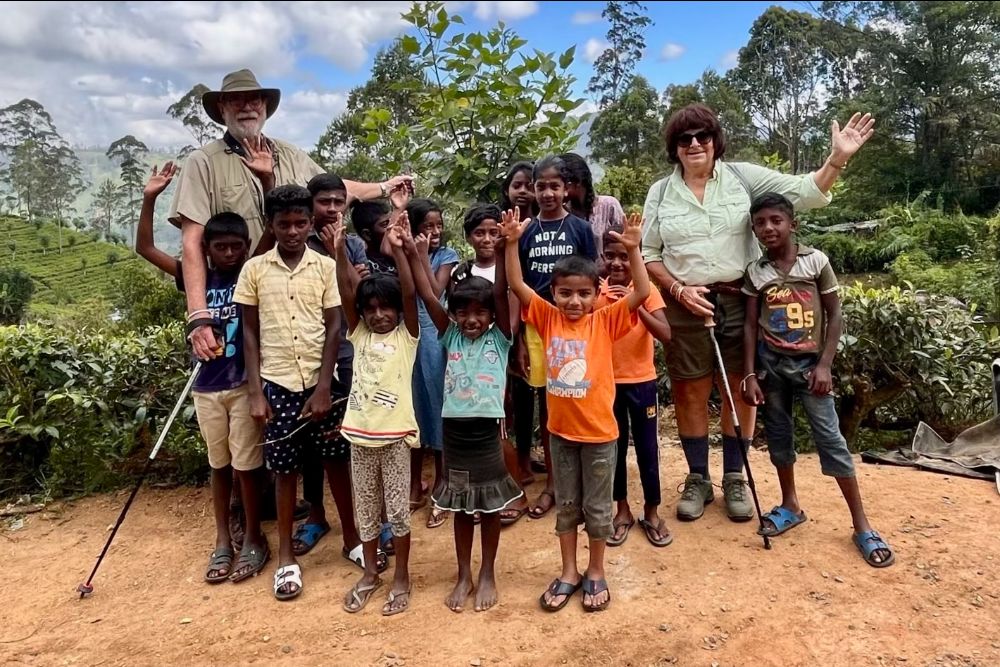
Jan Heininger and husband Jamie Reuter meeting village kids on a Tea Trail hike.
“We had a three-week trip to Sri Lanka planned by Miguel. This very interesting trip covered almost the entire country from the Cultural Triangle with its archaeological ruins, cave temples and Buddhist sacred sites, its historic capitals of Anuradhapura and Kandy, its largest national park (Yala) famed for its leopards, its gorgeous Indian Ocean beaches, its colonial past displayed in the Galle Fort, and its myriad of agricultural products, especially tea and cinnamon.
Miguel’s skill in putting our trip together started when he built in an extra day of rest after our arrival. I agreed to add in the day, in spite of not thinking it necessary—until it was. A snowstorm delayed our departure from DC, causing us to miss our connecting flight in Doha. We ended up with a 9-hour airport layover and didn’t get to our hotel until 4 am. We were very grateful to sleep late the next morning and snooze by the pool that afternoon.
Miguel also ensured that we had a flexible schedule. Our driver, Thissa, could say, “Let’s stop and see that bird,” or we could stop and taste a Golden coconut or visit a local market where we were introduced to many unfamiliar vegetables and fruits that are essential elements of Sri Lankan cuisine.
Miguel had us stay in wonderful places, including two Aman resorts on the south coast. At Amanwella, we took one of the best cooking classes we’ve ever had with the Executive Chef. At Amangalla in Galle Fort, we went for a bike ride in the countryside (beware of heat exhaustion), toured the Fort with a terrific local guide, and had a workshop making and painting traditional Sri Lankan masks. Miguel also booked us into Castlereagh, a five-room, former tea plantation manager’s bungalow. We were told to treat it like our home—just tell them what we wanted to eat and when.
Miguel set up wonderful experiences including the cooking class, a mask carving and painting workshop and visits to a cinnamon plantation and to a tea factory. He had us hike a segment of the Tea Trail where we interacted with women tea pickers and with kids and villagers we encountered along the way.
We could not have planned this trip by ourselves. Miguel has access to unique experiences. We spent an afternoon in Kandy with an artist and his artist daughter. Miguel directed us to accommodations he knew would meet our not-even-known-to-us needs. The night before we left Sri Lanka, we were lucky to have dinner with Miguel and his lovely wife. It was a treat to meet with and talk to the man who was behind our trip.
What makes Wendy’s trip specialists stand out from the usual run-of-the-mill travel agents is that they—and Miguel—listen carefully to what you’re looking for in a trip. They have access to experiences you could never find on your own and include things you had no idea you wanted and end up delighted you experienced them. The mask my husband carved from a block of balsa wood and the two we painted are off being framed right now and will always be physical reminders of our time in Sri Lanka.” —Jan Heininger
Read more reviews of Sri Lanka trips. To get your own WOW trip, start with our trip questionnaire, reached via the black button below.
START A TRIP TO SRI LANKA
Southeast Asia: “The diversity of the trip was amazing and included fabulous street food adventures in several of the cities, ringside seats in Bangkok…”
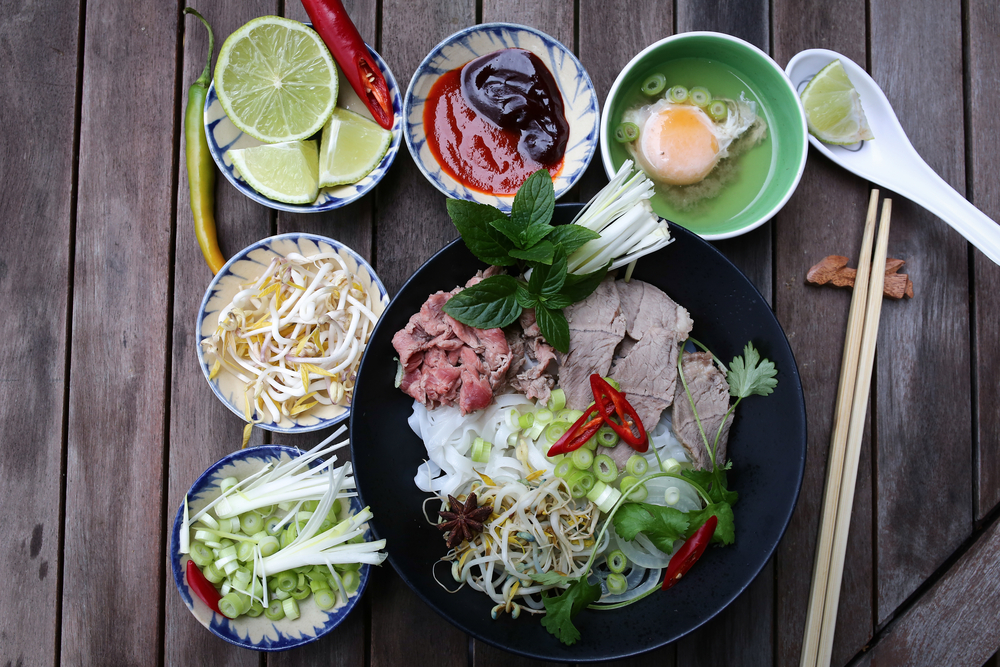
A bowl of Vietnamese rice noodles with beef and other ingredients. Photo: Shutterstock
“Just back from our third trip booked through one of Wendy’s fabulous travel arrangers. In this case we worked with Dan for a 3 ½ week itinerary that started and ended in Singapore, with Chiang Mai, Bangkok, Luang Prabang, Siem Reap, Saigon, Hue, Hoi An, and Hanoi in between.
Dan and his team did a great job attending to all of the details, especially the VIP arrival treatment in the many airports we traversed. The diversity of the trip was amazing and included fabulous street food adventures in several of the cities, ringside seats in Bangkok for Muay Thai boxing, a cruise on the Mekong river from Luang Prabang to the Pak Ou caves (with a stop at a whisky distillery whose bottles contained snakes and scorpions—a bit too much for my taste), sunrise at Angkor Wat, incredible acrobats at the Phare circus, thrilling rides in several cities on cyclos, tuk-tuks, and scooters, and various museums and places that are etched in memories of those of us that grew up in the Viet Nam war era. Lots of lessons to be learned from that time.
But perhaps the most interesting part of our visit involved a dinner and musical performance at the Ben Xuan Garden House. When we saw this on the agenda, we thought ok, that could be a nice evening. Well, the host, Camille Huyen, is six generations removed from the emperor and is an incredible artist. She designed the home using bricks from the rubble of the destroyed Imperial Palace area, has her paintings on display throughout the home, and provided vocals alongside some fabulously talented musicians whom she personally selected and developed from the local university. After the performance we were treated to an amazing dinner and wonderful conversation with Camille and Ngo Truong Dinh, her husband and a former banker during their time in Switzerland. This evening was one of the more remarkable events of many years of travel around the world.” —Mike and Marilyn Modak
Read more reviews of Southeast Asia trips. To get your own WOW trip, start with our trip questionnaire, reached via the black button below.
START A TRIP TO SOUTHEAST ASIA
Sri Lanka: “We saw beautiful Buddha temples…hiked mountains with spectacular views, went on a jeep safari…”
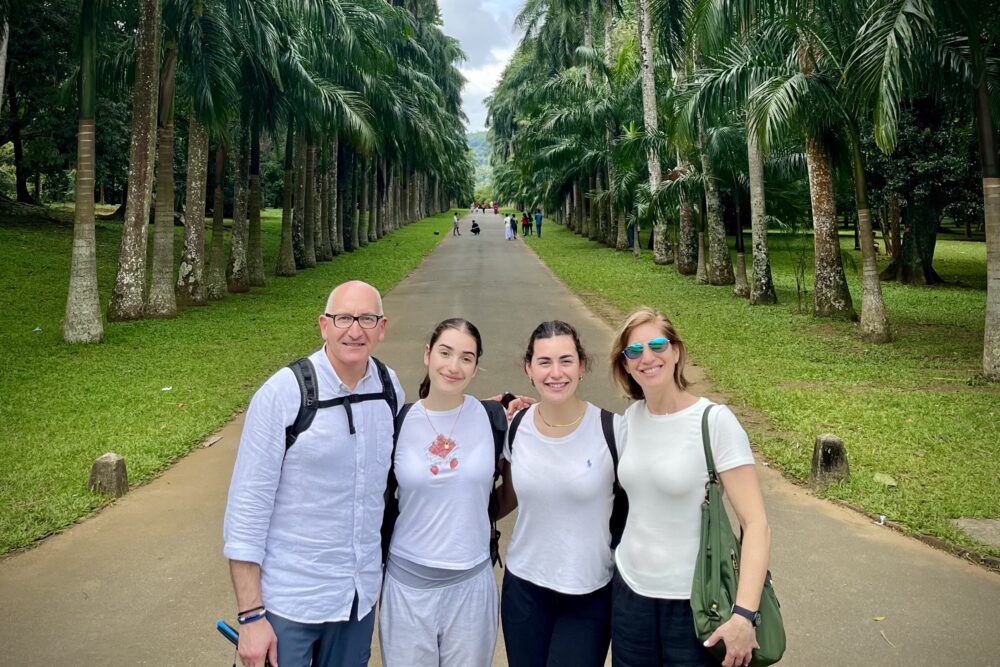
Pam Greenstein and family on Peradeniya Botanical Garden’s Avenue of Royal Palms.
“We had an incredible vacation to Sri Lanka over the Christmas holidays with our two daughters, ages 21 and 18. We had just celebrated our 25th wedding anniversary and wanted to do something special with them. We were there for 2.5 weeks and stayed in 9 different boutique hotels. They were all fantastic! Our guide was absolutely outstanding. He added so much to the trip by getting us into various cultural events, restaurants, markets, and experiences. We never had to wait in line! He was also very caring with our girls when they were tired and needed a break. His passion for the country was instrumental in our learning about the culture and history, and eating incredible food.
We saw beautiful Buddha temples, rode the famous train to see the incredible topography, learned all about tea country, hiked mountains with spectacular views, went on a jeep safari and got up close elephants, leopards and water buffalos; rode bikes through rice paddies, had a wonderful massage and sauna, toured a gem mine to see how they make beautiful jewelry, and swam with the sea turtles. The highlight was our farm-to-table cooking class, picking fresh vegetables at the market and then making Sri Lankan rice and curry dishes with local chefs. It was fun and delicious.
We had various anniversary cards, cakes, and champagne when we arrived at our hotels, such a warm and caring gesture from the staff. This was our third trip working with Wendy and her team, and as usual, they did an outstanding job planning every detail.” —Pam Greenstein
Read more reviews of Sri Lanka trips. To get your own WOW trip, start with our trip questionnaire, reached via the black button below.
START A TRIP TO SRI LANKA
Thailand: “The stories behind some of the elephants were heartbreaking, but it was good to know that they could live out the rest of their lives being well taken care of.”
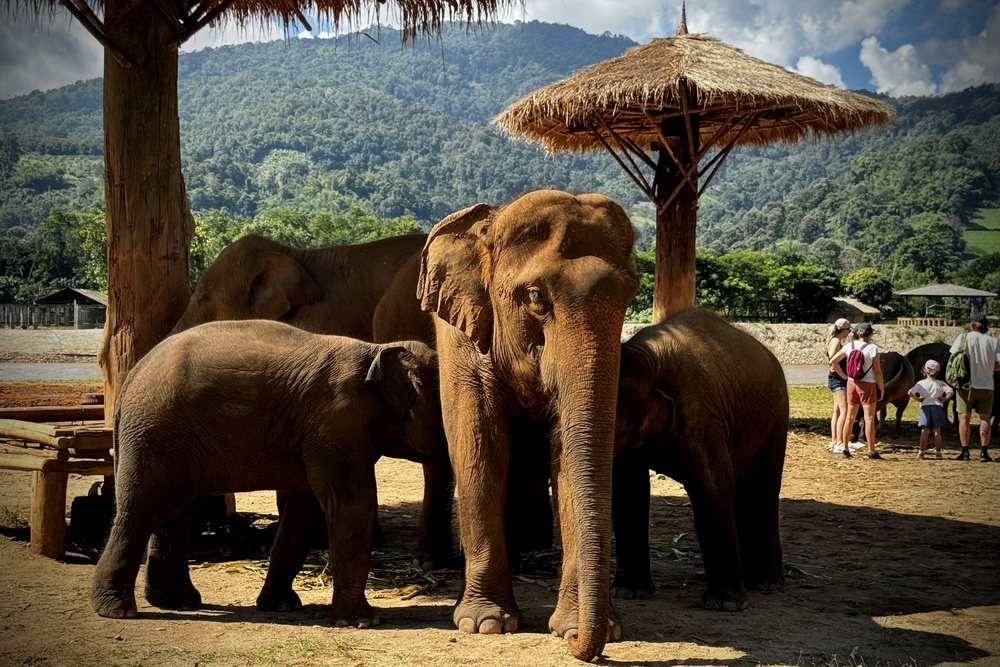
The Elephant Nature Park outside Chiang Mai, Thailand. Photo: Traveler Bruce Tylock
“With a short lead time of about two weeks due to my last-minute China business travel, we decided to use Wendy Perrin’s travel service. We were matched up with Dan and Obb. We wanted to focus on food, culture and markets. We had a great time experiencing the street food of Bangkok. Thailand street food is amazing. We also loved our longboat tour to see the sights in Bangkok from the river. From the water, we saw the Wat Paknam giant buddha that was incredible.
From there, we were off to Chiang Rai and Chiang Mai. We loved our guide, Yawan, for this portion of the trip. We loved our hike through the tea and coffee fields in Chiang Rai. Yawan knew all the different types of plants along the way, and it was very interesting to see all the different herbs, fruits, and vegetables growing along the roads. We had a great stop at the Elephant Nature Conservation Sanctuary Park outside of Chiang Mai. The stories behind some of the elephants were heartbreaking, but it was good to know that they could live out the rest of their lives being well taken care of by the staff at the camp.
We were then on to the final leg of our trip in Phuket—and Dan and Obb saved the best activities for last! Our guide, Pong, gave us a great overview of Old Town Phuket and took us out for some delicious food at some local favorite restaurants. The next day was our favorite excursion of the whole trip: The John Gray sea kayak tour. Everywhere we looked was incredibly beautiful, and we will forever remember the night kayaking where we made an offering to the water goddess and got to see the luminescent phytoplankton, which was an amazing sight!
It was tough to follow up the sea kayaking, but we also had a great time at our cooking class the next day. Chef Pui at the Brass Wok was so much fun to talk with about food and restaurants, and she showed us how to make several delicious Thai dishes. I’d always been intimidated by Thai cooking. However, when I arrived back home the following week, I headed to the Asian grocery store for supplies and was able to reproduce the same delicious dishes that Chef Pui taught us to make.
It was very thoughtful that our guides in the different areas communicated with each other so that it felt like the guides already knew us when we arrived. When we told Dao in Bangkok that we were interested in getting some makrut lime leaves to take home with us, she contacted Yawan in Chiang Mai, who gave us a bag of dried lime leaves from the tree at his home.” —Amy and Bruce Tylock
Read more reviews of Thailand trips. To get your own WOW trip, start with our trip questionnaire, reached via the black button below.
START A TRIP TO THAILAND
Oman and Jordan: “All was well and safe…”
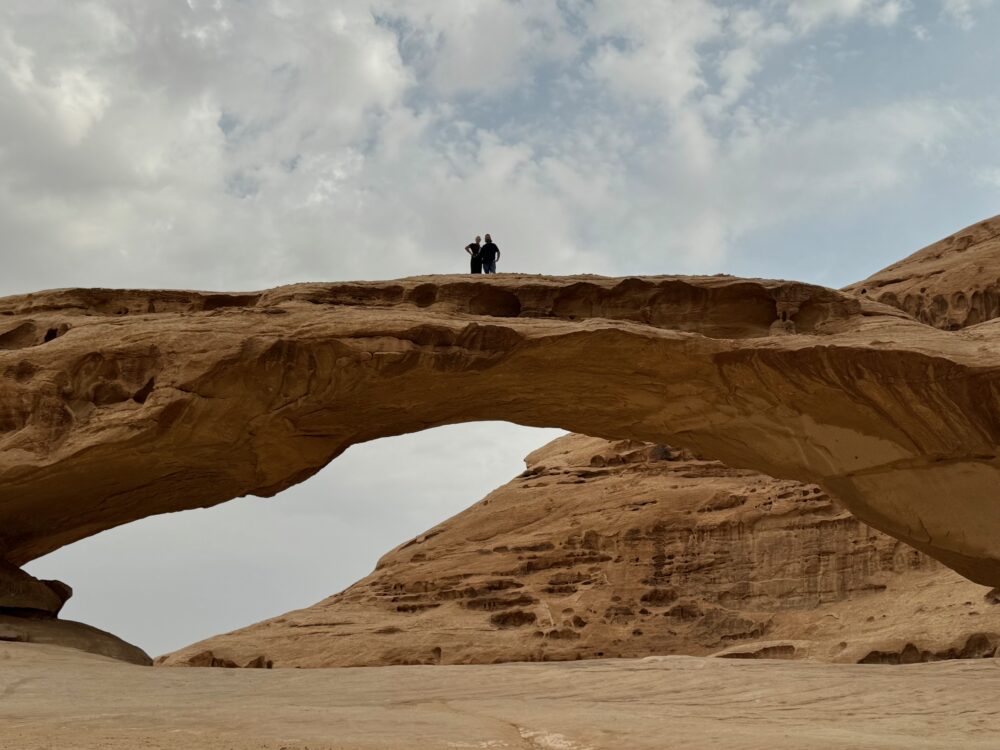
Amy Evers and her husband atop a rock arch in Wadi Rum, Jordan.
“Our trip to Oman and Jordan October 14th- Nov. 1st, 2023, was extraordinary! Even with the slight unease regarding the war, while in Oman and Jordan, all was well and safe. There did seem to be some extra military presence in Amman but that didn’t interfere with our trip. We are very happy we did not cancel!
Out trip planner, Daniel, did a wonderful job talking through everything with us ahead of time. He was honest about his thoughts about things that are worth it and that aren’t. Some of the highlights of our trip were:
Oman: Eating and drinking dates and Omani coffee with locals, dinner with a local family in Muscat, learning about the culture, talking with a local at the Grand Mosque to learn more about Islam, swimming and exploring Wadi Shaab and Wadi Bani Khalid, dune bashing in Wahiba Sands, the via ferrata course in Jebel Akhdar, biking down the mountains in Jabel Shams, the random barber shop experience for my husband to get his beard trimmed (hilarious and wonderful cultural experience), and the balcony hike in Jebel Shams.
Jordan: Petra during the day/night and the back door hike in, SCUBA diving the wreck in the Red Sea (not organized by Dan), ‘soft’ canyoning in Wadi Al Mujib, floating in the Dead Sea (so unique and funny!), and discussions about current issues with our guide.
I feel very lucky to have experienced this trip, especially in today’s political climate. It is always good to learn more, have more awareness and to become better global citizens. Thank you!” —Amy Evers
Read more reviews of Oman and Jordan trips. To get your own WOW trip, start with our trip questionnaire, reached via the black button below.
START A TRIP TO OMAN AND JORDAN
Indonesia: “An exceptionally beautiful country, with interesting history, gorgeous art and relics, and incredible food….”
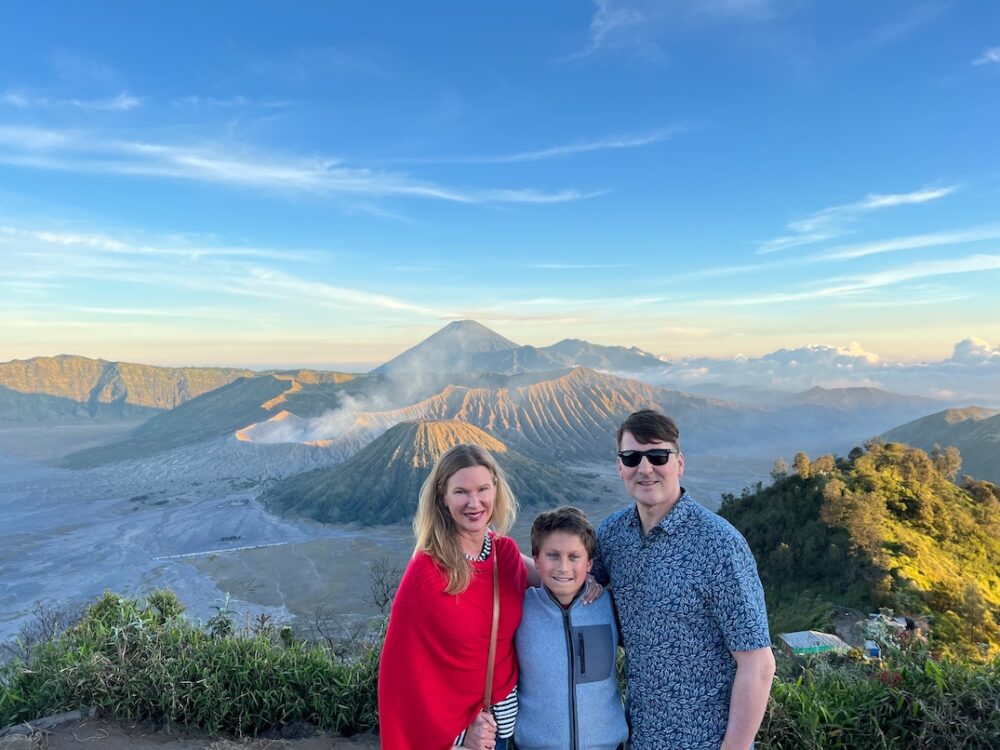
Chris Kloes and her family in East Java, Indonesia, viewing Mount Bromo and its caldera at sunset.
“Our trip to Indonesia vastly exceeded our high expectations! We thought Indonesia was an exceptionally beautiful country, with interesting history, gorgeous art and relics, and incredible food. And the people were unfailingly kind everywhere we went. We are grateful for Diane’s help. She helped shape this trip from the initial concept to the finished itinerary and also deftly managed a curveball along the way. She’s deeply knowledgeable and unflappable, exactly what you want from a travel planner. Highly, highly recommend her!
Our family trip (me, my husband, and my 12-year-old son) was 3 weeks long and had 4 distinct chapters, which flowed very well.
Mt. Bromo
Diane helped us navigate a curveball at a destination we had initially planned to visit after the hotel was hit by lightning and had limited electricity as a result. Diane suggested a couple of alternatives and we decided to change that leg of the trip entirely. We are so glad we did and are so happy we went to Mt. Bromo! The Plataran Bromo was one of the best hotels we’ve stayed at in the world (and we’ve been to fabulous hotels in over 50 countries), both the facility, but especially the exceptional level of service. We met so many kind people there and ate truly delicious food. The staff went over-the-top to help our son, even going as far as to take him horseback riding while we enjoyed a massage. This was definitely our favorite of all of the lovely hotels and places we stayed. Our excursions were also very memorable. I mean, we rode horses across a sea of sand and climbed an active volcano! We especially appreciated the sunset tour of Mt. Bromo and the caldera. We were virtually alone to watch the sunset and had some unparalleled views.
Yogyakarta
Diane connected us to a local guide, Emmanuel, who was amazing. His English was excellent and he had a wealth of interesting info to share with us. We loved the sunrise breakfast at the hotel overlooking Borobudur, and especially appreciated the talk by the local guide who ran the breakfast. That guide had a deep knowledge of Borobudur and shared details about the history and importance of the temple. We also loved visiting the temple — it is truly amazing and so beautiful. We had an excursion and our son really enjoyed learning how to make batik. The people who worked at the batik shop were all very patient and sweet to him as they showed him the multi-step process. Plataran Bromo was again an exceptional property. We lucked into an incredible room, with a private pool overlooking Borobudur. It was incredible to look out as the sun set, the bats dipped in and out of our pool, and the numerous calls to prayer competed in a hypnotic melody. The villa was excellent, with our master bedroom and a comfy large cot in the adjoining room for our son. We enjoyed seeing Yogyakarta, touring the Water Castle and Sultan’s Palace — we took local rickshaws, which was a ton of fun and a great way to see the area.
Gilli Trawangan
Diane helped us with the overview of this island, but we managed most of the details here ourselves, as we had a rental home. We are glad that we stayed at the north end of the island, close to Turtle Beach. It was stunningly beautiful and much quieter than the east side, which is more of a party area. Being able to snorkel at the beach right across from our villa was amazing, and we saw many sea turtles, which was a magical experience.
Lombok
This felt like the most authentic leg of our stay. Diane recommended the gorgeous Hotel Tugu Lombok, which is rich with antiques and local art. We had a magical room, with the private pool overlooking the beach. The location is fairly remote, but we took advantage of the hotel’s bikes to explore the local area. Everyone was so welcoming!! My husband and son took a walk down the beach by the local public beach area, which was cute as they met some local girls who were especially interested in talking with our son. Our local guide was able to help us pivot after we decided we wanted some changes to the planned activities, and we visited a fantastic local market that was only about 1 hour from the Tugu. We also took a cooking class arranged by the hotel, which we all really enjoyed. We cooked local specialties and then ate our creations at a feast of a lunch.
Overall, this was an incredible trip and we highly recommend going to Indonesia and using Diane to help plan your trip!” —Chris Cloes
Read more reviews of Indonesia trips. To get your own WOW trip, start with our trip questionnaire, reached via the black button below.
START A TRIP TO INDONESIA
Japan: “A cooking class at the home of a chef with an amazing history, visiting a sword maker, and a sake (actually nihonshu) tasting class…”
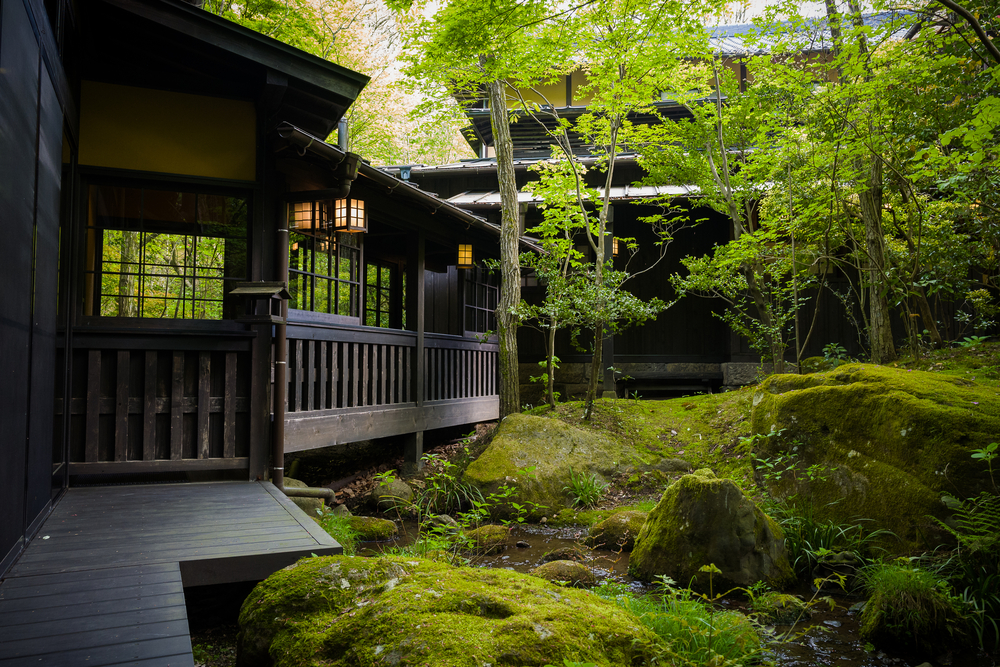
A traditional onsen ryokan Japanese hotel. Photo: Shutterstock
“Our family of 6 (mom, dad, and four 20-something kids) recently got home from a 16-day trip in Japan created by Scott’s colleague Jason. Jason helped us shape a trip that worked well for our family and really took into account our interests and preferences. We started in Tokyo with our guide Narumi, who stayed with us for the whole trip. Our guide met us the first day and suggested we go ‘off itinerary’ for a special local event, the Kanda Myojin Shrine Parade, and we watched hundreds of people from many neighborhoods celebrate and dance with their shrines. We also saw all the major sites and had a few special and memorable experiences: our favorites in and near Tokyo were a cooking class at the home of a chef with an amazing history, visiting a sword maker, and a sake (actually nihonshu) tasting class. For the rest of our trip we had fun finding and ordering sakes of different types.
We next visited Kanazawa to see several UNESCO World Heritage Sites that were beautiful and interesting and stayed in a fantastic onsen ryokan that gave us a taste of hot-spring bathing and provided more of a Japanese feeling than traditional western hotels. In Kyoto, we visited temples—some with amazing views—a bamboo forest, a building housing 1,000 Buddha statues from the 1200s, and some terrific shrines. We had a Taiko drum class—a real hoot for the whole family—and had a moving and relaxing Zen Buddhism experience. We saw many gorgeous meditative gardens where we could have spent hours. Our daughter also found a ‘Pig Café’ (think ‘Cat Café’ but with little pigs) which was…different and fun.
En route to Kyoto, one of our kids left a phone on the train and our guide did a great job of working the (impressive) Japanese systems for finding and reclaiming lost items—far, far different than it would have been in the U.S. And yes, we got it back three days later before leaving the area.
We specifically requested a stop in Hiroshima, which we found particularly moving and profound and such a testament to the evil of nuclear weapons and resilience of the Japanese people. A local specialty, an Okonomiyaki dinner, was a real treat—never had anything like it. Another favorite location was Naoshima, which was completely Jason’s suggestion. We’d never heard of it. We’ve told several friends about ‘the art islands’ since we’ve been back. We could have easily spent an extra day or two, and the art and experience was truly memorable.” —Andy Kaplan
Read more reviews of Japan trips. To get your own WOW trip, start with our trip questionnaire, reached via the black button below.
START A TRIP TO JAPAN
Indonesia: “As special as Bali is, Flores Island/Komodo National Park (a 1-hour flight from Bali) was the highlight of the trip for our family.”
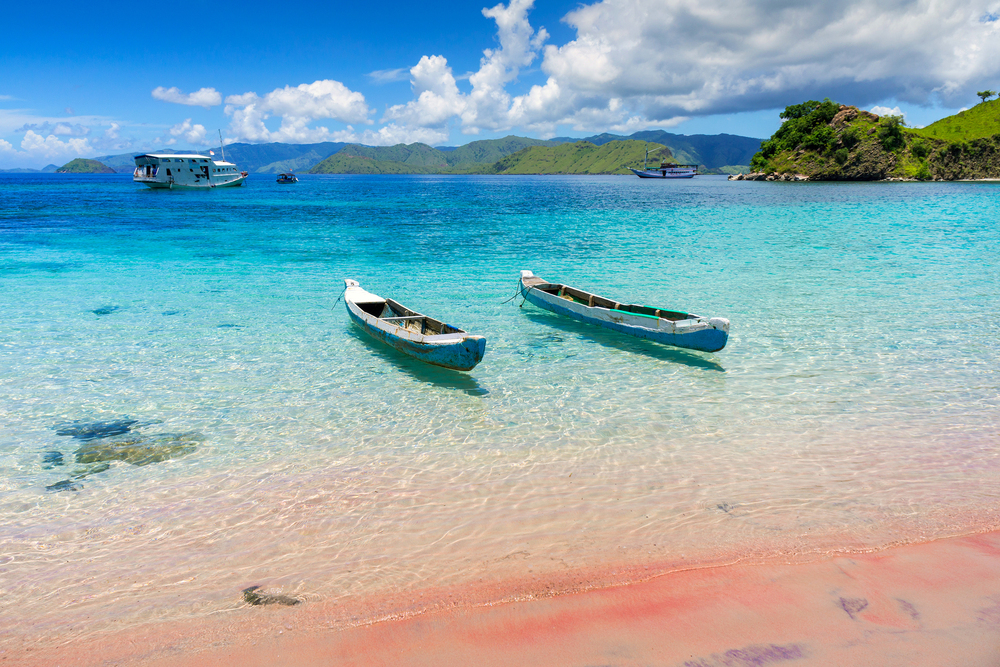
Komodo National Park in Nusa Tenggara. Photo: Shutterstock
“Overall our trip to Bali and Komodo was absolutely amazing, and I can’t thank Diane enough for her guidance in planning. As special as Bali is, Flores Island/Komodo National Park (a 1-hour flight from Bali) was the highlight of the trip for our family. The experience of trekking around Rinca and Komodo Islands to see the Komodo dragons was incredible. And very little trekking needed to view them, really—there were several of the giant lizards cruising the pier and beaches when we arrived by speedboat at Komodo! Later on, snorkeling at a beautiful pink sand beach was literally like diving into the world of Finding Nemo, and we also marveled at the giant fruit bats, emerging from their roost in the mangroves at sunset.
Truly magical and I only wished we had allotted more time to explore this beautiful area, which is about to explode with tourism, given the Indonesian government’s plan to promote the region. Several new hotels are under construction—go now while it’s still somewhat quiet!” —Karen Dalton
Read more reviews of Indonesia trips. To get your own WOW trip, start with our trip questionnaire, reached via the black button below.
START A TRIP TO INDONESIA
Vietnam, Cambodia & Laos: “I flew by helicopter to the even more remote and off-the-radar locations of Preah Vihear and Prasat Banteay Chhmar…”
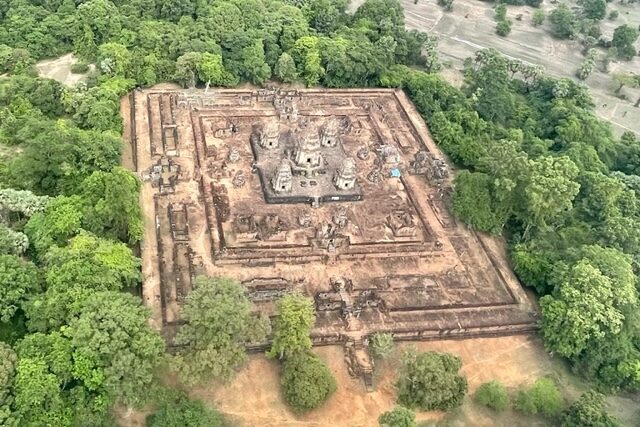
Aerial view of temple ruins by helicopter. Photo: Jeannie Mullen
“On a lark, and with spot-on advice and counsel from Wendy about where to go on short notice, I booked a trip to Southeast Asia. Wendy put me in touch with Sandy and Ethan and, just as she said they would, they were able to turn on a dime.
I don’t think I’ve been to that many UNESCO World Heritage Sites in one single trip, ever. Every planning detail, including Fast Track airport service (where available) for arrivals and departures, was taken care of with great care and attention.
Siem Reap, Cambodia—the place around which the entire trip was planned—was phenomenal. Traipsing in and around the temple complexes and experiencing sunrise at Angkor Wat was a major bucket-list item. Major shout-out to Silen, my guide and Ethan’s friend, for her attention to every detail and working our way into and out of the temple complexes in such a way as to avoid other tourists. She was also a master at pacing the day so as to provide relief from the heat and humidity.
Surpassing those experiences was the day that I flew by helicopter to the even more remote and off-the-radar locations of Preah Vihear and Prasat Banteay Chhmar with Po-Thai Khan, a renowned Cambodian archaeologist. Walking these temple complexes with Thai was one of those pinch-me experiences … he was so interesting, engaging and affirming. And the temples were totally without tourists. Something I will never forget. On the way back to Siem Reap, as we skirted a massive thunderstorm, we flew through a full circle rainbow …how did Wendy manage THAT wow moment?
Thank you so much to Sandy and Ethan, and all of their family and friends in Southeast Asia, for turning a spur-of-the-moment trip idea into a reality for this solo wanderer.” —Jeannie Mullen
Read more reviews of Southeast Asia trips. To get your own WOW trip, start with our trip questionnaire, reached via the black button below.
START A TRIP TO SOUTHEAST ASIA
Dubai & Abu Dhabi: “What a great experience in the desert with private pools at each suite, a desert jeep ride, camel rides, beautiful sunset…”
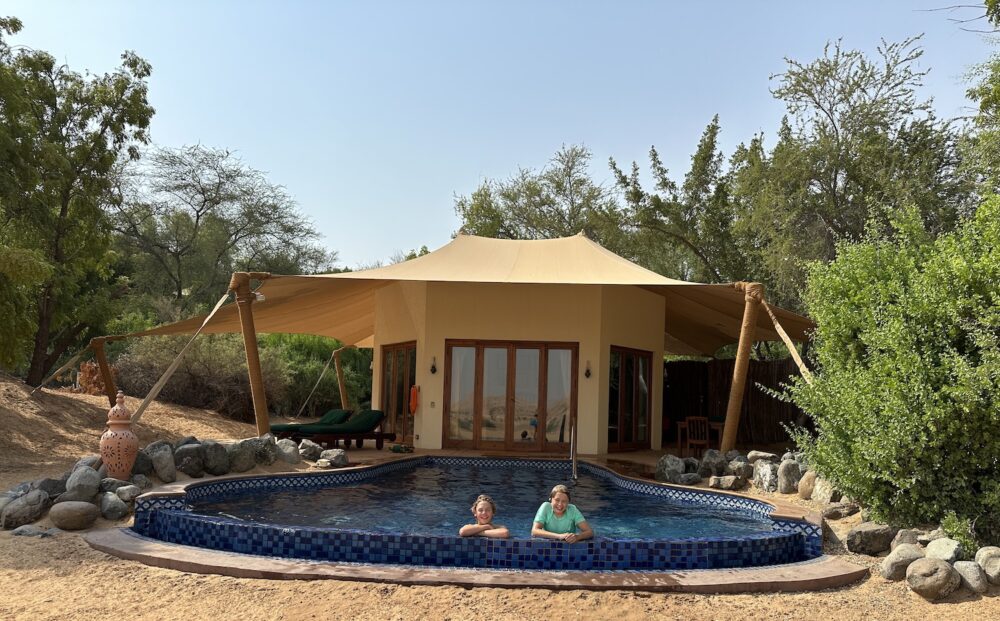
Diane Thormodsgard’s grandsons enjoy their private pool at the Al Maha desert resort.
“My husband and I took our grandsons (ages 14 and 13) to UAE at the end of July for 10 days. We told our grandchildren many years ago they could pick any place in the world for a trip. Dubai was the choice! Although we were skeptical about going there during the summer when it is very hot, Nicholas designed an itinerary that suited all of us perfectly. He listened to our desire to give the boys an unforgettable experience and delivered.
We started in Dubai with a stay at Atlantis the Palm, including exclusive Imperial Club access, after being met with VIP service at the airport. The boys enjoyed Aquaventure and the pool. We also had a Dubai historical tour, visited Museum of the Future, went to the “top of the Burj Khalifa,” had a helicopter ride, and went on a private sunset palm cruise with a crew of four that provided excellent service.
After leaving Dubai, we ventured to Al Maha, a luxury desert resort. What a great experience in the desert with private pools at each suite (boys had their own Bedouin suite), a desert jeep ride, camel rides, beautiful sunset, early morning falconry presentation for the grandparents, and excellent food. Our only regret is we wished we would have spent more than one night there so we could have enjoyed other activities like archery, more time in the pool and watching the many gazelles and rare Arabian Oryx on the property. As the boys said, “this is really cool!”
The next stop was Abu Dhabi, where we stayed at the WB Hotel by Hilton, which is conveniently located near many of the theme parks. After touring Abu Dhabi, which included a tour of the Grand Mosque, we finished our trip with visits to Warner Bros. World, Ferrari World and the recently opened (May) Sea World. All of the parks are covered so the hot weather was not an issue. The new Sea World is absolutely incredible. Ferrari World was the highlight, however, with an individual Ferrari car ride on nearby roads with a professional driver for each grandson.
The trip was a nice mix of history, amazing architecture, and entertainment. The guides and drivers were always early, very professional and top-notch. They readily adjusted our tours (like less shopping time) to cater to our interests. Nicholas was available during the trip for any issues or questions we had. He started working with us to plan the trip 7 months before we traveled and never hesitated to make himself available.
I would highly recommend Nicholas and staff if you are planning a trip to UAE. It was very obvious he has strong relationships with local service providers and is very knowledgeable about the area. We were definitely able to experience a “trip of our lifetime” for our grandsons and us!”—Diane Thormodsgard
This trip was arranged by a WOW List candidate. Here’s what that means.
Ask Wendy
Thailand and Cambodia: “A way of life that we couldn’t have imagined…”
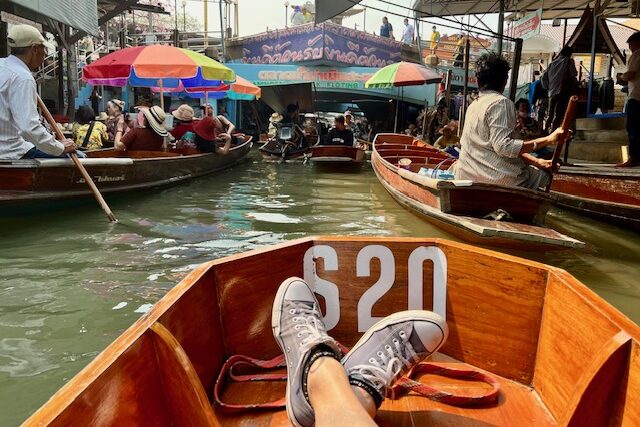
Floating Market near Bangkok. Photo: Traveler Jeff Lonsinger
“Several friends and I volunteered at the Elephant Nature Park in Chiang Mai, Thailand. After our week there, we wanted to spend more time traveling on our own, so we called Dan. Our instructions were minimal: A leisurely pace with some hiking and biking, and small, beautifully designed hotels.
Taking it from there, Dan and his experience planner, Bank, put together a perfect itinerary with just the right amount of activity. They suggested three nights in Chiang Rai, three nights in Siem Reap, Cambodia, and the last three nights in Bangkok. In northern Thailand, we hiked through coffee and tea plantations, through rice paddies, and cherry orchards. A highlight was a visit to the Royal Villa and Gardens in Doi Tung. Learning about Mae Fah Luang, the princess mother who developed this area, was fascinating as well.
Next it was on to Siem Reap, where we visited the UNESCO World Heritage Site Angkor Wat, along with several other temples. The town itself was a surprise, with upscale hotels and sophisticated restaurants. We really enjoyed our visit to Theam’s Gallery, where Cambodian artist Lim Muy Theam and apprentices are reestablishing Khmer art and culture.
In Bangkok we stayed at a lovely small hotel right on the Chao Phraya River and within walking distance of the royal palace. We loved our morning bike ride through neighborhoods and temples in an area of the city not often frequented by tourists. In the evening we enjoyed a tour of the local food scene, with many opportunities to try unusual fare! Fermented fish, water beetles, and live shrimp, if you are brave enough! Our last morning was spent at a floating market about an hour outside of Bangkok. This was very touristy, but a lot of fun… a way of life that we couldn’t have imagined! That evening we celebrated our wonderful adventure with drinks and dinner on the 59th floor of the Banyan Tree Hotel. Dan and Bank created the perfect trip.” —Jeff Lonsinger
Read more reviews of Thailand and Cambodia trips. To get your own WOW trip, start with our trip questionnaire, reached via the black button below.
START A TRIP TO THAILAND AND CAMBODIA
Cambodia & Vietnam: Angkor Wat at sunrise, street food tours, even sand worm pancakes…
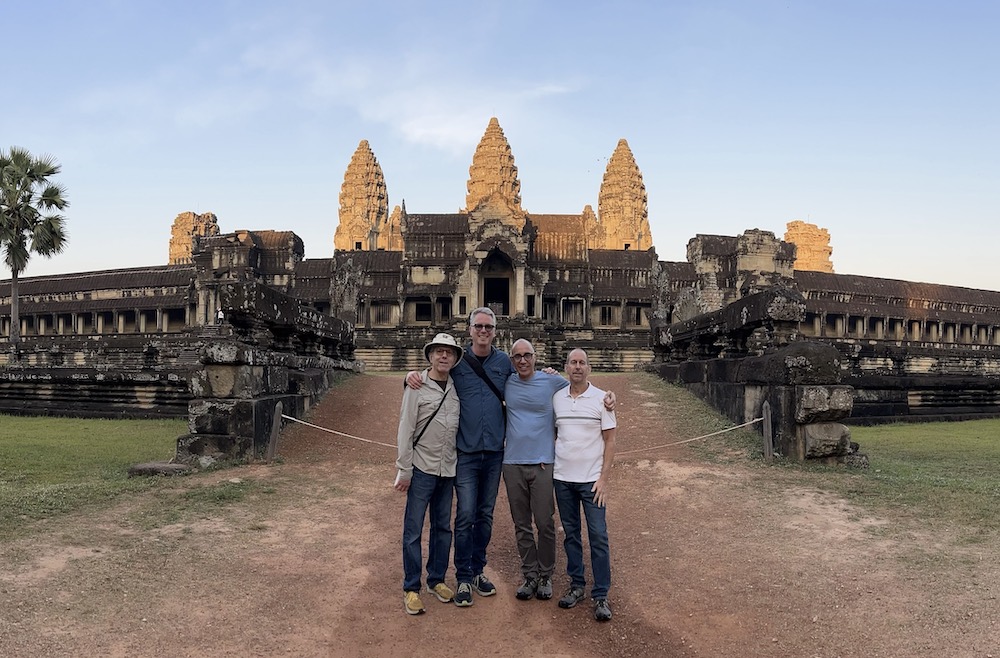
David Wertheimer and friends at Angkor Wat in Cambodia during their WOW trip
“Our trip to Cambodia and Vietnam from January 21st to February 6th, was spectacular. We started in Phnom Penh, and traveled from there to Siem Reap, the Angkor Wat temple complex, Saigon, Cu Chi, Hoi An, Hue, Hanoi and Ha Long Bay. Andy‘s team prepared our itinerary and arranged for personal guides at each of our stops. The guides were knowledgeable, friendly, and provided both historical information and personal stories that placed the horrors of the eras of the Khmer Rouge in Cambodia and the U.S. military activities in Vietnam within the context of our visit and our understanding of current life in both nations.
Our guides also provided us with street food tours that allowed us to sample some of the most unusual dishes we’ve ever eaten. (The sand worm pancakes were delicious!) We had postponed our trip for three years because of COVID, and felt safe and comfortable traveling, especially because the tourist crowds are still minimal. There were multiple “wow,” bucket-list moments, including Angkor Wat at sunrise (get there early!) and Ha Long Bay, to name just two of them.” —David Wertheimer
This trip was arranged by a WOW List candidate. Here’s what that means.
Ask Wendy
Mongolia: photo ops of deserts and steppes, adventures in wildlife spotting…
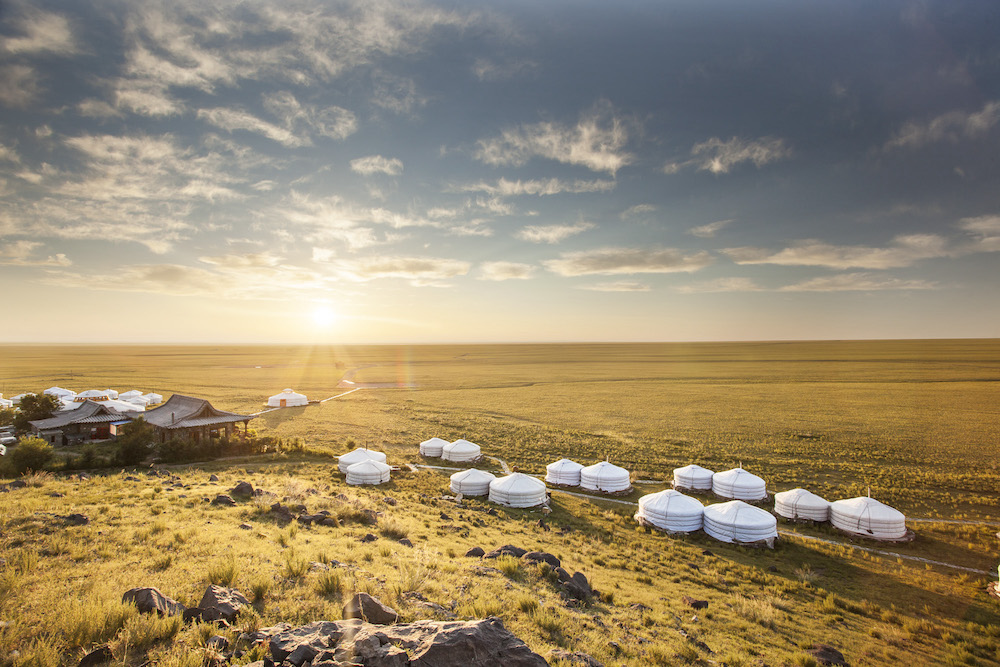
Three Camel Lodge in the Gobi Desert. Photo: Nomadic Expeditions
“What a fantastic trip to Mongolia! As so many other people I knew were fighting the crowds in Europe, Mongolia’s beautiful deserts and steppes were wide open for exploration without the jockeying for position. With my wonderful guide and driver, I spent eight days looping through multiple stunning landscapes on the hunt for photos of wild horse (takhi), Argali sheep, and magnificent birds. Between the nights in the ger by Khustain National Park, the relaxed pace of camping near Ikh Nart, and the wonderful luxury of Three Camel Lodge, I had a fabulous trip and was so grateful to be out in nature after a long pandemic. Mongolia is not for the faint of heart! We did a fair amount of driving, since intra-country flights are not quite back to pre-pandemic levels, but the landscapes were breathtaking and the wildlife spotting was an adventure.” —Katie Stiner
Read more reviews of Mongolia trips. To get your own WOW trip, start with our trip questionnaire, reached via the black button below.
START A TRIP TO MONGOLIA
Be a smarter traveler: Sign up for Wendy’s weekly newsletter to stay in the know. Read real travelers’ reviews, then use the black CONTACT buttons on Wendy’s WOW List to reach out to the right local fixer for your trip.
